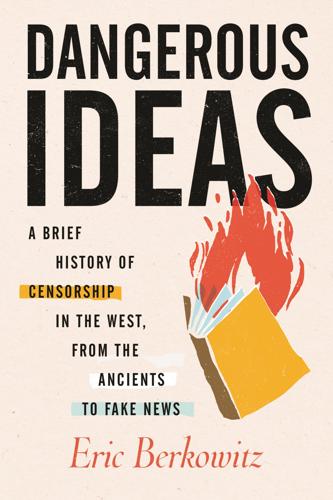
Dangerous Ideas: A Brief History of Censorship in the West, From the Ancients to Fake News
by
Eric Berkowitz
Published 3 May 2021
Qin kept copies of the books he burned, but those who knew the texts best were not spared: hundreds of scholars were buried alive. From that point forward, anyone who criticized Qin’s regime with examples from the past—or even discussed the ideas in the banned books—was executed along with their relatives. Like most political censorship throughout history, observes the scholar Lois Mai Chan, Qin’s book burning “proved to be, rather than a condemnation, a recognition of the power of knowledge.”3 For Qin, security meant dominance not only of the wheels of state but also of the ideas darting through the minds of the governed. Intellectuals in particular were empowered by the forbidden books, which bred seditious thoughts that challenged the First Emperor’s absolute rule.4 As the twentieth-century Chinese writer Lu Xun observed: The statesman hates the writer because the writer sows the seeds of dissent.
…
Questioning whether the stricken populace—many of whom now sat in judgment on him—could grasp the existence of the very gods who were decimating them in such numbers was an outrage. Protagoras was convicted. According to tradition, his writings were collected and set afire in public. If that indeed happened, it was likely the first book burning in Western history. (His personal fate is unclear. Either he was exiled, or, according to another version of events, he fled Athens before the trial and died in a shipwreck.)24 The destruction, intended to eradicate the texts and ideas they contained, was likely also tied to religious customs.
…
On the contrary, the persecution of genius fosters its influence; foreign tyrants, and all who have imitated their oppression, have merely procured infamy for themselves and glory for their victims.34 With the founding of the Roman Empire in 27 BCE, the interests of the state and the head of state merged. As the job of emperor was often risky to one’s life expectancy, speech causing even the most unjustified imperial fear could be framed as treasonous. The earliest examples of Roman book burning concerned the writings and handbooks used by itinerant seers, astrologers, and prophets. The public destruction of these texts, like public executions of criminals, was meant to affirm government power and impart blunt political messages. The job of divining the future (by, for example, analyzing the entrails of animals or evaluating bursts of lightning) and other procedures for taking the gods’ temperature belonged to state-appointed functionaries.
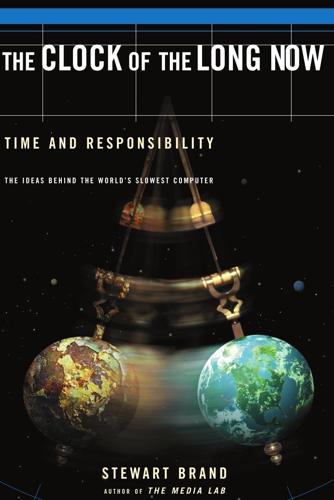
Clock of the Long Now
by
Stewart Brand
Published 1 Jan 1999
Luciano Canfora, The Vanished Library (Berkeley: UC California, 1987), pp. 98-99. :74 A different reason for burning books was originally invented by China’s first great emperor. My best source on Shih huangti’s book burning was one of Time-Life’s excellent Lost Civilizations series, China’s Buried Kingdoms (Alexandria, VA: Time-Life, 1993). The dinner debate is reported on p. 98. :74 The same impulse inspired Hitler’s book-burning ceremonies of May 1933. William L. Shirer, The Rise and Fall of the Third Reich (New York: Simon & Schuster, 1960), pp. 230, 241. :74 The American Revolution of 1776, by contrast, was highly conservative.
…
Instead, his ten-thousand-generation dynasty ended shortly after his death, having lasted fifteen years (221-206 B.C.E.). The Confucian Han dynasty that followed vilified Shih Huang-ti, and he remains largely a villain in Chinese history. Yet this did not prevent Mao Tse-tung from attempting a similar erasure with his Cultural Revolution in 1966, to disastrous effect. The same impulse inspired Hitler’s book-burning ceremonies of May 1933. “The German form of life is definitely determined for the next thousand years,” he declared. “There will be no other revolution in Germany for the next thousand years.” In a square by the University of Berlin twenty thousand books were burned. Other cities did the same.
…
The BBC, on a housecleaning binge a few years back, tossed out some of its video archives considered trivial and has been gnashing its teeth over that cultural loss ever since. The largest and heaviest book in the world is inscribed on 14,300 large stone tablets concealed in caves near the Yunju monastery in Beijing Province, China. In a time of book burnings, 00605 C.E., a monk set about preserving the Buddhist scriptures on stone. The work continued for a thousand years, and then the entire trove was hidden in 01644 C.E. The hoard is indeed valuable for studying the history of Buddhist thought, but probably we would value the stones more if the monks had simply recorded the weather and what they were eating.
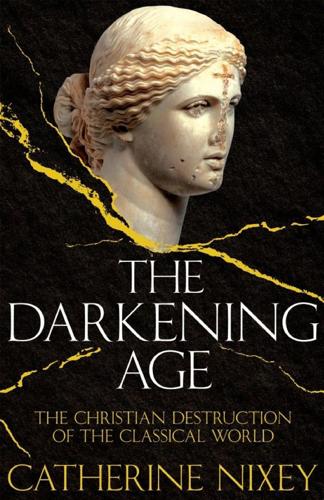
The Darkening Age: The Christian Destruction of the Classical World
by
Catherine Nixey
Published 20 Sep 2017
In Alexandria, Antioch and Rome, bonfires of books blazed and Christian officials looked on in satisfaction. Book-burning was approved of, even recommended by, Church authorities. ‘Search out the books of the heretics . . . in every place,’ advised the fifth-century Syrian bishop Rabbula, and ‘wherever you can, either bring them to us or burn them in the fire.’2 In Egypt at around the same time, a fearsome monk and saint named Shenoute entered the house of a man suspected of being a pagan and removed all his books.3 The Christian habit of book-burning went on to enjoy a long history. A millennium later, the Italian preacher Savonarola wanted the works of the Latin love poets Catullus, Tibullus and Ovid to be banned while another preacher said that all of these ‘shameful books’ should be let go, ‘because if you are Christians you are obliged to burn them’.4 Books had been burned under non-Christian emperors – the controlling Augustus alone had ordered the burning of over two thousand books of prophetic writings, and had exiled the misbehaving poet Ovid – but now it grew in scope and ambition.
…
As Samuel Johnson would put it, pithy as ever: ‘The heathens were easily converted, because they had nothing to give up.’16 He was wrong. Many converted happily to Christianity, it is true. But many did not. Many Romans and Greeks did not smile as they saw their religious liberties removed, their books burned, their temples destroyed and their ancient statues shattered by thugs with hammers. This book tells their story; it is a book that unashamedly mourns the largest destruction of art that human history had ever seen. It is a book about the tragedies behind the ‘triumph’ of Christianity. A note on vocabulary: I have tried to avoid using the word ‘pagan’ throughout, except when conveying the thoughts or deeds of a Christian protagonist.
…
After hearing this, Amantius was overcome by zeal and promptly ‘conducted an inquisition [and] found that the majority of the first citizens of the city and many of its inhabitants had been involved in paganism, Manicheaism, astrology, [Epicureanism], and other gruesome heresies. These he had detained, thrown in prison, and having brought together all of their books, which were a great many, he had these burnt in the middle of the stadium.’13 What did the books burned on such occasions really contain? Doubtless some did contain ‘magic’ – such practices were popular prior to Christianity and certainly didn’t disappear with its arrival. But they were not all. The list given in the life of St Simeon clearly refers to the destruction of books of Epicureanism, the philosophy that advocated the theory of atomism.

The Card Catalog: Books, Cards, and Literary Treasures
by
Library Of Congress
and
Carla Hayden
Published 3 Apr 2017
Classification: LCC Z733.U6 C36 2017 | DDC 025.3/13—dc23 LC record available at https://lccn.loc.gov/2016017476 Design by Brooke Johnson Typeset in Poynter Old Style, Benton Sans, and Prestige Elite Front of case: Photograph by Shawn Miller Chronicle Books LLC 680 Second Street San Francisco, California 94107 www.chroniclebooks.com Contents 7 Foreword 9 Introduction 11 Chapter 1 Origins of the Card Catalog 12 Catalogs of Clay 12 The Library of Alexandria’s Great Catalog—The Pinakes 15 Catalogs of the Far and Middle East 17 Medieval Libraries, Movable Type, and Gessner’s Scheme 21 Vive La Revolution . . . and Card Catalogs 45 Chapter 2 The Enlightened Catalog 46 Eleven Hair Trunks and A Case for the Maps 48 The War of 1812, A Book Burning, and A New Library 81 Chapter 3 Constructing a Catalog 82 The Card Catalog Takes Shape 83 The Library Bureau 101 Chapter 4 The Nation’s Library and Catalog 102 Chaos in the Capitol 104 Ten First Street 106 Facing Congress 108 Starting From Scratch 110 Universal in Scope, National in Service 145 Chapter 5 The Rise and Fall of the Card Catalog 146 An Egalitarian Effort 148 Drowning in Cards 151 The March to Marc 154 Cards as Art Cutting the Gordian Knot 220 Acknowledgments 221 Select Bibliography 222 Image Credits 223 Index People working at desks in the Main Reading Room of the Library of Congress, circa 1940.
…
It may seem peculiar that book prices were listed, but because the Library represented such a significant investment for the newly established country, Congressmen could only check books out by signing a note promising to return them—or pay for them in full. Letter from Cadeil & Davies, London booksellers, addressed to W. Bingham, esq., and Robert Wain, esq., 1800. An invoice for the first consignment of books that the Library of Congress purchased with its $5,000 appropriation, approved on April 24, 1800. THE WAR OF 1812, A BOOK BURNING, AND A NEW LIBRARY As the British fleet sailed up the Pawtuxet River on August 22, 1814, to attack a vulnerable Washington, D.C., an intrepid J. T. Frost frantically searched the deserted capital for a carriage he could use to secure the Library’s collection, which now numbered some 3,000 volumes.

China: A History
by
John Keay
Published 5 Oct 2009
The [only] books to be exempted are those on medicine, divination, agriculture and forestry.16 The emperor concurred; and so began the great bamboo-book-burning of 213 BC. It was followed, according to later sources, by a purge in which some 460 scholars were either executed or buried alive. A far-fetched explanation offered for this second assault may simply disguise the need to halt any oral, as well as written, transmission of the texts. To a people who distinguished themselves from others on the basis of their historical awareness and essentially literary culture, the book-burning and the persecution of scholars were devastating blows. Popular sentiment would never forget them, scholarship never forgive them.
…
Within the chamber, there may still reign that minutely regulated peace and order on which the First Emperor so prided himself in his inscriptions; but without, all semblance of decorum had been shattered almost before he was laid to rest. 4 HAN ASCENDANT 210–141 BC QIN IMPLODES NEARLY ALL THAT IS KNOWN OF the First Emperor and his book-burning chancellor comes from a book. In a culture as literary and historically minded as China’s, biblioclasts needed to beware; books had a way of biting back, and sure enough, both emperor and chancellor would be badly bitten. Ostensibly Sima Qian’s Shiji, one of the most ambitious histories ever written, was a direct response to the First Emperor’s assault on scholarship.
…
According to Sima Qian, at the first hint of indisposition Meng Yi, the chief minister and brother of the wall-building Meng Tian, had been sent post-haste from Shandong to organise ‘sacrifices to the mountains and rivers’, presumably for the emperor’s recovery. That left the imperial cavalcade in the charge of Li Si, the book-burning chancellor, assisted by Zhao Gao, a eunuch who held the important post of chief of the imperial carriages, plus Prince Huhai, the emperor’s youngest son. When the emperor expired just days after Meng Yi’s departure, Li Si proved uncharacteristically indecisive. Instead it was Zhao Gao who took the initiative.
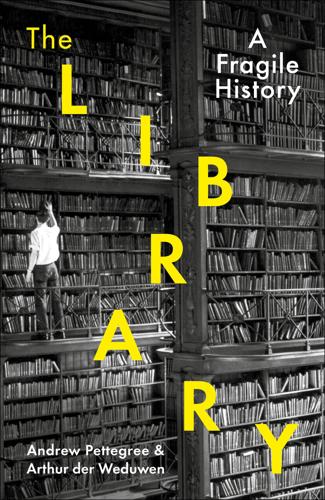
The Library: A Fragile History
by
Arthur Der Weduwen
and
Andrew Pettegree
Published 14 Oct 2021
One clergyman in Cartmel, Lancashire, noted dryly in a memorandum that ‘I burned all the books’.25 This wave of destruction may have encompassed many more books than intended: it is understandable that not everyone tasked with book burning could tell the difference between secular manuscripts of historical importance and works of Catholic theology. Many church libraries suffered multiple book burnings. To propagate the Reformation, royal injunctions in the 1530s and 1540s had specified that each parish was to acquire at least one Protestant Bible, as well as the Paraphrases of Erasmus. These, and other Protestant books bought for parish churches, were prime targets when Edward VI was succeeded by his Catholic half-sister, Queen Mary, in 1553.
…
The first Roman index also included a category of heretical printers, sixty-one in all, whose entire output, regardless of content, was suspect. Good Christians were supposed to surrender copies of these books from their libraries, while the production, sale and ownership of all texts listed in the index was strictly forbidden. Publication of the first papal index was accompanied by substantial book burning, but mostly in Rome itself. Many secular authorities elsewhere in Italy were hesitant to put the full force of the index into effect. In Florence, Duke Cosimo de’ Medici forbade the monks of San Marco from burning any books in their library which his predecessors had donated. Future indices relaxed the most sweeping prohibitions and placed more emphasis on the capacity of local inquisitors and bishops to grant exemptions for certain individuals to own dangerous books.
…
These libraries functioned as archival storehouses, as repositories of knowledge and as meeting places. They gave shape to competing churches and fostered the spiritual health of their members. To destroy these institutions was to take one further step towards restoring unity in Christendom, the ultimate goal of every denomination, yet not all destruction needed to be as overt as book burnings. Locking up a library, reducing its contents to waste paper, or expurgating texts: these were the varied tools used to limit access to undesirable literature. In time, the missionary zeal of the separated Protestant and Catholic churches would inaugurate a new age of library building, with impressive results, but in the first two generations of the Reformation this was still some way in the future.

The Book: A Cover-To-Cover Exploration of the Most Powerful Object of Our Time
by
Keith Houston
Published 21 Aug 2016
Inroads,” Reuters, October 8, 2012, http://www.reuters.com/article/2012/10/08/us-usa-china-huawei-zte-idUSBRE8960NH20121008. 29. von Hagen, “Paper and Civilization,” 313; Leor Halevi, “Christian Impurity versus Economic Necessity: A Fifteenth-Century Fatwa on European Paper,” Speculum 83, no. 4 (2008): 917, doi:10.1017/S0038713400017073. 30. Hunter, Papermaking, 473. 31. “Koran 29:46 (Yusuf Ali Version),” n.d.; Hans J. Hillerbrand, “On Book Burnings and Book Burners: Reflections on the Power (and Powerlessness) of Ideas,” Journal of the American Academy of Religion 74, no. 3 (2006): 602–3, doi:10.1093/jaarel/lfj117; “Reconquista.” 32. Robert I. Burns, “The Paper Revolution in Europe: Crusader Valencia’s Paper Industry: A Technological and Behavioral Breakthrough,” Pacific Historical Review 50, no. 1 (1981): 1–30; “Alfonso X (king of Castile and Leon),” Encyclopaedia Britannica, accessed December 18, 2013, http://www.britannica.com/EBchecked/topic/14725/Alfonso-X. 33.
…
Chester, 265 Belgium, 35 Bembo, Bernardo, 320 Bembo (typeface), 320 Benedict, Saint, 165 Benedict VIII, Pope, 28 Berbers, 53 Bewick, Thomas, 227 Bible, 106 Gutenberg edition of, 109, 114–23, 124–25, 145, 199, 229, 314, 316–17, 318, 324 Biblia pauperum (Pfister), 200, 201 bibliographies, 329 biblion (scroll), 250 Bibliotheca historica (Diodorus), 89 bibliotheke, 252 Bibliothèque nationale de France, 245, 289 biblos (papyrus), 250 Billings, John Shaw, 146–47 Birds of America, The (Audubon), 213, 215–16, 217, 218, 225–26, 229 Birth of the Codex, The (Roberts and Skeat), 277 Bi Sheng, 110–11, 112 Black, William, 308 Black Death, 63 blackletter (Gothic textura), 99, 107, 123, 318 black tigers (hei laohu), 180 blind tooling, 303–4, 331 blockbooks, 199 Boas, Franz, 261 boats, of papyrus, 6, 7 Bologna, Italy, 323 Boner, Ulrich, 199 Boniface, Saint, 297–98 bookbinding, 283–309, 299, 303 backing process in, 301–2, 308 case binding, 308, 331 Coptic stitching in, 292–94, 293, 300–301, 302–3, 306 covers in, see covers double-cord, 296–98, 297, 330–31 dust jackets and, 304 endpapers in, 300, 308 glued, 308–9, 310, 331 headbands (endbands) in, 300–301 innovations in, 299–306, 308–9, 310 Islamic, 302–3 mechanization of, 308, 310 multiple gatherings in, 290–95 Nag Hammadi codices and, 279–81, 282 paperbacks, 309 paper sizes and, 323–28 perfect binding, 309 Ragyndrudis Codex and, 296–97 St. Cuthbert Gospel and, 284–88, 291–93, 294, 295–96, 298, 300 single gatherings in, 288–89 book industry, growth of, 69–70 book louse, 51n–52n Book of Agriculture (Wang Zhen), 111 Book of Durrow, 161 Book of Kells, 161–64, 163, 169–70 bookplate, i books: burning of, 56, 58 interdependence of paper and, 35–36, 50 mass deacidification of, 71–72 mass printing of, 128 paged, see codex, codices books, modern: trimmed edges of, 281 Books of Hours, 174 Books of the Dead, 20, 157–58, 159, 245, 248–49 Botticelli, Sandro, 208 Bouchard, Pierre, 90 Bouland, Ludovic, 305–6, 307 British Library, 28, 72, 286 British Museum, 90, 249 Bruce, David, 134–35 brushes, 84, 85, 88, 94, 180, 186, 242 Brussels, 35, 290 Brussels Madonna, 193 bubonic plague, 102, 105 Buchdrucker, Der (The Printer; Amman), 119 Buddhism: in China, 180–81, 183–84 in Japan, 181–83 bullae, 80, 82 bullet, 14 Bullock, William, 135 Burgkmair, Hans, 197–98, 197 burins, 206–7 Burke, William, 304–5 “Burke’s Skin Pocket Book,” 305 Buxheim Saint Christopher, 194, 303 Caesar, Julius, 256 memorandum books of, 273–74 Cai Lun, 11, 39–49, 45, 68, 83, 177, 178 and invention of paper, 41–49, 50–51 suicide of, 48 Cairo Museum, 20 Çakir, Mehmet, 256 calami (pens), 94 calfskin, xvii, 31, 123, 304 calligraphy, 113 Cambridge University, 62 Canaan, Canaanites, 92–93 caoutchouc (rubber), 308–9, 310 caption, 5 carbon, in ink, 85, 95, 97, 122, 186 Carchemish, 20 Carpi, Italy, 316 cartonnage, 66, 282 case binding, 308, 331 Castaldi, Panfilo, 190, 191 Cathach, An, 160–61 Cathars, 59, 60 Catherine of Siena, Saint, 193 Catholic Church, woodblock printing and, 192–93 Census, US, 145–46, 152 chalk, 74 Champollion, Jean-François, 91 Chang’an, China, 181, 187 chapter number, 3 chapter title, 3 Charlemagne, 53, 165–66, 299, 318 Charles I, king of England, 323 Charles Martel, 53 chase, 121, 128, 200 Chelsea Manufacturing Company, 67 Chen Sheng, 38 chiaroscuro, 197–98, 197 Chicago Tribune, 144 China: Buddhism in, 180–81, 183–84 copper coinage in, 176, 187 ink in, 112–13 invention of paper in, 36–37, 41–49, 43, 44, 45, 50–51, 68, 113, 177, 178–79 Japanese emulation of, 181 Marco Polo in, 176–77 movable type and, 109–14, 186 orihons in, 266, 267, 269–70 paper money invented in, 176–77, 180, 187, 188, 189, 191 printing invented in, 177–81, 183–86 rubbings in, 179–80 woodblock printing in, 183–86 writing surfaces used in, 37–38 chi rho, 163 chlorine, in papermaking, 70 Christianity, Christians, 271 book burning by, 56, 58 in Ireland, 156–57 papyrus linked to heathenism by, 287 parchment adopted by, 27–28, 56 spread of, 164–65 Christopher, Saint, 192, 193 chromolithograph, 226 chu (Broussonetia papyrifera; paper mulberry), 47, 49 in papermaking, 41–42, 46, 68 Church, William, 139, 141 cinnabar, 172 clay tablets, xvn, xvi, 79–80 Clemens, Samuel (Mark Twain), 66, 151 Paige Compositor and, 136–38, 138, 148 Cleopatra VII, pharaoh, 88 Clephane, James O., 140–41 Clymer, George E., 131 codex, codices, xv, xvn–xvin, 260, 297 binding of, see bookbinding changing market for, 310–11 collections of correspondence as origin of, 270–71 deckle-edged, 314 etymology of, 294–95 Golden Ratio and, 324 multiple-gathered, 311–12 orihons and, 266 of paper, 302–3, 312 of papyrus, 261–65, 272, 276–82, 288–91, 302–3, 311, 312–13 of parchment, 272–77, 284–88, 291–93, 311–12 in Roman Egypt, 261–65, 270 vs. scrolls, efficiency of, 253–54 single-gathered, 311 sizes of, 311–28, 314, 331 unopened edges in, 313–14 Codex Leicester, 284 Codex Peresianus, 268 codicologists, 277, 281–82, 312, 318 Coele-Syria, 21, 23 coffee-table books, xv colophons, 320, 329–31 Columba, Saint, 161, 164 Columbia Jay, 217 Columbian press, 130, 131 Committee on the Simplification of Paper Sizes, 326–27 composing stick, 120–21, 135, 136 compositors, 119–21, 120, 135 computers, xv and lithography, 236–37 typesetting and, 152 Confucianism, 185 Conrad von der Rosen, 211, 212 Constantinople, 155 contents page, xi copper, 118, 122 copper acetate, 259 copperas (ferrous sulfate), 97, 100–101 copperplate printing, xvii aquatint process and, 216, 217, 218, 230 engraving and, 203–5, 206, 207–10, 207, 215–16, 220 etching and, 211–13, 216, 230 Mansion and, 205 copper sulfate, 97 Coptic language, 91 Coptic Museum, Cairo, 277, 279, 289 Coptic stitching, 292–94, 293, 296, 300–301, 302–3, 306 Copts, 278, 294, 302–3 copyright, xvi copyright page, 73–74 correctors, 170 correspondence, collections of, as origin of codices, 270–71 cotton, 36, 41, 63 couching, in papermaking, 44, 46, 61, 64 counterpunch, 115n covers, 295–96, 331 gold leaf on, 304 of human skin, 304–5 leather, 303–4 pasteboard, 302–3 reused leaves in, 302 in St.
…
Cuthbert Gospel and, 284–88, 291–93, 294, 295–96, 298, 300 single gatherings in, 288–89 book industry, growth of, 69–70 book louse, 51n–52n Book of Agriculture (Wang Zhen), 111 Book of Durrow, 161 Book of Kells, 161–64, 163, 169–70 bookplate, i books: burning of, 56, 58 interdependence of paper and, 35–36, 50 mass deacidification of, 71–72 mass printing of, 128 paged, see codex, codices books, modern: trimmed edges of, 281 Books of Hours, 174 Books of the Dead, 20, 157–58, 159, 245, 248–49 Botticelli, Sandro, 208 Bouchard, Pierre, 90 Bouland, Ludovic, 305–6, 307 British Library, 28, 72, 286 British Museum, 90, 249 Bruce, David, 134–35 brushes, 84, 85, 88, 94, 180, 186, 242 Brussels, 35, 290 Brussels Madonna, 193 bubonic plague, 102, 105 Buchdrucker, Der (The Printer; Amman), 119 Buddhism: in China, 180–81, 183–84 in Japan, 181–83 bullae, 80, 82 bullet, 14 Bullock, William, 135 Burgkmair, Hans, 197–98, 197 burins, 206–7 Burke, William, 304–5 “Burke’s Skin Pocket Book,” 305 Buxheim Saint Christopher, 194, 303 Caesar, Julius, 256 memorandum books of, 273–74 Cai Lun, 11, 39–49, 45, 68, 83, 177, 178 and invention of paper, 41–49, 50–51 suicide of, 48 Cairo Museum, 20 Çakir, Mehmet, 256 calami (pens), 94 calfskin, xvii, 31, 123, 304 calligraphy, 113 Cambridge University, 62 Canaan, Canaanites, 92–93 caoutchouc (rubber), 308–9, 310 caption, 5 carbon, in ink, 85, 95, 97, 122, 186 Carchemish, 20 Carpi, Italy, 316 cartonnage, 66, 282 case binding, 308, 331 Castaldi, Panfilo, 190, 191 Cathach, An, 160–61 Cathars, 59, 60 Catherine of Siena, Saint, 193 Catholic Church, woodblock printing and, 192–93 Census, US, 145–46, 152 chalk, 74 Champollion, Jean-François, 91 Chang’an, China, 181, 187 chapter number, 3 chapter title, 3 Charlemagne, 53, 165–66, 299, 318 Charles I, king of England, 323 Charles Martel, 53 chase, 121, 128, 200 Chelsea Manufacturing Company, 67 Chen Sheng, 38 chiaroscuro, 197–98, 197 Chicago Tribune, 144 China: Buddhism in, 180–81, 183–84 copper coinage in, 176, 187 ink in, 112–13 invention of paper in, 36–37, 41–49, 43, 44, 45, 50–51, 68, 113, 177, 178–79 Japanese emulation of, 181 Marco Polo in, 176–77 movable type and, 109–14, 186 orihons in, 266, 267, 269–70 paper money invented in, 176–77, 180, 187, 188, 189, 191 printing invented in, 177–81, 183–86 rubbings in, 179–80 woodblock printing in, 183–86 writing surfaces used in, 37–38 chi rho, 163 chlorine, in papermaking, 70 Christianity, Christians, 271 book burning by, 56, 58 in Ireland, 156–57 papyrus linked to heathenism by, 287 parchment adopted by, 27–28, 56 spread of, 164–65 Christopher, Saint, 192, 193 chromolithograph, 226 chu (Broussonetia papyrifera; paper mulberry), 47, 49 in papermaking, 41–42, 46, 68 Church, William, 139, 141 cinnabar, 172 clay tablets, xvn, xvi, 79–80 Clemens, Samuel (Mark Twain), 66, 151 Paige Compositor and, 136–38, 138, 148 Cleopatra VII, pharaoh, 88 Clephane, James O., 140–41 Clymer, George E., 131 codex, codices, xv, xvn–xvin, 260, 297 binding of, see bookbinding changing market for, 310–11 collections of correspondence as origin of, 270–71 deckle-edged, 314 etymology of, 294–95 Golden Ratio and, 324 multiple-gathered, 311–12 orihons and, 266 of paper, 302–3, 312 of papyrus, 261–65, 272, 276–82, 288–91, 302–3, 311, 312–13 of parchment, 272–77, 284–88, 291–93, 311–12 in Roman Egypt, 261–65, 270 vs. scrolls, efficiency of, 253–54 single-gathered, 311 sizes of, 311–28, 314, 331 unopened edges in, 313–14 Codex Leicester, 284 Codex Peresianus, 268 codicologists, 277, 281–82, 312, 318 Coele-Syria, 21, 23 coffee-table books, xv colophons, 320, 329–31 Columba, Saint, 161, 164 Columbia Jay, 217 Columbian press, 130, 131 Committee on the Simplification of Paper Sizes, 326–27 composing stick, 120–21, 135, 136 compositors, 119–21, 120, 135 computers, xv and lithography, 236–37 typesetting and, 152 Confucianism, 185 Conrad von der Rosen, 211, 212 Constantinople, 155 contents page, xi copper, 118, 122 copper acetate, 259 copperas (ferrous sulfate), 97, 100–101 copperplate printing, xvii aquatint process and, 216, 217, 218, 230 engraving and, 203–5, 206, 207–10, 207, 215–16, 220 etching and, 211–13, 216, 230 Mansion and, 205 copper sulfate, 97 Coptic language, 91 Coptic Museum, Cairo, 277, 279, 289 Coptic stitching, 292–94, 293, 296, 300–301, 302–3, 306 Copts, 278, 294, 302–3 copyright, xvi copyright page, 73–74 correctors, 170 correspondence, collections of, as origin of codices, 270–71 cotton, 36, 41, 63 couching, in papermaking, 44, 46, 61, 64 counterpunch, 115n covers, 295–96, 331 gold leaf on, 304 of human skin, 304–5 leather, 303–4 pasteboard, 302–3 reused leaves in, 302 in St.
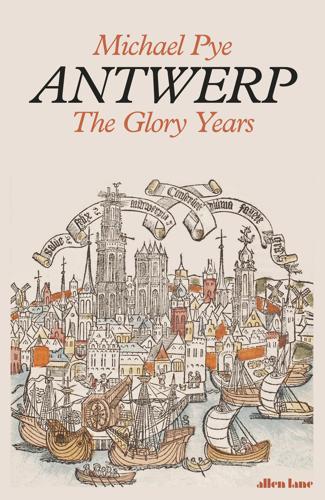
Antwerp: The Glory Years
by
Michael Pye
Published 4 Aug 2021
Aelst, Pieter Coecke van, 164 Aemilianus, Roman Emperor, 39 Aertsen, Pieter, 155–7, 165–6, 172–3, 174 Africa Africans living in Antwerp, 99 Charles V besieges Tunis (1535), 69 gold from, 7, 15, 97, 98, 125 ships from, 2, 32 and slave trade, 7, 8, 15, 34, 98–9 spices/plants from, 33, 67, 69, 97 trade routes south across the Sahel, 98, 101 Alba, Duke of, 3, 182, 186, 191, 199, 200, 211, 217 bronze effigy of, 201, 205 calls Antwerp ‘Babylon,’ 12, 30, 150 campaign against Antwerp’s past, 201, 205 Alberti, Leon Battista, De re aedificatoria, 200 alchemy and magic, 61–3, 68 alcohol, 4, 115, 210 beer business, 162, 170–2, 205 wine trade, 31, 74, 83, 169, 215 Alexandria, 101 the Americas, 1–2, 8, 43, 69, 152, 174, 187 Amsterdam, 9, 19, 58, 63, 171, 173–4, 184 ideas move north from Antwerp, 8, 158, 161, 216–17 Anabaptists, 149, 188, 211, 217 Ancona, 93, 94, 100 animals, domestic, 2, 17, 66, 110, 140, 155, 157 Anjou, Duke of, 180, 207–9, 212 Annabon, 102 Antwerp Africans living in, 99 book burning in, 48, 49, 50 as celebrity, 3, 4, 7–8 as centre of news and rumour, 4, 7, 54–9, 82–3, 175 city as idea, 5, 6–7, 8, 21, 25, 26, 27–31, 34–41 count of Flanders seizes (1356), 32–3 and Duke of Anjou, 180, 207–9, 212 English connection, 15, 31, 32, 33–4, 42, 45–6, 51–2, 53, 150, 208 Fugger newsletters in, 55–6 growth in late medieval period, 1–2, 4, 7, 14–15 iconoclasm (1566), 6, 183–4, 186, 189, 190 the Joyous Entry (1549), 15, 18, 34, 82, 148–54, 180, 184, 207 legends/fantasy history, 6, 28, 30–1, 35–8 and the Ottoman Turks, 101, 211–13, 216 and Ottoman-Hapsburg rivalry, 100, 115 pragmatic tolerance in, 4–5, 78, 100, 174, 184, 188, 189, 204 privileges from Emperor, 16, 148, 149 Protestant ‘exodus’ (from 1567), 191, 205 sheltered anchorage at, 2 and slave trade, 7, 8, 15, 34, 98–9 stories of street life, 40, 89–92, 94 two Antwerps in Civitates Orbis Terrarum, 199, 208 van Rossum’s siege (1542), 13–14, 23–5, 39, 45, 167–8 violence of mutineers in Antwerp (1576), 12, 14, 39, 203–5 see also built environment/urban development of Antwerp; foreign merchants in Antwerp; governance of Antwerp; historical identity of Antwerp; social structure of Antwerp Antwerp, streets/districts Arenbergstraat, 18 Augustijnenstraat, 72 Borzestraat, 118, 159 Camerstraat, 59 Groenplaats, 22 Grote Markt, 9, 14, 18, 22, 43, 82, 118, 151–2, 153–4, 172, 204 Heilige Geeststraat, 8–9, 162, 163 Hochstetterstraat, 59 Hofstraat, 58 Hoogstraat, 58 Huidevetterstraat, 159 Ijzerenbrug, 59 Jodenstraat, 159 the Kipdorp, 25, 27, 191 Koningstraat, 158–9 Lepelstraat area, 89–90 Lombardstraat, 159 Maalderijstraat, 58 the Meir (market), 18, 118, 164 Nieuwstad (new town), 66, 169, 171, 172 Noordstraat., 159 Ossenmarkt, 155, 158 Sint Katelijnevest, 23 Twaalfmaandenstraat, 57, 117–18, 145 Vrijdagmarkt, 8, 58, 163, 181 Wolstraat, 58, 119 Aquinas, Thomas, 128 archery guilds, 164–5, 172 architecture baroque buildings of Counter-Reformation, 5, 9, 214–15, 216 Hanseatic style, 135 military, 61, 167–8, 199–201, 214 the new Beurs building, 16, 117–20, 129, 131, 213 of the new weigh house, 161–2 pentagon forts, 200 ready-made details, 134 Vleeshuis (butchers guildhall), 157, 164 archives and records, 11–12 losses in 1576 fire, 12, 14, 39, 205 vonnisboeken of the griffiers, 38–40 Ariosto, Ludovico, Orlando Furioso, 178 Aristotle, 35, 200 Arnolfini, Iacopo, 125 art Aertsen’s The Meat Stall, 155–7, 165–6, 172–3 Antwerp as school of style, 134–7, 138, 139 Antwerp market, 132–4, 135–7, 139 art dealers, 131–2, 133 artists’ market at Beurs (schilderspand), 131, 132 artists’ supplies, 60–1, 131 brand names based on artists’ reputations, 135–7, 155 commodification of, 5, 130, 131–9 of Counter-Reformation, 214–15, 216 Dürer in Antwerp, 60–1, 98, 131 female painters, 77 Greek notion of rhopography, 156 Guild of St Luke, 77, 132, 177 Italian tradition, 137–8, 139, 196 Italian versus Flemish disputes, 137–8 mannerists, 137 as mark of status, 10–11, 27–8, 44, 132–3 Netherlandish, 95–6, 133–7, 138, 139, 164, 196 old art market burned down, 204 the painter as economic asset, 138–9 production methods, 135–7, 155 ready-made pillars and balconies, 133–4 smashing of altar art, 206 and storytelling, 155–6 tapestry-makers, 164–5, 170 travelling craftsmen, 134–6 Ascham, Roger, 44–5, 197 de Assa, Fernando, 123 Babylon, 12, 28, 30, 36–8, 150 Back, Frans, 90 Badoaro, Andrea, 210 Badoero, Federico, 3, 4 Bandello, Matteo, Bishop of Agen, 7, 83–5, 89 Barlandus, Adrianus, 35 Baruzeel, Jan, 131–2 Basel, 38, 43, 44, 55, 93 Baudeloo, monks of, 159 Bayfield, Richard, 47 beer business, 162, 170–2, 205 Beham, Sebald, 28 bells, great, 13–15, 16–17, 24, 119, 203–4 Benoist, René, 180 Berchem, Arnold van, 20 Bergen, Gérard van, De pestis praeservatione libellus, 64 Bergen op Zoom, 32, 34 de Berlaimont, Noël, 80, 81 Bertels, Bartholomeus, 59 Beuckelaer, Joachim, 156 the Beurs (Exchange) and African trade, 101 artists’ market at (schilderspand), 131, 132 bell towers, 16, 118 burns down (1584), 213 in early seventeenth-century, 218 and Guicciardini, 118, 119–20, 128–9, 180 at heart of new financialization, 128–9 imitation of in Northern Europe, 129, 134, 213 new building, 16, 23, 30, 34, 117–22, 129, 131, 160, 165, 216 old building, 54, 59, 117, 118 and plague regulations, 65 printed news-sheets, 57–8 Beyerlinck, Ruth, 73–4 the Bible Calvinist Geneva version, 180 Coverdale’s Bible in English, 45 dancing in, 142 in English, 7, 45, 46–52, 60 Hebrew, 60, 179 Plantin’s Polyglot Bible, 60, 174–5, 179, 180, 185, 202 Tyndale’s Bible in English, 47–52 Bijns, Anna, 78 Binck, Jacob, 134 Boendale, Jan van, 73 Boethius, 6 Boisot, Dr, 111–12 Bomberg, Daniel, 180 Bomberghen, Cornelis van, 181 Bonrizzo, Luigi, 210 books/literature book burning, 48, 49, 50 books of maps, 192, 195, 198–9 Chambers of Rhetoric (De Bloeyende Wijngaerd), 72, 78, 189, 216 Chronicle of Brabant, 35 as contraband, 47 esoteric/mystical texts, 8, 61–3, 177 female writers, 78 Frankfurt Fairs, 65, 175, 177, 179, 181, 192, 193–4 Index of Forbidden Books, 63 medical, 60, 63–4, 68, 70–1, 179 of Ortelius, 6–7, 45, 176, 179–80, 193, 197, 198, 205, 218 of Peter Martyr, 188 religious exports to England, 7, 46–7, 48–50, 60 schoolbooks, 72, 75–6, 81, 141 smuggling of, 47 tafelspelen (plays), 29 to teach languages, 79–81 Turchi’s chair in, 84 Wickram’s depictions of Antwerp, 7, 89, 91–2, 94 work of Bandello, 83–5, 89 see also publishing and printing Borde, François de la (Maître Jacques), 54 Borgerhout, botanical garden, 69 Bosch, Hieronymus, 22, 95–6 Brabant alliance with Holland and Zeeland (1576), 205 Marino Cavalli on cities of, 2 and English wool, 15, 31, 32, 33–4, 42, 45–6 gardens of, 67–8, 69–71, 87 move to the local in history, 34–5 music of, 140–1, 142, 143–7 privileges to foreign merchants, 32, 51–2, 53 trade fairs, 2, 4, 15, 32, 58 see also Antwerp Brabant, Dukedom of, 16, 35 Brabo (Roman hero), 30, 31 Braun, Georg, 198 Brazil, 1–2, 102 breweries, 171–2, 205 brickworks, 167 Bruegel, Jan, 215 Bruegel, Pieter, 27, 28, 132, 157, 191, 192, 196 The Months, 27–8 The Tower of Babel (first version), 28, 36–7 The Tower of Babel (second version), 37 Bruges conflict with Maximilian, 33 Huis Craenenburg, 33 loss of business to Antwerp, 2, 15, 31–4, 42, 84, 97 and the Medici, 31 as old financial hub, 31, 32, 33 Portuguese feitoria in, 97 Zwin silts up, 33 Brussels, 2, 36, 37, 164, 187 Bruto, Giovanni Michele, 178 Budé, Guillaume, 44 built environment/urban development of Antwerp absence of documents/records, 11, 12 baroque buildings of Counter-Reformation, 5, 9, 214–15, 216 bricks, 26, 61, 161, 162, 167, 169 building regulations, 22–3, 25–6 buying and selling of property/land, 158–60 and Calvinist regime, 23, 66, 205, 206 Cammerport bridge, 63 canal building, 169, 170 civic/municipal buildings, 12, 14, 18, 34, 117, 135 clayfields of Hemiksem, 167 Croneburge tower, 205 fire regulations and risk of wooden buildings, 22–3 geography of trade/markets, 58–9, 63, 117–19 Golden Angel house, 63 great citadel, 199–200, 203, 205, 208, 214 high towers in merchants’ houses, 9, 59, 117 Houte Eeckhof (civic warehouse), 160, 161 hovenkwartier (district of courtyards), 163 new Beurs as civic monument, 117 old art market (pand), 204 open spaces, 18, 26, 161–2, 163 Otto II’s castle, 31 quality of streets/roadways, 18, 163 rules on animals, 17 Schoonbeke’s reshaping of city, 158–65, 167, 169–70, 171–2 streets of old city, 9, 17–18, 22–3, 26, 163 trade as remaking city’s space, 29 Vleeshuis (butchers guildhall), 157, 164 weigh house, 120–1, 160, 161–2, 172–3 see also Antwerp, streets/districts; the Beurs (Exchange); Church of Our Lady; city walls (mediaeval defences); housing Bullinger, Heinrich, 55, 184, 186–7 Burghley House, 134 Burgundy, 32, 33–4, 207 But, Hubrecht de, 159 Calvinism and Antwerp’s merchants, 149 and Dutch revolt, 151, 205–6 ‘hedge preachers,’ 189 heresy as discreet in Antwerp, 184–6 iconoclasm, 183–4, 186, 189, 190 as menace to tolerance, 174, 183–4, 189 move north after fall of Antwerp (1585), 199, 214 as orderly and organized, 186 and Christophe Plantin, 174, 175, 180, 181, 182 printed works, 175, 180, 181, 182 regime in Antwerp (1577-85), 6, 9, 14, 15, 16, 23, 66, 74, 199, 205–6, 214 sale of Catholic artefacts, 206 salonpredikaties, 185 and Scribanius, 216 smashing of altar art, 206 and teaching of French, 75 William’s attempts at compromise, 190 canals, 8, 17, 18, 66, 158, 169, 170, 204 Cardano, Girolamo, 7, 84 Carion, Jean, Chronicles, 84 Carleton, Sir Dudley, 218 Carmelite Church of St John, 159, 164 Carneiro, Manoel, 108 Carolus bell, 13–14, 15, 24, 119, 203–4 cartography, 45, 60, 192–3, 196–7 Civitates Orbis Terrarum (Braun and Hogenberg), 198–9, 208 see also Ortelius, Abraham Castillo, Canon, 183–4, 189–90 Catarina, Queen of Portugal, 105 Catholicism Antwerp offered a bishop (1563), 15–16, 186 banned in Antwerp (1581), 206 and Anna Bijns, 78 Calvinism as formidable opponent, 186 Charles V and Lutherans, 52–3, 55, 149–50 clergy in Antwerp, 78, 175, 179, 183–4, 186, 199 Counter-Reformation, 5, 9, 201–3, 214–15, 216 in England, 7, 46–7, 187 and events of 1566 in Antwerp, 183–4, 186, 188–9 idea of the Eucharist, 188 imposed on Antwerp (after 1585), 9, 14, 214 the Jesuits, 7, 47, 79, 179, 211, 215–16 as menace to tolerance, 174, 184, 189, 190–1 the new breviary (1568), 201–3 and Christophe Plantin, 181–2, 185, 202–3 printed works, 7, 175, 201–3 procession of Our Lady through streets, 25 response to iconoclasm, 186, 189, 190–1 Table of the Holy Ghost, 10 see also Inquisition Cavalli, Marino, 2–3 Çayas, Gabriel de, 182, 202 Cecil, William, 61–2, 134 Chambers of Rhetoric (De Bloeyende Wijngaerd), 72, 78, 189, 216 Charles V, Emperor artistic depictions of, 11 the ‘bloody edict’ (1550), 184 Carolus bell named for, 13, 15 de Granvelle as counsellor, 146, 183 and Ducci, 123–4 François I as prisoner of, 133 funeral of (1558), 178 and heretics, 15–16, 52–3, 93, 103, 109, 111–12, 149–50, 152–3, 184–5 investigates disorder in Antwerp, 170, 187 jailing of Diogo Mendes, 105–7 the Joyous Entry (1549), 15, 18, 34, 82, 148–54, 180, 184, 207 lays siege to Tunis (1535), 69 and legal system in Antwerp, 23, 157 makes the Beurs into clearing house, 117 and maps, 6, 192 and musicians, 140 and the Ottoman Turks, 54, 100, 103, 149–50 visits Antwerp (1515), 143–4 and weigh house in Antwerp, 162 Cheke, Sir John, 187 Chesneau, Thomas, 142 China, 4, 8, 68–9, 97 Christian II, King of Denmark, 24, 67 Christianity and Aertsen’s The Meat Stall, 156–7 and commodification of art, 136–7 Corpus Christi procession, 199 heresy as discreet in Antwerp, 100, 184–6 loss of moderation in Antwerp, 183–7, 188–91 and morality of dancing, 142 pragmatic tolerance in Antwerp, 4–5, 78, 100, 174, 184, 188, 189 Seven Sorrows of Our Lady, 156 smuggling of texts, 47 texts exported to England, 7, 46–7, 48–50, 60 and the useful sin of usury, 102 views of how to read Scripture, 174–5 William the Silent’s Antwerp compromise, 190 see also Calvinism; Catholicism; Lutherans; Protestant religion Christina of Lorraine, 146 Church of Our Lady balls from the Knights of Malta, 20 Carolus bell, 13–14, 15, 24, 119, 203–4 as cathedral, 9, 13, 183 Confraternity of Our Lady, 143, 144 damaged by fire (1534), 21–2 market at, 58, 118, 132 in More’s Utopia, 43 vast size of, 140 Cicero, 35 the Cimmerians, 36 city state notion, 206 city walls (mediaeval defences) and great citadel, 199–200, 201, 205, 208, 214 rebuilding after 1542 siege, 25, 39, 120, 149, 157, 168, 169, 186 Spaniards rebuild bastions, 214 St Joris gate, 27 strike by masons, 170 unfinished state of, 149, 164, 167, 168–9 weaknesses of, 25, 39, 167–8 Civitates Orbis Terrarum (Braun and Hogenberg), 198–9, 208 Cleve, Cornelis van, 139 Cleve, Joos van, 135–7, 139 Cleynaerts, Nicolaes, 99 cloth and wool and Antwerp feitoria, 98–9 and Gaspar Ducci, 127 English wool, 7, 15, 31, 33–4, 42, 45–6, 48 industry in Flanders, 31, 98 trade in Venice, 1 Clusius (Charles de l’Écluse), 69, 194, 205, 214 Cock, Hieronymus, 118, 178 Cock, Symon, 38 Coignet, Michiel, 74 Colmar, 7, 92, 93–4 Cologne, 34, 45, 48, 55, 65, 110, 129, 194, 198, 206 Columbus, Christopher, 43 Condecini, Bartolomeo, 125 confraternities, 143, 144 Constantine, George, 47 Contarini, Gasparo, 2 copper trade, 7, 15, 34, 98, 126, 127 Coracopetra, Henricus, 179 Cordus, Valerius, 70 Coudenberghe, Peeter, 69–70, 214 Dispensatorium, 70–1 countryside/rural life country houses, 10, 11, 67, 128 property booms, 29–30 as source of urban workers/materials, 29–30 and urban merchants, 27–9 and urbanisation, 5, 15, 29 crime and disorder diefclocke (thief bell), 16–17 and Ducci, 59 and fragility of wealth, 120–4, 166, 167, 174, 189–90 and greed, 167 Lepelstraat area, 89–90 riots in early 1550s, 170, 172, 187 rules to make streets safer, 60 Turchi story, 82–4, 85–9 and unofficial stories, 40 violence in culture of commerce, 120–3 ward-masters (wijkmeesters), 172 Cromwell, Thomas, 55, 129 Cyprus, 211 Dale, Jozina van, 77 dance, 76–7, 142 Dati, Giorgio, 114–15 Dee, John, 8, 61–2 Monas Hieroglyphica, 62–3 Denmark, 23, 24, 46, 56, 146 Deodati, Geronimo, 85, 86–9, 123 diamonds, 7, 15, 97, 131, 132, 133 Dias, Gracia, 94 Diericx, Volcxken, 118 Dioscorides (Greek doctor), 68, 70 Dodoens, Rembert, 69, 205 Does, Jan van der, 218 Druon Antigon (monster), 30, 35 Ducci, Gaspar, 59, 120–8, 145, 158, 160, 163 Dudith, Andre, 218 Dürer, Albrecht, 3, 27, 60–1, 96, 98, 131, 140, 142, 143, 196 education Antwerp as centre, 5, 7, 72–3, 74–7 Heyns’ Bay Tree School, 72–3, 74–7 language books, 79–81 Latin (parish) schools, 72 schools for girls, 72–3, 74–7, 141 schools run by ‘free teachers,’ 72 teachers’ Guild of St Ambrose, 72 Egypt, 101 Eighty Years’ War (Dutch War of Independence, 1568-1648) Antwerp’s role in, 6, 14, 56, 191, 199, 205–6, 207–9, 211–14 arrival of Anjou in Antwerp (1582), 180, 207–8 Calvinist regime in Antwerp (1577-85), 6, 9, 14, 15, 16, 23, 66, 74, 199, 205–6, 214 fall of Antwerp (1585), 6, 9, 14, 199, 213–14, 217 impact on Fuggers’ trade, 56 and the Ottoman Turks, 211–13 and the ‘Sea Beggars,’ 202, 212 siege of Antwerp (1584-5), 74, 213 Strada writes history of, 211 violence of mutineers in Antwerp (1576), 12, 14, 39, 203–5 William seeks Protestant allies, 207 Elizabeth I, Queen of England, 134, 140, 146, 207 Emden, 135, 189 England connection with Antwerp, 15, 31, 32, 33–4, 42, 45–6, 51–2, 53, 150, 208 English ale, 170 Jews from Portugal in, 109 Merchant Adventurers guild, 33–4, 42, 129, 189 Protestants fleeing from, 186–7 religious books from Antwerp, 7, 46–7, 48–50, 60 William hopes for help from, 207 wool from, 7, 15, 31, 32, 33–4, 42, 45–6, 48 English House, 51–2, 119, 218 Erasmus, 38, 42, 44, 96, 116–17, 141 In Praise of Folly, 39 Eric XIV, King of Sweden, 140–1, 146 Eucharius, Eligius, 78 Evelyn, John, 214 exchanges, 129 see also the Beurs (Exchange) Fagel, Abigail, 77 Family of Love, 149 conventional appearance, 186 doubtful reputation, 177 Plantin encodes his support, 185 Farnese, Alexander, 213–14, 217 Fernandes, Christopher, 109 Fernandes, Vasco (Grão Vasco), 138 Ferrara, 7–8, 93, 100, 112, 113, 114, 115, 209 feudal system, 27, 28, 29, 39 Filips, Emmanuel, 202 financialization Antwerp as hub, 3, 8, 15, 42, 45–6 and fragments of the old order, 29 land as commodity for new men, 29, 30, 39 Lefebvre on, 5 market for information, 57–8 money markets, 2–3, 5, 8, 15, 109, 117–24, 125–30 and value of money, 116, 128–9, 130 Fischart, Johann, 138 Flanders, 2, 3, 80, 83, 103, 105, 201 army of tall men from, 25 art from, 137, 139 cloth industries, 31, 98 gardens of, 67 guilds and corporations, 31–2 loss of business to Antwerp, 2, 15, 31–4, 42, 84, 97 music of, 140, 141 seizure of Antwerp (1356), 32–3 see also Bruges Flanders, Count of, 32, 33 Florence, 4, 15, 67, 86, 114, 135, 150 Floris, Cornelis, 134 Floris, Frans, 27, 137, 152, 157 food and drink, 4 countryside as source of, 30 quality of water, 171, 172, 205 weekly ‘free’ markets, 18 see also alcohol Ford, John, The Broken Heart, 84 foreign merchants in Antwerp and Brabant-Flanders rivalry, 31–2 Cardano on, 7 and city’s tolerance, 5, 100, 204 and civic identity, 117 and disorder in Antwerp, 189–90 Gaspar Ducci, 59, 120–8, 145, 158, 160, 163 English connection, 15, 31, 32, 33–4, 42, 45–6, 51–2, 53, 150, 208 greeting of Anjou by (1582), 208 headquarters/offices/warehouses, 34, 51–2, 58–9, 96, 97–9, 106 and the Joyous Entry (1549), 148–9, 150, 152–3 move from Bruges, 2, 15, 31–4 nations/nationalities, 15 Christophe Plantin on, 176 privileges in Brabant, 32, 51–2, 53 prove loyal in van Rossum’s siege (1542), 25, 39, 168 and the religious divide, 5, 15–16, 51–3, 96–7, 100, 103–15, 152–3, 174–6, 181–2, 185–6, 204–6 and secret information, 54–5, 57 see also Plantin, Christophe France arrival of Anjou in Antwerp (1582), 207–8 and art market, 133, 137, 164 and Gaspar Ducci, 120, 126 House of Valois, 24 St Bartholomew’s Day massacre, 203 war with the Hapsburgs, 13–14, 23–5, 39, 54, 167–8, 170, 173, 188 William hopes for help from, 207 Franciscanus, Andreas, 16 François I, King of France, 133, 137, 164 Frankfurt Fair, 175, 177, 179, 181, 192, 193–4 mortal dangers of Book Fair, 65 Frans, Peter, 168 Fugger, house of, 55–6, 58, 123, 127, 128, 136, 195, 206 funeral monuments, 133–4 fustian, 34, 127 Gabriel (great bell), 15 Garamond, Claude, 178 gardens of the Netherlands, 67–8, 69–71, 87, 214 Garzoni, Costantino, 210 Gase, Jacob, 90 Geeraerts, Anneke, 75 Geest, Wilhelm van der, 20 Gelder, Lynken van, 77 Gelderland, 23, 24 Genoa, 15, 118, 137, 146, 150, 152–3, 203 Gentile, Stefano, 146 Germany Charles V’s campaigns against Lutherans, 55, 150, 152 and the Cimmerians, 36 German language, 79–80 Germanic cultures, 135, 138, 139, 196 Hanseatic League, 15, 32, 58, 140, 162, 189, 218 imperial troops, 172, 203 merchants in Antwerp, 7, 9, 58–9, 104, 123, 125, 145, 149, 162, 189, 204, 208 mining in south, 2, 7, 15, 34 and movement of English goods, 31, 34, 45 old Germanic tribes, 6 and silver, 98 Gessner, Conrad, 69, 70 Gheens, Jacob, 204 Ghent, 2, 64, 111, 206 giants, 25, 30, 35 Gillis, Peter, 42, 43–4 Goedenhuyze, Joseph (Giuseppe Casabona), 67 Goes, Damião de, 95–7, 107 Golconda (India), 15, 97, 133 gold, 3, 7, 15, 61, 98, 125, 127–8 ‘golden age’ concept, 5–7 the Golden Fleece, Order of, 123, 214 Goltzius, Henrik, 196 Gorp, Jan van, 35–6, 67 governance of Antwerp aldermen, 10–12 Anjou departs, 209 arrival of Anjou (1582), 180, 207–8 Brede Raad (general council), 168 burgomasters, 3, 10–12, 44, 191 Calvinist regime (1577-85), 6, 9, 14, 15, 16, 23, 66, 74, 199, 205–6, 214 city council, 20, 67, 73–4, 159, 160–1, 168 corruption, 158, 159, 160–1, 165–6, 168, 169–70 griffiers (town clerks), 38–40, 42, 43–4, 150–1 magistrates, 14, 15–16, 160, 162, 163–4, 166, 168, 172 Margrave of Holy Roman Empire, 16, 20, 31, 49, 60, 90, 111, 127–8, 183 and market economy, 5 oath of allegiance to Hapsburgs, 148, 149 plague regulations, 64–6 privileges from Emperor, 16, 148, 149 Grammay, Gérard, 178 Granjon, Robert, 178 Granvelle, Antoine Perrenot de, 146, 183–4, 188–9, 190, 202, 211–12 Grapheus, Alexander, 193 Grapheus, Cornelius, 15, 22, 34, 96, 150–1, 152, 153, 154, 159 Gregory XIII, Pope, 176 Gresham, Thomas, 134 Grimel, Alexius, 125 Gruberus, Magnus, 196 Guevara, Felipe de, Comentario de la pintura y pintores antiguos, 138–9 Guicciardini, Lodovico, 16, 25, 55, 69, 140, 149, 205 and the Beurs, 118, 119–20, 128–9, 180 guilds, 22, 75, 134, 150, 168, 172, 216 archery guilds, 164–5, 172 Chambers of Rhetoric (De Bloeyende Wijngaerd), 72, 78, 189, 216 and confraternities, 143 guild houses on Grote Markt, 9, 22, 92 guild of butchers, 156–7, 164 Guild of Coinmakers, 153 Guild of St Anne (hosiers’ guild), 143 Guild of St Luke, 77, 132, 177 missing archives/records, 12 shooting guilds, 170 teachers’ Guild of St Ambrose, 72 weakness of in Antwerp, 31–2, 175, 177 Guser, Mathyus, 90 Gustav I, King of Sweden, 134 Hackendover, Jacobus Godefridus, 64 Hackett, Sir John, 49 Hamburg, 51, 129, 135, 170, 189, 199 Hanseatic League, 15, 32, 58, 140, 162, 189, 218 Hapsburg Empire Antwerp under (from 1585), 9–10, 214–18 campaigns against Lutherans in Germany, 55, 150, 152 claim on all of Antwerp’s past, 9–10, 201, 205, 214–16 and Dona Gracia’s fortune, 102–3, 107–8, 112, 113, 114, 209 and Gaspar Ducci, 120, 122, 123–4, 126 idea of a special destiny, 4, 152 need for Antwerp’s money, 3, 124, 149, 184, 188, 203 and the Ottoman Turks, 21, 45, 53, 54, 100–1, 103, 150, 152, 191, 211–12 and Christophe Plantin, 63, 67–8, 178, 180, 182, 202–3, 205 theatrical rituals of, 148, 151, 152–4 Van Schoonbeke supplies armies of, 172, 173 war with the French Valois, 13–14, 23–5, 39, 54, 167–8, 170, 173, 188 see also Charles V, Emperor; Philip II, King of Spain Hebrew, 48, 50, 52, 53, 61, 104, 180, 181 Bible, 60, 179 Hemessen, Catharina van, 77 Hencxthoven, Jacob van, 167 Henriques, Manoel, 112 Henry VIII, King of England, 51, 53, 54, 57, 105, 109, 123, 126–8, 164 Henschel, Caspar (or Hanshel), 93, 94 Herman, Richard, 56 Hertsen, Adriaan, 10–12, 30 Hertsen, Jacob, 10 Hesiod, 6 Heyden, Michiel van der, 159, 161, 165, 168 Heyns, Peeter, 72–3, 74–6, 77, 218 Hillenius, Johannes, 46 historical identity of Antwerp Alba’s campaign against city’s past, 201, 205 Antwerp as Babylon fantasy, 28, 30, 36–8 Antwerp as Rome fantasy, 28, 30–1, 34–5, 36, 44–5, 165–7 city as idea, 5, 6–7, 8, 21, 25, 26, 27–31, 34–41 gaps in archive record, 11–12, 39 ‘golden age’ metaphor, 5–7 Hapsburg claim on all of past, 9–10, 201, 205, 214–16 ideas move north to Amsterdam, 8, 158, 161, 216–17 legend and myth, 6, 28, 30–1, 35–8 the rise of Netherlandish, 34–5 role of the countryside, 27–30 Scribanius churchifies Antwerp, 215–16 unofficial stories, 40–1 Hobreau, Jean (Petit-Jehan), 141 Hochstetter house (merchant family), 58, 59, 61, 121 Hoefnagel, Joris, 192, 198 Hof, Paul van, 135 Hogenberg, Frans, 189 Holanda, Francisco de, De pintura antigua, 138 Holy Roman Empire arrest of Luther, 96 book burning in, 48, 49, 50 capture and execution of Tyndale, 52–4 Emperor Maximilian I, 33, 62, 106 margrave of, 16, 20, 31, 49, 60, 90, 111, 127–8, 183 and the Ottoman Turks, 100 see also Charles V, Emperor; Hapsburg Empire homosexuality, 90–1 Hooftman, Aegidius, 45 Hooper, Anne, 186 Horace, 39 horses, 2, 17, 30, 82, 110, 123, 132 housing bankers’ mansions on Groenplaats, 22 building booms, 25–6 as capital, 2, 19, 21, 158–60 and the citadel, 201, 205 cleanliness of, 3 country houses, 10, 11, 67, 128 destroyed by Spanish mutineers (1576), 204 and marriage law, 74 merchants’ homes, 9, 51–2, 59, 104, 117 and the new Beurs, 117–18 plague houses, 64, 65 rising prices, 19, 25–6, 163 Schoonbeke’s reshaping of city, 158–9, 162 of the social elite, 3, 10–12, 25, 26, 27, 39, 86, 104, 163, 183 villas in suburbia, 27, 59, 87–8, 163 waste and sewage disposal, 17, 66 wooden, 22–3 Huguenots, 142, 203 humanism, 39, 42–5, 70, 96, 99, 175, 198 Huygens, Constantijn, 90 Ibrahim Pasha, 100 iconoclasm, 6, 183–4, 186, 189, 190 India, 4, 15, 102 Ingolstadt, 192 Inquisition Alba brings to Antwerp, 9, 38, 146, 191 allowance of rumour, 107, 209 familiares, 99–100 fear of in Antwerp, 1, 16, 188, 189, 218 in Portugal, 93, 95, 96, 99–100, 107, 108, 109, 209 in Rome, 103 Isabella of Austria, 67 Isabella of Spain, 101, 102 Islam, 100, 164, 198, 216 Istanbul, 8, 93, 100, 115, 199, 209–11, 212 Italy, 2, 31, 84, 85, 137, 146, 178, 191 art tradition, 137–8, 139, 196 as destination for escaping Jews, 94, 100, 109, 112, 114–15, 209 and maps, 192 merchants in Antwerp, 1, 7, 15, 32–3, 57, 98, 104, 118, 137, 152, 162, 188, 204 and military architecture, 200–1 Jaffa, 19, 21 Janssen, Anna, 77 Janssen, Geeraest, 203, 204 Japan, 4 Jeronymite friars, 175 Jerusalem, pilgrimages to, 13, 19–21 Jesuit College, Antwerp, 216 the Jesuits, 7, 47, 79, 179, 211, 215–16 Jews in Antwerp, 7–8, 15, 68, 92–3, 100, 103–7, 108–10, 111–14, 149, 190 escape route across Europe, 7–8, 92–3, 103, 108–11, 112–15, 209 expulsion from Spain (1492), 101–2, 105 fleeing from Portugal, 7–8, 15, 96, 99–100, 108–15, 149, 209 insecurity of life in Portugal, 99–100, 101–3, 107–8 in Istanbul, 100, 209–11, 212 jailing of Diogo Mendes, 105–7 massacre of in Portugal (1506), 102 novos cristianos or conversos, 15, 68, 92–4, 96, 97, 102, 103–15, 149, 209 João III, King of Portugal, 102, 105–6, 107–8 Jongelinck, Niclaes, 27–8, 36, 132 Josephus, Flavius, 37–8 Juana, Queen of Spain, 140 Junius, Hadrianus, 156, 166 Juvenal, 39, 165–7 Kareets, Margriete, 74 Keyser, Merten de, 166 Knights of Malta, 20 knowledge and ideas Antwerp as hub, 7, 8, 42–5, 46–52, 60–4, 68–71, 209 collections of Ortelius, 195–7 and disorder of 1560s, 195 and merchants, 44–5, 197 secret information, 54–9, 175 travelling craftsmen, 134–6 Laan, Nicolaas van der, 191 Laen, Maria van der, 214 Laet, Jan de, 144 Lamponius, 27 land ownership, 28, 29–30, 39 languages Antwerp as centre, 5, 7, 79–80 Antwerp speaks language of Paradise, 36 books on, 79–81 move to Netherlandish, 34–5 Plantin’s Polyglot Bible, 60, 174–5, 179, 180, 185, 202 Tyndale’s bible, 47–52 Lasso, Orlando di, 146 Laureins, Justus, 194 Le Bé, Guillaume, 178 Lefebvre, Henri, 5, 29 legal system and book crimes, 49, 181 and butchers’ monopoly, 157 case law on neighbours’ disputes, 23 griffiers (town clerks), 38–40, 42, 43–4 inheritance laws, 74 money and justice, 90 privileges to foreign merchants, 32, 51–2, 53 punishment for homosexual activity, 90–1 violence in culture of commerce, 120–3 and women, 73–4 Leiden, 71, 175, 197, 206, 216–17 Leipzig, 199 Leonardo da Vinci, 137 Lepanto, sea battle of (1571), 212 Leuven, 2, 43, 53, 61, 96, 104, 192 liberty, 1, 4–5, 74, 188, 189, 190 Liefrinck, Mynken, 179 Lipsius, Justus, 194, 197 Lisbon, 2, 15, 25, 99, 101, 102, 107–8 Lobbet, Jean, 194 Lobel, Matthias de, 67, 69, 205 Lohoys, Georges, 141 Lollards, 48 London, 15, 46, 47, 63, 109, 129, 209, 213 Lopes, Alves, 109 Lopes, Caterina, 93 Lopes, Gaspar, 104–5 Lopes, Isabel, 94 Lopes, Marten, 123 Lorini, Buonaiuto, 201 Lübeck, 135 Lucca, 15, 82, 83, 85, 86, 87, 124–5, 135, 149 Luilekkerland story, 40–1 Lusitano, Amato, 68 Luther, Martin, 50, 52, 78, 96 Lutherans and Anna Bijns, 78 and Charles V, 52–3, 55, 149–50 and de Granvelle, 211 English Bibles, 7, 45, 46–52, 60 Hapsburg campaigns against in Germany, 55, 150, 152 and idea of the Eucharist, 188 merchants in Antwerp, 15, 96, 111, 149, 189 Scribanius on, 216 William’s attempts at compromise, 190 Luython, Claude, 79–80 Lyons, 72, 114, 126 Machiavelli, Niccolò, 200 Madeira, 32, 97 Maes, Jacob, 164, 170 Maes, Nicholas, 122 Malta, 20, 212 Mandeville, Sir John, 193 Manoel, King of Portugal, 46, 102 Manutius, Paulus, 201–2 Margaret of Parma, 181, 190–1, 213 Margriete Meyererts, 73 maritime trade Brabant-Flanders rivalry, 31–4 port facilities at Antwerp, 2, 169 sixteenth-century trade routes, 1–2, 4, 8, 31, 97, 98–9, 101 and spread of ideas, 7, 8 vulnerability/fragility of, 38–41, 120–4, 166–8, 174, 180–2, 189–90, 194, 203–6, 213–14, 218 Marnix van Sint Aldegonde, 218 Marsili, Alessandro, 84 Martens, Dirk, 43 Mary I, Queen of England, 187 Mary of Hungary, 24, 77, 115, 184 and Ducci, 122, 124, 126, 127, 128, 163 and the House of Mendes, 106, 107, 113 and van Schoonbeke, 163–4, 168–9 Matsys, Quentin, 44, 61, 95 Maximilian I, Emperor, 33, 62, 106 Maximilian II, Emperor, 218 Medici, Cosimo de,’ 55, 122–3, 164, 199, 200 Medici family, 31, 114–15, 132, 141, 200 medicine and alchemy, 68 Antwerp as hub, 8, 60, 63–6, 68–71 books about plague, 63–4 books/literature, 60, 63–4, 68, 70–1, 179 China root for syphilis, 8, 68–9 female surgeons, 77 and gardens of the Netherlands, 67, 68 Lusitano’s Index Dioscoridis, 68 ‘St Anthony’s fire’ (ergotism), 95–6 use of herbs/plants, 8, 67, 68–71, 179 Melanchthon, Philip, 96 Mendes, House of Beatriz de Luna (Dona Gracia Naçi), 102–3, 107–10, 112–15, 209–10 Brianda Mendes, 112, 113 Diogo Mendes, 97, 103–7, 108–9, 112, 113 Francisco Mendes, 101, 102–4, 105–7, 112, 113, 209 João Micas (Joseph Naçi), 114, 115, 210–11, 212 Ana Naçi, 107–8, 113, 209 Mennonites, 216 Menuwey, Jan de, 77 Mercator, Gerardus, 192, 198 Meteren, Emanuel van, 45, 183, 195, 217 Meurier, Gabriel, 75–6, 80, 81, 141 Mexico, 70, 131, 133 Michelangelo, 138 Middelburg, 19, 109, 145 Militia of the Old Longbow, 10 Moer, Guillaume de, 14 money chains of credit, 81 city council as lender, 20 as civic identity, 117 and concept of value, 116, 128–9, 130 Empire’s need of Antwerp for, 3, 124, 149, 184, 188, 203 English Beurs on Wolstraat, 51–2, 119, 218 exchange rates, 57, 119, 120, 125 female lenders, 77 financialization, 3, 5, 8, 116–30 Fugger newsletters, 55–6 housing/property as source of, 2, 19, 21, 158–63, 169 and information/intelligence, 7, 59, 127 insurance market, 19, 20–1, 27 lending for interest in Antwerp, 74, 79, 128–9 letters of credit, 81, 99, 100, 109, 117, 119, 125 loans to the English, 15, 31, 109, 120, 126–8 London Royal Exchange, 129, 134, 213 in Luilekkerland story, 40–1 mints, 27, 101, 127 money markets of Antwerp, 2–3, 5, 8, 15, 109, 117–24, 125–30 moving/transport of, 116, 123, 127–8 New World riches, 126, 152 old financial hub in Bruges, 31, 32, 33 the painter as economic asset, 138–9 printed news-sheets, 57–8 scale of city’s debt (by 1551), 168, 169–70 supply of, 124, 125–6, 128–9 usury forbidden by Church, 102 and Van der Beurse tribe, 33 vulnerability/fragility of wealth, 38–41, 120–4, 166–8, 174, 180–2, 189–90, 194, 203–6, 213–14, 218 see also the Beurs (Exchange) Montanus, Benito Arias, 67–8, 179, 180, 185, 201, 202 More, Thomas, 42, 45, 47 Utopia, 43–4 Moretus, Jan, 216–17 Morillon, Maximilien, 188, 189, 190, 211 Moscow, 198–9, 206, 212 Mostaert, Jan, 99 Mühlberg, battle of (1547), 152 Mulay Hasan (Bey of Tunis), 101 music of bell-ringers, 16 capilla flamenca, 140 commodification of, 5, 130, 140–1, 142, 143–7 holy, 22, 140, 143–4 of the Netherlands, 140–1, 142–6 printed, 143–5, 147 printed polyphony, 143–4 in the streets, 16, 140, 142, 143 Myconius, Oswald, 55 Naples, 3, 114 Navagero, Bernardo, 2, 124 Necton, Robert, 47 Negro, Gabriel de, 103, 111–12 Nettesheim, Cornelius Agrippa von, 35 Netto, Diogo Fernandes, 108, 110 Nettoli, Niccolò, 83, 85, 86, 89 Niclaes, Hendrik, 177, 182 Nicolai, Nicolas (Grundius), 145–6 Nigri, Filips, 186 Nîmes, 199 Nimrod (legendary tyrant), 37–8 Nobili, Niccolò, 125 North Sea, 2, 33, 212 Northern Renaissance, 174 Occo, Pompeius, 136 Orange, House of, 75, 86, 124, 190, 191, 205, 206, 207, 209, 212 Orléans, 10 d’Orleans, Louis, 196–7 Orrida (great bell), 14–15 Ortelius, Abraham background of, 45, 191–2 collections of, 195–7 and fantastic creatures, 193 at Frankfurt Fairs, 192, 193–4 letters/correspondence, 195, 197 painting of at rural event, 28–9 and the religious divide, 183, 185, 194, 195, 217–18 stays in city under Spanish rule, 217–18 travels of, 192–4 as witness to iconoclasm, 183 Album Amicorum, 193, 218 Aurei Saeculi Imago, 6–7 Theatrum Orbis Terrarum, 45, 176, 179–80, 192, 193, 197, 198, 205 Thesaurus Geographicus, 196 Otto II, Emperor, 31 Ottoman Turks and Antwerp, 101, 211–13, 216 convention with Antwerp (1583), 212–13, 216 golden throne in Istanbul, 100–1 and the Hapsburgs, 21, 45, 53, 54, 100–1, 103, 150, 152, 191, 211–12 and Islam, 100, 198, 216 and Jews fleeing from Hapsburgs, 100, 103, 115, 209–11, 212 ransoming of pilgrims, 21 seizure of Tunis (1534), 101 Selim and Joseph Naçi, 210–11 trade routes through lands of, 97, 101 war fleets of, 19 and the wool trade, 45 oudkleerkopers (old clothes dealers), 163 Ovid, 39–40 Paciotto, Francesco, 200–1 Packington, Augustine, 50 Paesschen, Dierick, 19–21 Palmanova (near Venice), 161 Pape, Jean de, 131 Papenbroch, Daniel, Annales Antverpienses, 216 Paracelsus (alchemist), 8, 68 Paris as centre of news and rumour, 83, 84–5 Haussmann’s boulevards, 10 Plantin’s shop in, 175, 180–1, 182, 203 and Guilherme Postel, 185 as print centre, 43, 44, 206 size of in early sixteenth-century, 15 Parsons, Robert, 47 Paul the Deacon, History of the Lombards, 196 pearls, 15, 101, 124, 127, 133 Pegolotti, Francesco Balducci, 32 Peltz, Elizabeth, 144 Perez, Loys, 103 Pérez, Luis, 205 Peter Martyr Vermigli, 187, 188 Philibert of Châlon, Prince of Orange, 86 Philip II, King of Spain Anjou replaces in Antwerp, 180, 207–8 and Antwerp’s money, 3, 149, 188, 203 appoints Alba as governor, 191 and art as commodity, 138–9 art collection, 164 court gardens of, 67–8 de Granvelle as counsellor, 146, 183–4 and disorder in Antwerp, 187, 188, 189, 199–200 and Hapsburg special destiny, 4, 152 and Hapsburg world of theatre, 151, 152 and heretics, 189, 190–1, 211–12 the Joyous Entry (1549), 15, 18, 34, 82, 148–54, 180, 184, 207 and new breviary (1568), 202–3 personality of, 149, 184 and Christophe Plantin, 180, 182, 202–3, 205 war with France, 188 Phillips, Henry, 52–3 piracy, 2, 116, 195 Barbary pirates, 19, 200 Pires, Diogo (Didacus Pyrrhus Lusitanus), 109, 138 Pires, Henrique, 68 Pisa, 114, 135 plague, 63–6, 75, 114 Plantin, Christophe and arrival of Anjou, 208 background of, 175–7 and Calvinist regime, 205–6 and Coudenberghe’s Dispensatorium, 70–1 dominates print trade in Netherlands, 179–81 and educational books, 76, 81 fonts/typefaces, 178, 180, 181, 203 and Frankfurt Fairs, 179, 181 and the Hapsburgs, 63, 67–8, 178, 180, 182, 202–3, 205 illustrated texts, 178–9 in Leiden, 175, 206, 216–17 and new breviary (1568), 202–3 and Niclaes, 177, 182 and Ortelius, 179–80, 191, 196, 205 pays off Spanish soldiers (1576), 204–5 permissions (privileges) to print books, 178 Polyglot Bible, 60, 174–5, 179, 180, 185, 202 and religious divide, 174–6, 180–2, 185–6, 202–3, 204–6 shop in Antwerp, 179 shop in Paris, 175, 180–1, 182, 203 Plato, 200 Pliny, 35 Plutarch, 77 polder land, 30, 67, 145, 146, 192 Portugal Casa de India, 95, 96–7, 107 craftsmen from, 98 Dona Gracia collaborates with, 209–10 and eastern trade routes, 4 feitoria (headquarters), 34, 96, 97–9, 106 Inquisition in, 93, 95, 96, 99–100, 102, 107, 108, 109, 209 insecurity of Jewish life in, 99–100, 101–3, 107–8 and Jews expelled from Spain, 101–2, 105 Jews fleeing from, 7–8, 15, 92–4, 96, 99–100, 103, 108–15, 149, 209 merchants in Antwerp, 4, 6, 15, 34, 58, 95–9, 103–7, 125–6, 149, 150, 209 Netherlandish art popular in, 95, 133, 138 spice ships, 6, 15, 32, 34, 68, 95, 97–8, 101, 102–8 Possevino, Antonio, Moscovia, 179 postal systems, 187, 194–5 Postel, Guilherme, 185–6, 197 Poyntz, Thomas, 51–2 Printz, Daniel, 197 prostitution, 89–90 Protestant religion Antwerp as way-station, 186–7 English Bibles, 7, 45, 46–52, 60 ‘exodus’ from city (from 1567), 191, 205 move north after fall of Antwerp (1585), 199, 214 and psalms in Dutch, 146 Schmalkaldic League, 152 ‘Sea Beggars,’ 202, 212 St Bartholomew’s Day massacre, 203 Tyndale’s bible, 47–52 William seeks allies, 207 see also Calvinism; Lutherans public health and overcrowding, 166 plague regulations, 64–6 waste and sewage disposal, 17, 66 publishing and printing Antwerp as hub, 8, 42–4, 46–52, 60 bookbinders, 176, 180 copperplate engraving, 178, 180, 198 exports to England, 7, 46–7, 48–50, 60 female printers, 77 of financial statistics, 57–8 fonts/typefaces, 50, 178, 180, 181, 203 Hoochstraten’s presses, 50 of Juvenal’s Satires, 166 of More’s Utopia, 43–4 move north after fall of Antwerp (1585), 216–17 the new breviary (1568), 201–3 Ortelius’ broad view of, 195, 197 paper for, 8, 42, 176–7, 180 penalties for book crimes, 49, 181 pestboekjes (plague pamphlets), 63 printed music, 143–5, 147 printers’ district, 63, 118 religious books to England, 7, 46–7, 48–50, 60 woodcut borders on the pages, 46 of the wrong kind of holy books, 146, 149, 174–5, 180, 181, 182 see also books/literature; Plantin, Christophe pubs and bars, 171 Quinget, Christoffel, 162 Radermacher, Johannes, 45, 192 Raet, William de, 135 Rantzau, Heinrich, 59 Rensi, Antonio, 120, 121 Requesens, Luis de, 203 Rhedinger, Nicolaus, 197 Rhine, River, 2, 48, 52–3, 100, 110, 193, 196, 209 Rieulin, Jacques, 16 Rio, Hieronymus del, 189–90 Rivière, Jeanne, 176 Rodrigues, Antoine, 99 Rogers, Daniel, 34 Rogers, John, 52 Rogna, Antonio della, 109 Rome, 19, 20, 137, 212 ancient, 9–10, 30, 34–5, 68, 72, 133, 134, 148, 156, 165–7, 193, 197 Antwerp as Rome fantasy, 28, 30–1, 34–5, 36, 44–5, 165–7 Church of St John Lateran, 146 city walls, 199 Fugger newsletters in, 55 Inquisition in, 103 in Juvenal’s Satires, 39, 165–7 Mussolini’s editing of, 9–10 the new breviary (1568), 201–3 printing of Columbus’ letter, 43 Vatican printers, 43, 201–2 Rossum, Maarten van, 13–14, 23–5, 39, 45, 167–8 Rossy, Jacomo de, 90 Rubens, Peter Paul, 5, 214–15, 216 Ruiz, Simon, 119 Ruremund, Catherine van, 49 Ruremund, Christoffel van, 46, 49 Ruremund, Hans van, 49 Ryt, Willem van der, 159, 165 Saint-Omer, Charles de, 70 Salkyns, William, 186–7 Salonika, 8, 93, 94, 103, 115, 209 Sambucus, Johannes, 195 Sampson, Richard, 42 Sampson, Thomas, 187 Santiago de Compostela, 19 São Tomé, 97, 101–2 Scheldt, River, 2 blockades of, 6, 194, 202, 213, 216 blocking of by ice, 2, 19–20 fireships on (1585), 14, 213 Roman fort on, 30 Schetz, Erasmus, 103, 104, 116–17 Schetz brothers, 27 Schiappalaria, Stefano Ambrogio, 153 Schijn, River, 171 Schille, Jan van, 193 Schmalkaldic League, 152 Schoonbeke, Gilbert van, 120–2, 158–65, 167, 168–70, 171–3, 216 Schoonbeke, Gilbert van (father), 158, 160 Schot, Frans, 157, 173 Schottus, Andreas, 195 Schoyte, Aart, 10, 30 Schroegel, George, 34 Scribanius, Carolus, 137, 215–16 Seiler, Hieronymus, 125 Selim (Ottoman Sultan), 115, 210–11, 212 Serrano, Manoel, 103, 114 Seville, 2, 12, 126 shipping Antwerp insurance market, 19, 20–1, 27 Antwerp merchant marine, 21 Antwerp’s hiring of, 19, 20–1, 34 docking at Antwerp, 2, 7, 33, 169 fireships on Scheldt (1585), 14, 213 pilgrimages to Jerusalem, 13, 19–21 Portuguese caravels, 2, 19, 97 Venetian galleys, 2, 19, 31 shops, 18, 118, 170, 176, 196, 218 apothecaries,’ 69, 70 bookshops, 45, 46, 130, 175, 179, 180–2, 198 women in charge of, 77 Sidney, Sir Philip, 194 silver, 2, 7, 8, 14, 15, 34, 98, 101, 125–6 Silvius, Willem, 63, 74 slave trade, 7, 8, 15, 98–9 smilax (China root), 8, 68–9 smuggling, 47 social structure of Antwerp building regulations after 1542 siege, 25–6 burgomasters, 3, 10–12, 44, 191 commerce as civic identity, 117 and education for girls, 73, 77 feudal system, 27, 28, 29, 39 fragments of the old order, 28, 29, 39 grandees, 1, 10, 22, 85, 86, 121, 130, 154, 158, 159, 168, 176 housing of social elite, 3, 10–12, 25, 26, 27, 39, 86, 104, 163, 183 land as commodity for new men, 29, 30, 39 land ownership, 28, 29–30, 39 magistrates, 14, 15–16, 160, 162, 163–4, 166, 168, 172 money and justice, 90 urban elites and the countryside, 28–9 villas in suburbia, 27, 59, 87–8, 163 violence in culture of commerce, 120–3 vulnerability/fragility of, 38–41, 120–4, 166–8, 174, 180–2, 189–90, 194, 203–6, 213–14, 218 Spain and art market, 138–9 and Bruges, 32 cost of money in, 3 expulsion of Jews (1492), 101–2, 105 and gardens of the Netherlands, 67–8 merchants in Antwerp, 7, 15, 57, 119, 128, 152, 204, 205 Netherlandish art popular in, 95, 133 and New World riches, 126, 152 Spanish Netherlands Duke of Alba as governor, 3, 12, 150, 182, 186, 191, 199, 200, 201, 217 fall of Antwerp to Spanish (1585), 6, 9, 14, 199, 213–14, 217 income from tax on exports, 184 Luis de Requesens as governor, 203 Margaret of Parma as governor, 181, 190–1, 213 Mary of Hungary as Governor, 24, 124, 126, 127, 163–4, 168–9, 184 need for Antwerp’s money, 3, 124, 149, 184, 188, 203 rule of Albert and Isabella, 215 States General, 188, 206, 208 unrest of 1566-7 period, 183–4, 189–90 spice trade, 7, 8, 32, 34, 40, 68, 77, 97–8 Casa de India, 95 first Portuguese ships (1501), 6, 15, 97 and the House of Mendes, 101, 102–8 Ottoman routes, 101 spies, 7, 54, 56–7 Spillemans brothers, 118 St Amand, 31 St Andreus, Church of, 90 ‘St Anthony’s fire’ (ergotism), 95–6 St Bartholomew’s Day massacre, 203 St Bernard, Abbot of, 206 St Elizabeth Gasthuis (hostel/hospital), 64–5, 152, 164–5 St Eloy, 31 St Joris, Church of, 90 Steenwinkel, Laurens van, 135 Stegemans, Anna, 158 Stinen, Jasper, 106 Strada, Famianus, 211 Strype, John, 187 Suleiman (Ottoman Sultan), 100–1, 210, 212 Susato, Tielman, 142–3, 144, 145–7 Swandeleeren, Heylwijch, 131–2 Sweerts, Francis, 192, 195 syphilis, 8, 68–9 Tafur, Pero, 164 tapestry-makers, 164–5, 170 Tassis, Giovanni Battista de, 194 taxes imperial income from Antwerp, 3, 15, 184, 188 raised for new citadel, 200–1 and rebuilding of city walls, 168, 169, 186 refusals to pay, 168, 186, 189 tax collectors, 27, 126, 145–6 Theobald, Thomas, 53 Thorius, Johannes, 194 Tiepolo, Paolo, 3 tobacco, 69–70 Tonnellero, Pero, 110 Town Hall burning of (1576), 12, 14, 39, 205 Gothic building (before 1549), 18 interim wooden structure (1549), 18, 34, 151–2 new structure (1560s), 34, 135 trade and commerce Aertsen’s The Meat Stall, 155–7, 165–6, 172–3 Antwerp as hub, 3, 7, 31–2, 42, 45–6, 209 Antwerp’s expansion, 1–3, 15, 31 arms trade, 215 brand marks, 46 the business of plague, 63–6 buying and selling process, 59 Casa de India, 95, 96–7, 107 as civic identity, 117 female traders, 74, 77 global trade routes, 1–2, 4, 8, 31, 97, 98–9, 101 the House of Mendes, 101, 102–10, 112–15, 209–10 and knowledge/scholarship, 44–5, 195–7 in Luilekkerland story, 40–1 Mediterranean, 97, 101 merchant assistants, 97–8 and plague regulations, 65–6 Portuguese craftsmen, 98 Portuguese feitoria (headquarters), 34, 96, 97–9, 106 shift from Bruges to Antwerp, 2, 15, 31–4, 42, 84, 97 trade fairs, 2, 4, 15, 32, 58 violence in culture of, 120–3 vulnerability/fragility of, 38–41, 120–4, 166–8, 174, 180–2, 189–90, 194, 203–6, 213–14, 218 the weigh house, 120–1, 160, 161–2, 172–3 weigh house (old), 120–1 see also foreign merchants in Antwerp; maritime trade Trithemius, Johannes, Steganographia, 62 Trognaesius, Joachim, 79 Tucher, Lazarus, 121 Tunstall, Cuthbert, 42, 48, 50 Turchi, Simone, 82–4, 85–9 Turin, 200 Tymbach, Bernaert, 74 Tyndale, William, 47–54 urbanisation, 5, 15, 29 Ursel, Lancelot van, 161 Usque, Samuel, Consolaçam, 107, 209 Valerius Cordus, 79 Vasari, Giorgio, 137–8 Vaughan, Stephen, 49–50, 51, 55, 57, 59, 60, 123, 126–8 Veken, Beatrix van der, 158 Venice, 100, 180, 209, 211 Antwerp compared to, 2–4 Fugger newsletters in, 55 and the Ottoman Turks, 21, 210, 212 printed music in, 144–5 and trade routes, 1–2 Vermigli, Peter Martyr, 187, 188 Vernois, Pierre, 178 Verstegan, Richard, Theatrum Crudelitatum haereticorum nostri temporis, 175 Vesalius, 68, 69, 179 Vezeleer, Joris, 133 Vienna, 199 Viking raids, 30, 35 Vilvoorde castle, 53–4 Virgil, the Aeneid, 22 Vitelli, Chiappino, 200 Vives, Juan Luis, 35, 76–7 Vivianus (city chaplain), 193 Volder, Willem de, Acolastus, 92 Vuysting, Johannes, 93, 103, 109 Waelrant, Hubert, 144 Walraven, Jacques, 157, 172–3 water engineers, 135 Welser, Bartolomeo, 125 Welser, house of (merchant family), 58, 125 Werve, Maria van den, 85, 86, 121 Wesenbeeke, Jacob van, 190 Wesenpuele, Magdalena van, 73 Wickram, Georg, 7, 89, 91–2, 94 William the Silent (William of Orange), 75, 124, 190, 191, 205, 206, 207, 209, 212 Wilson, Thomas, 129 wine trade, 31, 74, 83, 169, 215 Wingfield, Richard, 57 Wittenberg, 96 Wolfenbüttel, 135 Wolsey, Cardinal, 42 women art dealers, 131–2 and dancing, 142 gender relations in Antwerp, 1, 4, 72, 85–6 and languages, 79 and legal system, 73–4 and marriage, 73–4 painters, 77 printers, 179 schools for girls, 72–3, 74–7, 141 and sexual matters, 1, 4, 72, 76–7, 85–6, 141–2 traders, 74, 77 and van Rossum’s siege (1542), 24–5 writers, 78 wool trade see cloth and wool workforce apprentices, 74 casting of Carolus, 13, 14 countryside as source of, 29 craftsmen, 29, 98, 99, 134–6, 150, 151, 152, 169 housing for, 26 labour market, 22 night workers, 17, 66 ordered by bells, 16 of Plantin, 177, 181, 182, 202–3 strikes/unrest, 170 Wyllughby, Lord, 56 Zoncha, Giovanni, 1, 4, 188 Zuichem, Wigle de, 211 Zwingli, Huldrych, 55 THIS IS JUST THE BEGINNING Find us online and join the conversation Follow us on Twitter twitter.com/penguinukbooks Like us on Facebook facebook.com/penguinbooks Share the love on Instagram instagram.com/penguinukbooks Watch our authors on YouTube youtube.com/penguinbooks Pin Penguin books to your Pinterest pinterest.com/penguinukbooks Listen to audiobook clips at soundcloud.com/penguin-books Find out more about the author and discover your next read at penguin.co.uk PENGUIN BOOKS UK | USA | Canada | Ireland | Australia New Zealand | India | South Africa Penguin Books is part of the Penguin Random House group of companies whose addresses can be found at global.penguinrandomhouse.com.
…
Aelst, Pieter Coecke van, 164 Aemilianus, Roman Emperor, 39 Aertsen, Pieter, 155–7, 165–6, 172–3, 174 Africa Africans living in Antwerp, 99 Charles V besieges Tunis (1535), 69 gold from, 7, 15, 97, 98, 125 ships from, 2, 32 and slave trade, 7, 8, 15, 34, 98–9 spices/plants from, 33, 67, 69, 97 trade routes south across the Sahel, 98, 101 Alba, Duke of, 3, 182, 186, 191, 199, 200, 211, 217 bronze effigy of, 201, 205 calls Antwerp ‘Babylon,’ 12, 30, 150 campaign against Antwerp’s past, 201, 205 Alberti, Leon Battista, De re aedificatoria, 200 alchemy and magic, 61–3, 68 alcohol, 4, 115, 210 beer business, 162, 170–2, 205 wine trade, 31, 74, 83, 169, 215 Alexandria, 101 the Americas, 1–2, 8, 43, 69, 152, 174, 187 Amsterdam, 9, 19, 58, 63, 171, 173–4, 184 ideas move north from Antwerp, 8, 158, 161, 216–17 Anabaptists, 149, 188, 211, 217 Ancona, 93, 94, 100 animals, domestic, 2, 17, 66, 110, 140, 155, 157 Anjou, Duke of, 180, 207–9, 212 Annabon, 102 Antwerp Africans living in, 99 book burning in, 48, 49, 50 as celebrity, 3, 4, 7–8 as centre of news and rumour, 4, 7, 54–9, 82–3, 175 city as idea, 5, 6–7, 8, 21, 25, 26, 27–31, 34–41 count of Flanders seizes (1356), 32–3 and Duke of Anjou, 180, 207–9, 212 English connection, 15, 31, 32, 33–4, 42, 45–6, 51–2, 53, 150, 208 Fugger newsletters in, 55–6 growth in late medieval period, 1–2, 4, 7, 14–15 iconoclasm (1566), 6, 183–4, 186, 189, 190 the Joyous Entry (1549), 15, 18, 34, 82, 148–54, 180, 184, 207 legends/fantasy history, 6, 28, 30–1, 35–8 and the Ottoman Turks, 101, 211–13, 216 and Ottoman-Hapsburg rivalry, 100, 115 pragmatic tolerance in, 4–5, 78, 100, 174, 184, 188, 189, 204 privileges from Emperor, 16, 148, 149 Protestant ‘exodus’ (from 1567), 191, 205 sheltered anchorage at, 2 and slave trade, 7, 8, 15, 34, 98–9 stories of street life, 40, 89–92, 94 two Antwerps in Civitates Orbis Terrarum, 199, 208 van Rossum’s siege (1542), 13–14, 23–5, 39, 45, 167–8 violence of mutineers in Antwerp (1576), 12, 14, 39, 203–5 see also built environment/urban development of Antwerp; foreign merchants in Antwerp; governance of Antwerp; historical identity of Antwerp; social structure of Antwerp Antwerp, streets/districts Arenbergstraat, 18 Augustijnenstraat, 72 Borzestraat, 118, 159 Camerstraat, 59 Groenplaats, 22 Grote Markt, 9, 14, 18, 22, 43, 82, 118, 151–2, 153–4, 172, 204 Heilige Geeststraat, 8–9, 162, 163 Hochstetterstraat, 59 Hofstraat, 58 Hoogstraat, 58 Huidevetterstraat, 159 Ijzerenbrug, 59 Jodenstraat, 159 the Kipdorp, 25, 27, 191 Koningstraat, 158–9 Lepelstraat area, 89–90 Lombardstraat, 159 Maalderijstraat, 58 the Meir (market), 18, 118, 164 Nieuwstad (new town), 66, 169, 171, 172 Noordstraat., 159 Ossenmarkt, 155, 158 Sint Katelijnevest, 23 Twaalfmaandenstraat, 57, 117–18, 145 Vrijdagmarkt, 8, 58, 163, 181 Wolstraat, 58, 119 Aquinas, Thomas, 128 archery guilds, 164–5, 172 architecture baroque buildings of Counter-Reformation, 5, 9, 214–15, 216 Hanseatic style, 135 military, 61, 167–8, 199–201, 214 the new Beurs building, 16, 117–20, 129, 131, 213 of the new weigh house, 161–2 pentagon forts, 200 ready-made details, 134 Vleeshuis (butchers guildhall), 157, 164 archives and records, 11–12 losses in 1576 fire, 12, 14, 39, 205 vonnisboeken of the griffiers, 38–40 Ariosto, Ludovico, Orlando Furioso, 178 Aristotle, 35, 200 Arnolfini, Iacopo, 125 art Aertsen’s The Meat Stall, 155–7, 165–6, 172–3 Antwerp as school of style, 134–7, 138, 139 Antwerp market, 132–4, 135–7, 139 art dealers, 131–2, 133 artists’ market at Beurs (schilderspand), 131, 132 artists’ supplies, 60–1, 131 brand names based on artists’ reputations, 135–7, 155 commodification of, 5, 130, 131–9 of Counter-Reformation, 214–15, 216 Dürer in Antwerp, 60–1, 98, 131 female painters, 77 Greek notion of rhopography, 156 Guild of St Luke, 77, 132, 177 Italian tradition, 137–8, 139, 196 Italian versus Flemish disputes, 137–8 mannerists, 137 as mark of status, 10–11, 27–8, 44, 132–3 Netherlandish, 95–6, 133–7, 138, 139, 164, 196 old art market burned down, 204 the painter as economic asset, 138–9 production methods, 135–7, 155 ready-made pillars and balconies, 133–4 smashing of altar art, 206 and storytelling, 155–6 tapestry-makers, 164–5, 170 travelling craftsmen, 134–6 Ascham, Roger, 44–5, 197 de Assa, Fernando, 123 Babylon, 12, 28, 30, 36–8, 150 Back, Frans, 90 Badoaro, Andrea, 210 Badoero, Federico, 3, 4 Bandello, Matteo, Bishop of Agen, 7, 83–5, 89 Barlandus, Adrianus, 35 Baruzeel, Jan, 131–2 Basel, 38, 43, 44, 55, 93 Baudeloo, monks of, 159 Bayfield, Richard, 47 beer business, 162, 170–2, 205 Beham, Sebald, 28 bells, great, 13–15, 16–17, 24, 119, 203–4 Benoist, René, 180 Berchem, Arnold van, 20 Bergen, Gérard van, De pestis praeservatione libellus, 64 Bergen op Zoom, 32, 34 de Berlaimont, Noël, 80, 81 Bertels, Bartholomeus, 59 Beuckelaer, Joachim, 156 the Beurs (Exchange) and African trade, 101 artists’ market at (schilderspand), 131, 132 bell towers, 16, 118 burns down (1584), 213 in early seventeenth-century, 218 and Guicciardini, 118, 119–20, 128–9, 180 at heart of new financialization, 128–9 imitation of in Northern Europe, 129, 134, 213 new building, 16, 23, 30, 34, 117–22, 129, 131, 160, 165, 216 old building, 54, 59, 117, 118 and plague regulations, 65 printed news-sheets, 57–8 Beyerlinck, Ruth, 73–4 the Bible Calvinist Geneva version, 180 Coverdale’s Bible in English, 45 dancing in, 142 in English, 7, 45, 46–52, 60 Hebrew, 60, 179 Plantin’s Polyglot Bible, 60, 174–5, 179, 180, 185, 202 Tyndale’s Bible in English, 47–52 Bijns, Anna, 78 Binck, Jacob, 134 Boendale, Jan van, 73 Boethius, 6 Boisot, Dr, 111–12 Bomberg, Daniel, 180 Bomberghen, Cornelis van, 181 Bonrizzo, Luigi, 210 books/literature book burning, 48, 49, 50 books of maps, 192, 195, 198–9 Chambers of Rhetoric (De Bloeyende Wijngaerd), 72, 78, 189, 216 Chronicle of Brabant, 35 as contraband, 47 esoteric/mystical texts, 8, 61–3, 177 female writers, 78 Frankfurt Fairs, 65, 175, 177, 179, 181, 192, 193–4 Index of Forbidden Books, 63 medical, 60, 63–4, 68, 70–1, 179 of Ortelius, 6–7, 45, 176, 179–80, 193, 197, 198, 205, 218 of Peter Martyr, 188 religious exports to England, 7, 46–7, 48–50, 60 schoolbooks, 72, 75–6, 81, 141 smuggling of, 47 tafelspelen (plays), 29 to teach languages, 79–81 Turchi’s chair in, 84 Wickram’s depictions of Antwerp, 7, 89, 91–2, 94 work of Bandello, 83–5, 89 see also publishing and printing Borde, François de la (Maître Jacques), 54 Borgerhout, botanical garden, 69 Bosch, Hieronymus, 22, 95–6 Brabant alliance with Holland and Zeeland (1576), 205 Marino Cavalli on cities of, 2 and English wool, 15, 31, 32, 33–4, 42, 45–6 gardens of, 67–8, 69–71, 87 move to the local in history, 34–5 music of, 140–1, 142, 143–7 privileges to foreign merchants, 32, 51–2, 53 trade fairs, 2, 4, 15, 32, 58 see also Antwerp Brabant, Dukedom of, 16, 35 Brabo (Roman hero), 30, 31 Braun, Georg, 198 Brazil, 1–2, 102 breweries, 171–2, 205 brickworks, 167 Bruegel, Jan, 215 Bruegel, Pieter, 27, 28, 132, 157, 191, 192, 196 The Months, 27–8 The Tower of Babel (first version), 28, 36–7 The Tower of Babel (second version), 37 Bruges conflict with Maximilian, 33 Huis Craenenburg, 33 loss of business to Antwerp, 2, 15, 31–4, 42, 84, 97 and the Medici, 31 as old financial hub, 31, 32, 33 Portuguese feitoria in, 97 Zwin silts up, 33 Brussels, 2, 36, 37, 164, 187 Bruto, Giovanni Michele, 178 Budé, Guillaume, 44 built environment/urban development of Antwerp absence of documents/records, 11, 12 baroque buildings of Counter-Reformation, 5, 9, 214–15, 216 bricks, 26, 61, 161, 162, 167, 169 building regulations, 22–3, 25–6 buying and selling of property/land, 158–60 and Calvinist regime, 23, 66, 205, 206 Cammerport bridge, 63 canal building, 169, 170 civic/municipal buildings, 12, 14, 18, 34, 117, 135 clayfields of Hemiksem, 167 Croneburge tower, 205 fire regulations and risk of wooden buildings, 22–3 geography of trade/markets, 58–9, 63, 117–19 Golden Angel house, 63 great citadel, 199–200, 203, 205, 208, 214 high towers in merchants’ houses, 9, 59, 117 Houte Eeckhof (civic warehouse), 160, 161 hovenkwartier (district of courtyards), 163 new Beurs as civic monument, 117 old art market (pand), 204 open spaces, 18, 26, 161–2, 163 Otto II’s castle, 31 quality of streets/roadways, 18, 163 rules on animals, 17 Schoonbeke’s reshaping of city, 158–65, 167, 169–70, 171–2 streets of old city, 9, 17–18, 22–3, 26, 163 trade as remaking city’s space, 29 Vleeshuis (butchers guildhall), 157, 164 weigh house, 120–1, 160, 161–2, 172–3 see also Antwerp, streets/districts; the Beurs (Exchange); Church of Our Lady; city walls (mediaeval defences); housing Bullinger, Heinrich, 55, 184, 186–7 Burghley House, 134 Burgundy, 32, 33–4, 207 But, Hubrecht de, 159 Calvinism and Antwerp’s merchants, 149 and Dutch revolt, 151, 205–6 ‘hedge preachers,’ 189 heresy as discreet in Antwerp, 184–6 iconoclasm, 183–4, 186, 189, 190 as menace to tolerance, 174, 183–4, 189 move north after fall of Antwerp (1585), 199, 214 as orderly and organized, 186 and Christophe Plantin, 174, 175, 180, 181, 182 printed works, 175, 180, 181, 182 regime in Antwerp (1577-85), 6, 9, 14, 15, 16, 23, 66, 74, 199, 205–6, 214 sale of Catholic artefacts, 206 salonpredikaties, 185 and Scribanius, 216 smashing of altar art, 206 and teaching of French, 75 William’s attempts at compromise, 190 canals, 8, 17, 18, 66, 158, 169, 170, 204 Cardano, Girolamo, 7, 84 Carion, Jean, Chronicles, 84 Carleton, Sir Dudley, 218 Carmelite Church of St John, 159, 164 Carneiro, Manoel, 108 Carolus bell, 13–14, 15, 24, 119, 203–4 cartography, 45, 60, 192–3, 196–7 Civitates Orbis Terrarum (Braun and Hogenberg), 198–9, 208 see also Ortelius, Abraham Castillo, Canon, 183–4, 189–90 Catarina, Queen of Portugal, 105 Catholicism Antwerp offered a bishop (1563), 15–16, 186 banned in Antwerp (1581), 206 and Anna Bijns, 78 Calvinism as formidable opponent, 186 Charles V and Lutherans, 52–3, 55, 149–50 clergy in Antwerp, 78, 175, 179, 183–4, 186, 199 Counter-Reformation, 5, 9, 201–3, 214–15, 216 in England, 7, 46–7, 187 and events of 1566 in Antwerp, 183–4, 186, 188–9 idea of the Eucharist, 188 imposed on Antwerp (after 1585), 9, 14, 214 the Jesuits, 7, 47, 79, 179, 211, 215–16 as menace to tolerance, 174, 184, 189, 190–1 the new breviary (1568), 201–3 and Christophe Plantin, 181–2, 185, 202–3 printed works, 7, 175, 201–3 procession of Our Lady through streets, 25 response to iconoclasm, 186, 189, 190–1 Table of the Holy Ghost, 10 see also Inquisition Cavalli, Marino, 2–3 Çayas, Gabriel de, 182, 202 Cecil, William, 61–2, 134 Chambers of Rhetoric (De Bloeyende Wijngaerd), 72, 78, 189, 216 Charles V, Emperor artistic depictions of, 11 the ‘bloody edict’ (1550), 184 Carolus bell named for, 13, 15 de Granvelle as counsellor, 146, 183 and Ducci, 123–4 François I as prisoner of, 133 funeral of (1558), 178 and heretics, 15–16, 52–3, 93, 103, 109, 111–12, 149–50, 152–3, 184–5 investigates disorder in Antwerp, 170, 187 jailing of Diogo Mendes, 105–7 the Joyous Entry (1549), 15, 18, 34, 82, 148–54, 180, 184, 207 lays siege to Tunis (1535), 69 and legal system in Antwerp, 23, 157 makes the Beurs into clearing house, 117 and maps, 6, 192 and musicians, 140 and the Ottoman Turks, 54, 100, 103, 149–50 visits Antwerp (1515), 143–4 and weigh house in Antwerp, 162 Cheke, Sir John, 187 Chesneau, Thomas, 142 China, 4, 8, 68–9, 97 Christian II, King of Denmark, 24, 67 Christianity and Aertsen’s The Meat Stall, 156–7 and commodification of art, 136–7 Corpus Christi procession, 199 heresy as discreet in Antwerp, 100, 184–6 loss of moderation in Antwerp, 183–7, 188–91 and morality of dancing, 142 pragmatic tolerance in Antwerp, 4–5, 78, 100, 174, 184, 188, 189 Seven Sorrows of Our Lady, 156 smuggling of texts, 47 texts exported to England, 7, 46–7, 48–50, 60 and the useful sin of usury, 102 views of how to read Scripture, 174–5 William the Silent’s Antwerp compromise, 190 see also Calvinism; Catholicism; Lutherans; Protestant religion Christina of Lorraine, 146 Church of Our Lady balls from the Knights of Malta, 20 Carolus bell, 13–14, 15, 24, 119, 203–4 as cathedral, 9, 13, 183 Confraternity of Our Lady, 143, 144 damaged by fire (1534), 21–2 market at, 58, 118, 132 in More’s Utopia, 43 vast size of, 140 Cicero, 35 the Cimmerians, 36 city state notion, 206 city walls (mediaeval defences) and great citadel, 199–200, 201, 205, 208, 214 rebuilding after 1542 siege, 25, 39, 120, 149, 157, 168, 169, 186 Spaniards rebuild bastions, 214 St Joris gate, 27 strike by masons, 170 unfinished state of, 149, 164, 167, 168–9 weaknesses of, 25, 39, 167–8 Civitates Orbis Terrarum (Braun and Hogenberg), 198–9, 208 Cleve, Cornelis van, 139 Cleve, Joos van, 135–7, 139 Cleynaerts, Nicolaes, 99 cloth and wool and Antwerp feitoria, 98–9 and Gaspar Ducci, 127 English wool, 7, 15, 31, 33–4, 42, 45–6, 48 industry in Flanders, 31, 98 trade in Venice, 1 Clusius (Charles de l’Écluse), 69, 194, 205, 214 Cock, Hieronymus, 118, 178 Cock, Symon, 38 Coignet, Michiel, 74 Colmar, 7, 92, 93–4 Cologne, 34, 45, 48, 55, 65, 110, 129, 194, 198, 206 Columbus, Christopher, 43 Condecini, Bartolomeo, 125 confraternities, 143, 144 Constantine, George, 47 Contarini, Gasparo, 2 copper trade, 7, 15, 34, 98, 126, 127 Coracopetra, Henricus, 179 Cordus, Valerius, 70 Coudenberghe, Peeter, 69–70, 214 Dispensatorium, 70–1 countryside/rural life country houses, 10, 11, 67, 128 property booms, 29–30 as source of urban workers/materials, 29–30 and urban merchants, 27–9 and urbanisation, 5, 15, 29 crime and disorder diefclocke (thief bell), 16–17 and Ducci, 59 and fragility of wealth, 120–4, 166, 167, 174, 189–90 and greed, 167 Lepelstraat area, 89–90 riots in early 1550s, 170, 172, 187 rules to make streets safer, 60 Turchi story, 82–4, 85–9 and unofficial stories, 40 violence in culture of commerce, 120–3 ward-masters (wijkmeesters), 172 Cromwell, Thomas, 55, 129 Cyprus, 211 Dale, Jozina van, 77 dance, 76–7, 142 Dati, Giorgio, 114–15 Dee, John, 8, 61–2 Monas Hieroglyphica, 62–3 Denmark, 23, 24, 46, 56, 146 Deodati, Geronimo, 85, 86–9, 123 diamonds, 7, 15, 97, 131, 132, 133 Dias, Gracia, 94 Diericx, Volcxken, 118 Dioscorides (Greek doctor), 68, 70 Dodoens, Rembert, 69, 205 Does, Jan van der, 218 Druon Antigon (monster), 30, 35 Ducci, Gaspar, 59, 120–8, 145, 158, 160, 163 Dudith, Andre, 218 Dürer, Albrecht, 3, 27, 60–1, 96, 98, 131, 140, 142, 143, 196 education Antwerp as centre, 5, 7, 72–3, 74–7 Heyns’ Bay Tree School, 72–3, 74–7 language books, 79–81 Latin (parish) schools, 72 schools for girls, 72–3, 74–7, 141 schools run by ‘free teachers,’ 72 teachers’ Guild of St Ambrose, 72 Egypt, 101 Eighty Years’ War (Dutch War of Independence, 1568-1648) Antwerp’s role in, 6, 14, 56, 191, 199, 205–6, 207–9, 211–14 arrival of Anjou in Antwerp (1582), 180, 207–8 Calvinist regime in Antwerp (1577-85), 6, 9, 14, 15, 16, 23, 66, 74, 199, 205–6, 214 fall of Antwerp (1585), 6, 9, 14, 199, 213–14, 217 impact on Fuggers’ trade, 56 and the Ottoman Turks, 211–13 and the ‘Sea Beggars,’ 202, 212 siege of Antwerp (1584-5), 74, 213 Strada writes history of, 211 violence of mutineers in Antwerp (1576), 12, 14, 39, 203–5 William seeks Protestant allies, 207 Elizabeth I, Queen of England, 134, 140, 146, 207 Emden, 135, 189 England connection with Antwerp, 15, 31, 32, 33–4, 42, 45–6, 51–2, 53, 150, 208 English ale, 170 Jews from Portugal in, 109 Merchant Adventurers guild, 33–4, 42, 129, 189 Protestants fleeing from, 186–7 religious books from Antwerp, 7, 46–7, 48–50, 60 William hopes for help from, 207 wool from, 7, 15, 31, 32, 33–4, 42, 45–6, 48 English House, 51–2, 119, 218 Erasmus, 38, 42, 44, 96, 116–17, 141 In Praise of Folly, 39 Eric XIV, King of Sweden, 140–1, 146 Eucharius, Eligius, 78 Evelyn, John, 214 exchanges, 129 see also the Beurs (Exchange) Fagel, Abigail, 77 Family of Love, 149 conventional appearance, 186 doubtful reputation, 177 Plantin encodes his support, 185 Farnese, Alexander, 213–14, 217 Fernandes, Christopher, 109 Fernandes, Vasco (Grão Vasco), 138 Ferrara, 7–8, 93, 100, 112, 113, 114, 115, 209 feudal system, 27, 28, 29, 39 Filips, Emmanuel, 202 financialization Antwerp as hub, 3, 8, 15, 42, 45–6 and fragments of the old order, 29 land as commodity for new men, 29, 30, 39 Lefebvre on, 5 market for information, 57–8 money markets, 2–3, 5, 8, 15, 109, 117–24, 125–30 and value of money, 116, 128–9, 130 Fischart, Johann, 138 Flanders, 2, 3, 80, 83, 103, 105, 201 army of tall men from, 25 art from, 137, 139 cloth industries, 31, 98 gardens of, 67 guilds and corporations, 31–2 loss of business to Antwerp, 2, 15, 31–4, 42, 84, 97 music of, 140, 141 seizure of Antwerp (1356), 32–3 see also Bruges Flanders, Count of, 32, 33 Florence, 4, 15, 67, 86, 114, 135, 150 Floris, Cornelis, 134 Floris, Frans, 27, 137, 152, 157 food and drink, 4 countryside as source of, 30 quality of water, 171, 172, 205 weekly ‘free’ markets, 18 see also alcohol Ford, John, The Broken Heart, 84 foreign merchants in Antwerp and Brabant-Flanders rivalry, 31–2 Cardano on, 7 and city’s tolerance, 5, 100, 204 and civic identity, 117 and disorder in Antwerp, 189–90 Gaspar Ducci, 59, 120–8, 145, 158, 160, 163 English connection, 15, 31, 32, 33–4, 42, 45–6, 51–2, 53, 150, 208 greeting of Anjou by (1582), 208 headquarters/offices/warehouses, 34, 51–2, 58–9, 96, 97–9, 106 and the Joyous Entry (1549), 148–9, 150, 152–3 move from Bruges, 2, 15, 31–4 nations/nationalities, 15 Christophe Plantin on, 176 privileges in Brabant, 32, 51–2, 53 prove loyal in van Rossum’s siege (1542), 25, 39, 168 and the religious divide, 5, 15–16, 51–3, 96–7, 100, 103–15, 152–3, 174–6, 181–2, 185–6, 204–6 and secret information, 54–5, 57 see also Plantin, Christophe France arrival of Anjou in Antwerp (1582), 207–8 and art market, 133, 137, 164 and Gaspar Ducci, 120, 126 House of Valois, 24 St Bartholomew’s Day massacre, 203 war with the Hapsburgs, 13–14, 23–5, 39, 54, 167–8, 170, 173, 188 William hopes for help from, 207 Franciscanus, Andreas, 16 François I, King of France, 133, 137, 164 Frankfurt Fair, 175, 177, 179, 181, 192, 193–4 mortal dangers of Book Fair, 65 Frans, Peter, 168 Fugger, house of, 55–6, 58, 123, 127, 128, 136, 195, 206 funeral monuments, 133–4 fustian, 34, 127 Gabriel (great bell), 15 Garamond, Claude, 178 gardens of the Netherlands, 67–8, 69–71, 87, 214 Garzoni, Costantino, 210 Gase, Jacob, 90 Geeraerts, Anneke, 75 Geest, Wilhelm van der, 20 Gelder, Lynken van, 77 Gelderland, 23, 24 Genoa, 15, 118, 137, 146, 150, 152–3, 203 Gentile, Stefano, 146 Germany Charles V’s campaigns against Lutherans, 55, 150, 152 and the Cimmerians, 36 German language, 79–80 Germanic cultures, 135, 138, 139, 196 Hanseatic League, 15, 32, 58, 140, 162, 189, 218 imperial troops, 172, 203 merchants in Antwerp, 7, 9, 58–9, 104, 123, 125, 145, 149, 162, 189, 204, 208 mining in south, 2, 7, 15, 34 and movement of English goods, 31, 34, 45 old Germanic tribes, 6 and silver, 98 Gessner, Conrad, 69, 70 Gheens, Jacob, 204 Ghent, 2, 64, 111, 206 giants, 25, 30, 35 Gillis, Peter, 42, 43–4 Goedenhuyze, Joseph (Giuseppe Casabona), 67 Goes, Damião de, 95–7, 107 Golconda (India), 15, 97, 133 gold, 3, 7, 15, 61, 98, 125, 127–8 ‘golden age’ concept, 5–7 the Golden Fleece, Order of, 123, 214 Goltzius, Henrik, 196 Gorp, Jan van, 35–6, 67 governance of Antwerp aldermen, 10–12 Anjou departs, 209 arrival of Anjou (1582), 180, 207–8 Brede Raad (general council), 168 burgomasters, 3, 10–12, 44, 191 Calvinist regime (1577-85), 6, 9, 14, 15, 16, 23, 66, 74, 199, 205–6, 214 city council, 20, 67, 73–4, 159, 160–1, 168 corruption, 158, 159, 160–1, 165–6, 168, 169–70 griffiers (town clerks), 38–40, 42, 43–4, 150–1 magistrates, 14, 15–16, 160, 162, 163–4, 166, 168, 172 Margrave of Holy Roman Empire, 16, 20, 31, 49, 60, 90, 111, 127–8, 183 and market economy, 5 oath of allegiance to Hapsburgs, 148, 149 plague regulations, 64–6 privileges from Emperor, 16, 148, 149 Grammay, Gérard, 178 Granjon, Robert, 178 Granvelle, Antoine Perrenot de, 146, 183–4, 188–9, 190, 202, 211–12 Grapheus, Alexander, 193 Grapheus, Cornelius, 15, 22, 34, 96, 150–1, 152, 153, 154, 159 Gregory XIII, Pope, 176 Gresham, Thomas, 134 Grimel, Alexius, 125 Gruberus, Magnus, 196 Guevara, Felipe de, Comentario de la pintura y pintores antiguos, 138–9 Guicciardini, Lodovico, 16, 25, 55, 69, 140, 149, 205 and the Beurs, 118, 119–20, 128–9, 180 guilds, 22, 75, 134, 150, 168, 172, 216 archery guilds, 164–5, 172 Chambers of Rhetoric (De Bloeyende Wijngaerd), 72, 78, 189, 216 and confraternities, 143 guild houses on Grote Markt, 9, 22, 92 guild of butchers, 156–7, 164 Guild of Coinmakers, 153 Guild of St Anne (hosiers’ guild), 143 Guild of St Luke, 77, 132, 177 missing archives/records, 12 shooting guilds, 170 teachers’ Guild of St Ambrose, 72 weakness of in Antwerp, 31–2, 175, 177 Guser, Mathyus, 90 Gustav I, King of Sweden, 134 Hackendover, Jacobus Godefridus, 64 Hackett, Sir John, 49 Hamburg, 51, 129, 135, 170, 189, 199 Hanseatic League, 15, 32, 58, 140, 162, 189, 218 Hapsburg Empire Antwerp under (from 1585), 9–10, 214–18 campaigns against Lutherans in Germany, 55, 150, 152 claim on all of Antwerp’s past, 9–10, 201, 205, 214–16 and Dona Gracia’s fortune, 102–3, 107–8, 112, 113, 114, 209 and Gaspar Ducci, 120, 122, 123–4, 126 idea of a special destiny, 4, 152 need for Antwerp’s money, 3, 124, 149, 184, 188, 203 and the Ottoman Turks, 21, 45, 53, 54, 100–1, 103, 150, 152, 191, 211–12 and Christophe Plantin, 63, 67–8, 178, 180, 182, 202–3, 205 theatrical rituals of, 148, 151, 152–4 Van Schoonbeke supplies armies of, 172, 173 war with the French Valois, 13–14, 23–5, 39, 54, 167–8, 170, 173, 188 see also Charles V, Emperor; Philip II, King of Spain Hebrew, 48, 50, 52, 53, 61, 104, 180, 181 Bible, 60, 179 Hemessen, Catharina van, 77 Hencxthoven, Jacob van, 167 Henriques, Manoel, 112 Henry VIII, King of England, 51, 53, 54, 57, 105, 109, 123, 126–8, 164 Henschel, Caspar (or Hanshel), 93, 94 Herman, Richard, 56 Hertsen, Adriaan, 10–12, 30 Hertsen, Jacob, 10 Hesiod, 6 Heyden, Michiel van der, 159, 161, 165, 168 Heyns, Peeter, 72–3, 74–6, 77, 218 Hillenius, Johannes, 46 historical identity of Antwerp Alba’s campaign against city’s past, 201, 205 Antwerp as Babylon fantasy, 28, 30, 36–8 Antwerp as Rome fantasy, 28, 30–1, 34–5, 36, 44–5, 165–7 city as idea, 5, 6–7, 8, 21, 25, 26, 27–31, 34–41 gaps in archive record, 11–12, 39 ‘golden age’ metaphor, 5–7 Hapsburg claim on all of past, 9–10, 201, 205, 214–16 ideas move north to Amsterdam, 8, 158, 161, 216–17 legend and myth, 6, 28, 30–1, 35–8 the rise of Netherlandish, 34–5 role of the countryside, 27–30 Scribanius churchifies Antwerp, 215–16 unofficial stories, 40–1 Hobreau, Jean (Petit-Jehan), 141 Hochstetter house (merchant family), 58, 59, 61, 121 Hoefnagel, Joris, 192, 198 Hof, Paul van, 135 Hogenberg, Frans, 189 Holanda, Francisco de, De pintura antigua, 138 Holy Roman Empire arrest of Luther, 96 book burning in, 48, 49, 50 capture and execution of Tyndale, 52–4 Emperor Maximilian I, 33, 62, 106 margrave of, 16, 20, 31, 49, 60, 90, 111, 127–8, 183 and the Ottoman Turks, 100 see also Charles V, Emperor; Hapsburg Empire homosexuality, 90–1 Hooftman, Aegidius, 45 Hooper, Anne, 186 Horace, 39 horses, 2, 17, 30, 82, 110, 123, 132 housing bankers’ mansions on Groenplaats, 22 building booms, 25–6 as capital, 2, 19, 21, 158–60 and the citadel, 201, 205 cleanliness of, 3 country houses, 10, 11, 67, 128 destroyed by Spanish mutineers (1576), 204 and marriage law, 74 merchants’ homes, 9, 51–2, 59, 104, 117 and the new Beurs, 117–18 plague houses, 64, 65 rising prices, 19, 25–6, 163 Schoonbeke’s reshaping of city, 158–9, 162 of the social elite, 3, 10–12, 25, 26, 27, 39, 86, 104, 163, 183 villas in suburbia, 27, 59, 87–8, 163 waste and sewage disposal, 17, 66 wooden, 22–3 Huguenots, 142, 203 humanism, 39, 42–5, 70, 96, 99, 175, 198 Huygens, Constantijn, 90 Ibrahim Pasha, 100 iconoclasm, 6, 183–4, 186, 189, 190 India, 4, 15, 102 Ingolstadt, 192 Inquisition Alba brings to Antwerp, 9, 38, 146, 191 allowance of rumour, 107, 209 familiares, 99–100 fear of in Antwerp, 1, 16, 188, 189, 218 in Portugal, 93, 95, 96, 99–100, 107, 108, 109, 209 in Rome, 103 Isabella of Austria, 67 Isabella of Spain, 101, 102 Islam, 100, 164, 198, 216 Istanbul, 8, 93, 100, 115, 199, 209–11, 212 Italy, 2, 31, 84, 85, 137, 146, 178, 191 art tradition, 137–8, 139, 196 as destination for escaping Jews, 94, 100, 109, 112, 114–15, 209 and maps, 192 merchants in Antwerp, 1, 7, 15, 32–3, 57, 98, 104, 118, 137, 152, 162, 188, 204 and military architecture, 200–1 Jaffa, 19, 21 Janssen, Anna, 77 Janssen, Geeraest, 203, 204 Japan, 4 Jeronymite friars, 175 Jerusalem, pilgrimages to, 13, 19–21 Jesuit College, Antwerp, 216 the Jesuits, 7, 47, 79, 179, 211, 215–16 Jews in Antwerp, 7–8, 15, 68, 92–3, 100, 103–7, 108–10, 111–14, 149, 190 escape route across Europe, 7–8, 92–3, 103, 108–11, 112–15, 209 expulsion from Spain (1492), 101–2, 105 fleeing from Portugal, 7–8, 15, 96, 99–100, 108–15, 149, 209 insecurity of life in Portugal, 99–100, 101–3, 107–8 in Istanbul, 100, 209–11, 212 jailing of Diogo Mendes, 105–7 massacre of in Portugal (1506), 102 novos cristianos or conversos, 15, 68, 92–4, 96, 97, 102, 103–15, 149, 209 João III, King of Portugal, 102, 105–6, 107–8 Jongelinck, Niclaes, 27–8, 36, 132 Josephus, Flavius, 37–8 Juana, Queen of Spain, 140 Junius, Hadrianus, 156, 166 Juvenal, 39, 165–7 Kareets, Margriete, 74 Keyser, Merten de, 166 Knights of Malta, 20 knowledge and ideas Antwerp as hub, 7, 8, 42–5, 46–52, 60–4, 68–71, 209 collections of Ortelius, 195–7 and disorder of 1560s, 195 and merchants, 44–5, 197 secret information, 54–9, 175 travelling craftsmen, 134–6 Laan, Nicolaas van der, 191 Laen, Maria van der, 214 Laet, Jan de, 144 Lamponius, 27 land ownership, 28, 29–30, 39 languages Antwerp as centre, 5, 7, 79–80 Antwerp speaks language of Paradise, 36 books on, 79–81 move to Netherlandish, 34–5 Plantin’s Polyglot Bible, 60, 174–5, 179, 180, 185, 202 Tyndale’s bible, 47–52 Lasso, Orlando di, 146 Laureins, Justus, 194 Le Bé, Guillaume, 178 Lefebvre, Henri, 5, 29 legal system and book crimes, 49, 181 and butchers’ monopoly, 157 case law on neighbours’ disputes, 23 griffiers (town clerks), 38–40, 42, 43–4 inheritance laws, 74 money and justice, 90 privileges to foreign merchants, 32, 51–2, 53 punishment for homosexual activity, 90–1 violence in culture of commerce, 120–3 and women, 73–4 Leiden, 71, 175, 197, 206, 216–17 Leipzig, 199 Leonardo da Vinci, 137 Lepanto, sea battle of (1571), 212 Leuven, 2, 43, 53, 61, 96, 104, 192 liberty, 1, 4–5, 74, 188, 189, 190 Liefrinck, Mynken, 179 Lipsius, Justus, 194, 197 Lisbon, 2, 15, 25, 99, 101, 102, 107–8 Lobbet, Jean, 194 Lobel, Matthias de, 67, 69, 205 Lohoys, Georges, 141 Lollards, 48 London, 15, 46, 47, 63, 109, 129, 209, 213 Lopes, Alves, 109 Lopes, Caterina, 93 Lopes, Gaspar, 104–5 Lopes, Isabel, 94 Lopes, Marten, 123 Lorini, Buonaiuto, 201 Lübeck, 135 Lucca, 15, 82, 83, 85, 86, 87, 124–5, 135, 149 Luilekkerland story, 40–1 Lusitano, Amato, 68 Luther, Martin, 50, 52, 78, 96 Lutherans and Anna Bijns, 78 and Charles V, 52–3, 55, 149–50 and de Granvelle, 211 English Bibles, 7, 45, 46–52, 60 Hapsburg campaigns against in Germany, 55, 150, 152 and idea of the Eucharist, 188 merchants in Antwerp, 15, 96, 111, 149, 189 Scribanius on, 216 William’s attempts at compromise, 190 Luython, Claude, 79–80 Lyons, 72, 114, 126 Machiavelli, Niccolò, 200 Madeira, 32, 97 Maes, Jacob, 164, 170 Maes, Nicholas, 122 Malta, 20, 212 Mandeville, Sir John, 193 Manoel, King of Portugal, 46, 102 Manutius, Paulus, 201–2 Margaret of Parma, 181, 190–1, 213 Margriete Meyererts, 73 maritime trade Brabant-Flanders rivalry, 31–4 port facilities at Antwerp, 2, 169 sixteenth-century trade routes, 1–2, 4, 8, 31, 97, 98–9, 101 and spread of ideas, 7, 8 vulnerability/fragility of, 38–41, 120–4, 166–8, 174, 180–2, 189–90, 194, 203–6, 213–14, 218 Marnix van Sint Aldegonde, 218 Marsili, Alessandro, 84 Martens, Dirk, 43 Mary I, Queen of England, 187 Mary of Hungary, 24, 77, 115, 184 and Ducci, 122, 124, 126, 127, 128, 163 and the House of Mendes, 106, 107, 113 and van Schoonbeke, 163–4, 168–9 Matsys, Quentin, 44, 61, 95 Maximilian I, Emperor, 33, 62, 106 Maximilian II, Emperor, 218 Medici, Cosimo de,’ 55, 122–3, 164, 199, 200 Medici family, 31, 114–15, 132, 141, 200 medicine and alchemy, 68 Antwerp as hub, 8, 60, 63–6, 68–71 books about plague, 63–4 books/literature, 60, 63–4, 68, 70–1, 179 China root for syphilis, 8, 68–9 female surgeons, 77 and gardens of the Netherlands, 67, 68 Lusitano’s Index Dioscoridis, 68 ‘St Anthony’s fire’ (ergotism), 95–6 use of herbs/plants, 8, 67, 68–71, 179 Melanchthon, Philip, 96 Mendes, House of Beatriz de Luna (Dona Gracia Naçi), 102–3, 107–10, 112–15, 209–10 Brianda Mendes, 112, 113 Diogo Mendes, 97, 103–7, 108–9, 112, 113 Francisco Mendes, 101, 102–4, 105–7, 112, 113, 209 João Micas (Joseph Naçi), 114, 115, 210–11, 212 Ana Naçi, 107–8, 113, 209 Mennonites, 216 Menuwey, Jan de, 77 Mercator, Gerardus, 192, 198 Meteren, Emanuel van, 45, 183, 195, 217 Meurier, Gabriel, 75–6, 80, 81, 141 Mexico, 70, 131, 133 Michelangelo, 138 Middelburg, 19, 109, 145 Militia of the Old Longbow, 10 Moer, Guillaume de, 14 money chains of credit, 81 city council as lender, 20 as civic identity, 117 and concept of value, 116, 128–9, 130 Empire’s need of Antwerp for, 3, 124, 149, 184, 188, 203 English Beurs on Wolstraat, 51–2, 119, 218 exchange rates, 57, 119, 120, 125 female lenders, 77 financialization, 3, 5, 8, 116–30 Fugger newsletters, 55–6 housing/property as source of, 2, 19, 21, 158–63, 169 and information/intelligence, 7, 59, 127 insurance market, 19, 20–1, 27 lending for interest in Antwerp, 74, 79, 128–9 letters of credit, 81, 99, 100, 109, 117, 119, 125 loans to the English, 15, 31, 109, 120, 126–8 London Royal Exchange, 129, 134, 213 in Luilekkerland story, 40–1 mints, 27, 101, 127 money markets of Antwerp, 2–3, 5, 8, 15, 109, 117–24, 125–30 moving/transport of, 116, 123, 127–8 New World riches, 126, 152 old financial hub in Bruges, 31, 32, 33 the painter as economic asset, 138–9 printed news-sheets, 57–8 scale of city’s debt (by 1551), 168, 169–70 supply of, 124, 125–6, 128–9 usury forbidden by Church, 102 and Van der Beurse tribe, 33 vulnerability/fragility of wealth, 38–41, 120–4, 166–8, 174, 180–2, 189–90, 194, 203–6, 213–14, 218 see also the Beurs (Exchange) Montanus, Benito Arias, 67–8, 179, 180, 185, 201, 202 More, Thomas, 42, 45, 47 Utopia, 43–4 Moretus, Jan, 216–17 Morillon, Maximilien, 188, 189, 190, 211 Moscow, 198–9, 206, 212 Mostaert, Jan, 99 Mühlberg, battle of (1547), 152 Mulay Hasan (Bey of Tunis), 101 music of bell-ringers, 16 capilla flamenca, 140 commodification of, 5, 130, 140–1, 142, 143–7 holy, 22, 140, 143–4 of the Netherlands, 140–1, 142–6 printed, 143–5, 147 printed polyphony, 143–4 in the streets, 16, 140, 142, 143 Myconius, Oswald, 55 Naples, 3, 114 Navagero, Bernardo, 2, 124 Necton, Robert, 47 Negro, Gabriel de, 103, 111–12 Nettesheim, Cornelius Agrippa von, 35 Netto, Diogo Fernandes, 108, 110 Nettoli, Niccolò, 83, 85, 86, 89 Niclaes, Hendrik, 177, 182 Nicolai, Nicolas (Grundius), 145–6 Nigri, Filips, 186 Nîmes, 199 Nimrod (legendary tyrant), 37–8 Nobili, Niccolò, 125 North Sea, 2, 33, 212 Northern Renaissance, 174 Occo, Pompeius, 136 Orange, House of, 75, 86, 124, 190, 191, 205, 206, 207, 209, 212 Orléans, 10 d’Orleans, Louis, 196–7 Orrida (great bell), 14–15 Ortelius, Abraham background of, 45, 191–2 collections of, 195–7 and fantastic creatures, 193 at Frankfurt Fairs, 192, 193–4 letters/correspondence, 195, 197 painting of at rural event, 28–9 and the religious divide, 183, 185, 194, 195, 217–18 stays in city under Spanish rule, 217–18 travels of, 192–4 as witness to iconoclasm, 183 Album Amicorum, 193, 218 Aurei Saeculi Imago, 6–7 Theatrum Orbis Terrarum, 45, 176, 179–80, 192, 193, 197, 198, 205 Thesaurus Geographicus, 196 Otto II, Emperor, 31 Ottoman Turks and Antwerp, 101, 211–13, 216 convention with Antwerp (1583), 212–13, 216 golden throne in Istanbul, 100–1 and the Hapsburgs, 21, 45, 53, 54, 100–1, 103, 150, 152, 191, 211–12 and Islam, 100, 198, 216 and Jews fleeing from Hapsburgs, 100, 103, 115, 209–11, 212 ransoming of pilgrims, 21 seizure of Tunis (1534), 101 Selim and Joseph Naçi, 210–11 trade routes through lands of, 97, 101 war fleets of, 19 and the wool trade, 45 oudkleerkopers (old clothes dealers), 163 Ovid, 39–40 Paciotto, Francesco, 200–1 Packington, Augustine, 50 Paesschen, Dierick, 19–21 Palmanova (near Venice), 161 Pape, Jean de, 131 Papenbroch, Daniel, Annales Antverpienses, 216 Paracelsus (alchemist), 8, 68 Paris as centre of news and rumour, 83, 84–5 Haussmann’s boulevards, 10 Plantin’s shop in, 175, 180–1, 182, 203 and Guilherme Postel, 185 as print centre, 43, 44, 206 size of in early sixteenth-century, 15 Parsons, Robert, 47 Paul the Deacon, History of the Lombards, 196 pearls, 15, 101, 124, 127, 133 Pegolotti, Francesco Balducci, 32 Peltz, Elizabeth, 144 Perez, Loys, 103 Pérez, Luis, 205 Peter Martyr Vermigli, 187, 188 Philibert of Châlon, Prince of Orange, 86 Philip II, King of Spain Anjou replaces in Antwerp, 180, 207–8 and Antwerp’s money, 3, 149, 188, 203 appoints Alba as governor, 191 and art as commodity, 138–9 art collection, 164 court gardens of, 67–8 de Granvelle as counsellor, 146, 183–4 and disorder in Antwerp, 187, 188, 189, 199–200 and Hapsburg special destiny, 4, 152 and Hapsburg world of theatre, 151, 152 and heretics, 189, 190–1, 211–12 the Joyous Entry (1549), 15, 18, 34, 82, 148–54, 180, 184, 207 and new breviary (1568), 202–3 personality of, 149, 184 and Christophe Plantin, 180, 182, 202–3, 205 war with France, 188 Phillips, Henry, 52–3 piracy, 2, 116, 195 Barbary pirates, 19, 200 Pires, Diogo (Didacus Pyrrhus Lusitanus), 109, 138 Pires, Henrique, 68 Pisa, 114, 135 plague, 63–6, 75, 114 Plantin, Christophe and arrival of Anjou, 208 background of, 175–7 and Calvinist regime, 205–6 and Coudenberghe’s Dispensatorium, 70–1 dominates print trade in Netherlands, 179–81 and educational books, 76, 81 fonts/typefaces, 178, 180, 181, 203 and Frankfurt Fairs, 179, 181 and the Hapsburgs, 63, 67–8, 178, 180, 182, 202–3, 205 illustrated texts, 178–9 in Leiden, 175, 206, 216–17 and new breviary (1568), 202–3 and Niclaes, 177, 182 and Ortelius, 179–80, 191, 196, 205 pays off Spanish soldiers (1576), 204–5 permissions (privileges) to print books, 178 Polyglot Bible, 60, 174–5, 179, 180, 185, 202 and religious divide, 174–6, 180–2, 185–6, 202–3, 204–6 shop in Antwerp, 179 shop in Paris, 175, 180–1, 182, 203 Plato, 200 Pliny, 35 Plutarch, 77 polder land, 30, 67, 145, 146, 192 Portugal Casa de India, 95, 96–7, 107 craftsmen from, 98 Dona Gracia collaborates with, 209–10 and eastern trade routes, 4 feitoria (headquarters), 34, 96, 97–9, 106 Inquisition in, 93, 95, 96, 99–100, 102, 107, 108, 109, 209 insecurity of Jewish life in, 99–100, 101–3, 107–8 and Jews expelled from Spain, 101–2, 105 Jews fleeing from, 7–8, 15, 92–4, 96, 99–100, 103, 108–15, 149, 209 merchants in Antwerp, 4, 6, 15, 34, 58, 95–9, 103–7, 125–6, 149, 150, 209 Netherlandish art popular in, 95, 133, 138 spice ships, 6, 15, 32, 34, 68, 95, 97–8, 101, 102–8 Possevino, Antonio, Moscovia, 179 postal systems, 187, 194–5 Postel, Guilherme, 185–6, 197 Poyntz, Thomas, 51–2 Printz, Daniel, 197 prostitution, 89–90 Protestant religion Antwerp as way-station, 186–7 English Bibles, 7, 45, 46–52, 60 ‘exodus’ from city (from 1567), 191, 205 move north after fall of Antwerp (1585), 199, 214 and psalms in Dutch, 146 Schmalkaldic League, 152 ‘Sea Beggars,’ 202, 212 St Bartholomew’s Day massacre, 203 Tyndale’s bible, 47–52 William seeks allies, 207 see also Calvinism; Lutherans public health and overcrowding, 166 plague regulations, 64–6 waste and sewage disposal, 17, 66 publishing and printing Antwerp as hub, 8, 42–4, 46–52, 60 bookbinders, 176, 180 copperplate engraving, 178, 180, 198 exports to England, 7, 46–7, 48–50, 60 female printers, 77 of financial statistics, 57–8 fonts/typefaces, 50, 178, 180, 181, 203 Hoochstraten’s presses, 50 of Juvenal’s Satires, 166 of More’s Utopia, 43–4 move north after fall of Antwerp (1585), 216–17 the new breviary (1568), 201–3 Ortelius’ broad view of, 195, 197 paper for, 8, 42, 176–7, 180 penalties for book crimes, 49, 181 pestboekjes (plague pamphlets), 63 printed music, 143–5, 147 printers’ district, 63, 118 religious books to England, 7, 46–7, 48–50, 60 woodcut borders on the pages, 46 of the wrong kind of holy books, 146, 149, 174–5, 180, 181, 182 see also books/literature; Plantin, Christophe pubs and bars, 171 Quinget, Christoffel, 162 Radermacher, Johannes, 45, 192 Raet, William de, 135 Rantzau, Heinrich, 59 Rensi, Antonio, 120, 121 Requesens, Luis de, 203 Rhedinger, Nicolaus, 197 Rhine, River, 2, 48, 52–3, 100, 110, 193, 196, 209 Rieulin, Jacques, 16 Rio, Hieronymus del, 189–90 Rivière, Jeanne, 176 Rodrigues, Antoine, 99 Rogers, Daniel, 34 Rogers, John, 52 Rogna, Antonio della, 109 Rome, 19, 20, 137, 212 ancient, 9–10, 30, 34–5, 68, 72, 133, 134, 148, 156, 165–7, 193, 197 Antwerp as Rome fantasy, 28, 30–1, 34–5, 36, 44–5, 165–7 Church of St John Lateran, 146 city walls, 199 Fugger newsletters in, 55 Inquisition in, 103 in Juvenal’s Satires, 39, 165–7 Mussolini’s editing of, 9–10 the new breviary (1568), 201–3 printing of Columbus’ letter, 43 Vatican printers, 43, 201–2 Rossum, Maarten van, 13–14, 23–5, 39, 45, 167–8 Rossy, Jacomo de, 90 Rubens, Peter Paul, 5, 214–15, 216 Ruiz, Simon, 119 Ruremund, Catherine van, 49 Ruremund, Christoffel van, 46, 49 Ruremund, Hans van, 49 Ryt, Willem van der, 159, 165 Saint-Omer, Charles de, 70 Salkyns, William, 186–7 Salonika, 8, 93, 94, 103, 115, 209 Sambucus, Johannes, 195 Sampson, Richard, 42 Sampson, Thomas, 187 Santiago de Compostela, 19 São Tomé, 97, 101–2 Scheldt, River, 2 blockades of, 6, 194, 202, 213, 216 blocking of by ice, 2, 19–20 fireships on (1585), 14, 213 Roman fort on, 30 Schetz, Erasmus, 103, 104, 116–17 Schetz brothers, 27 Schiappalaria, Stefano Ambrogio, 153 Schijn, River, 171 Schille, Jan van, 193 Schmalkaldic League, 152 Schoonbeke, Gilbert van, 120–2, 158–65, 167, 168–70, 171–3, 216 Schoonbeke, Gilbert van (father), 158, 160 Schot, Frans, 157, 173 Schottus, Andreas, 195 Schoyte, Aart, 10, 30 Schroegel, George, 34 Scribanius, Carolus, 137, 215–16 Seiler, Hieronymus, 125 Selim (Ottoman Sultan), 115, 210–11, 212 Serrano, Manoel, 103, 114 Seville, 2, 12, 126 shipping Antwerp insurance market, 19, 20–1, 27 Antwerp merchant marine, 21 Antwerp’s hiring of, 19, 20–1, 34 docking at Antwerp, 2, 7, 33, 169 fireships on Scheldt (1585), 14, 213 pilgrimages to Jerusalem, 13, 19–21 Portuguese caravels, 2, 19, 97 Venetian galleys, 2, 19, 31 shops, 18, 118, 170, 176, 196, 218 apothecaries,’ 69, 70 bookshops, 45, 46, 130, 175, 179, 180–2, 198 women in charge of, 77 Sidney, Sir Philip, 194 silver, 2, 7, 8, 14, 15, 34, 98, 101, 125–6 Silvius, Willem, 63, 74 slave trade, 7, 8, 15, 98–9 smilax (China root), 8, 68–9 smuggling, 47 social structure of Antwerp building regulations after 1542 siege, 25–6 burgomasters, 3, 10–12, 44, 191 commerce as civic identity, 117 and education for girls, 73, 77 feudal system, 27, 28, 29, 39 fragments of the old order, 28, 29, 39 grandees, 1, 10, 22, 85, 86, 121, 130, 154, 158, 159, 168, 176 housing of social elite, 3, 10–12, 25, 26, 27, 39, 86, 104, 163, 183 land as commodity for new men, 29, 30, 39 land ownership, 28, 29–30, 39 magistrates, 14, 15–16, 160, 162, 163–4, 166, 168, 172 money and justice, 90 urban elites and the countryside, 28–9 villas in suburbia, 27, 59, 87–8, 163 violence in culture of commerce, 120–3 vulnerability/fragility of, 38–41, 120–4, 166–8, 174, 180–2, 189–90, 194, 203–6, 213–14, 218 Spain and art market, 138–9 and Bruges, 32 cost of money in, 3 expulsion of Jews (1492), 101–2, 105 and gardens of the Netherlands, 67–8 merchants in Antwerp, 7, 15, 57, 119, 128, 152, 204, 205 Netherlandish art popular in, 95, 133 and New World riches, 126, 152 Spanish Netherlands Duke of Alba as governor, 3, 12, 150, 182, 186, 191, 199, 200, 201, 217 fall of Antwerp to Spanish (1585), 6, 9, 14, 199, 213–14, 217 income from tax on exports, 184 Luis de Requesens as governor, 203 Margaret of Parma as governor, 181, 190–1, 213 Mary of Hungary as Governor, 24, 124, 126, 127, 163–4, 168–9, 184 need for Antwerp’s money, 3, 124, 149, 184, 188, 203 rule of Albert and Isabella, 215 States General, 188, 206, 208 unrest of 1566-7 period, 183–4, 189–90 spice trade, 7, 8, 32, 34, 40, 68, 77, 97–8 Casa de India, 95 first Portuguese ships (1501), 6, 15, 97 and the House of Mendes, 101, 102–8 Ottoman routes, 101 spies, 7, 54, 56–7 Spillemans brothers, 118 St Amand, 31 St Andreus, Church of, 90 ‘St Anthony’s fire’ (ergotism), 95–6 St Bartholomew’s Day massacre, 203 St Bernard, Abbot of, 206 St Elizabeth Gasthuis (hostel/hospital), 64–5, 152, 164–5 St Eloy, 31 St Joris, Church of, 90 Steenwinkel, Laurens van, 135 Stegemans, Anna, 158 Stinen, Jasper, 106 Strada, Famianus, 211 Strype, John, 187 Suleiman (Ottoman Sultan), 100–1, 210, 212 Susato, Tielman, 142–3, 144, 145–7 Swandeleeren, Heylwijch, 131–2 Sweerts, Francis, 192, 195 syphilis, 8, 68–9 Tafur, Pero, 164 tapestry-makers, 164–5, 170 Tassis, Giovanni Battista de, 194 taxes imperial income from Antwerp, 3, 15, 184, 188 raised for new citadel, 200–1 and rebuilding of city walls, 168, 169, 186 refusals to pay, 168, 186, 189 tax collectors, 27, 126, 145–6 Theobald, Thomas, 53 Thorius, Johannes, 194 Tiepolo, Paolo, 3 tobacco, 69–70 Tonnellero, Pero, 110 Town Hall burning of (1576), 12, 14, 39, 205 Gothic building (before 1549), 18 interim wooden structure (1549), 18, 34, 151–2 new structure (1560s), 34, 135 trade and commerce Aertsen’s The Meat Stall, 155–7, 165–6, 172–3 Antwerp as hub, 3, 7, 31–2, 42, 45–6, 209 Antwerp’s expansion, 1–3, 15, 31 arms trade, 215 brand marks, 46 the business of plague, 63–6 buying and selling process, 59 Casa de India, 95, 96–7, 107 as civic identity, 117 female traders, 74, 77 global trade routes, 1–2, 4, 8, 31, 97, 98–9, 101 the House of Mendes, 101, 102–10, 112–15, 209–10 and knowledge/scholarship, 44–5, 195–7 in Luilekkerland story, 40–1 Mediterranean, 97, 101 merchant assistants, 97–8 and plague regulations, 65–6 Portuguese craftsmen, 98 Portuguese feitoria (headquarters), 34, 96, 97–9, 106 shift from Bruges to Antwerp, 2, 15, 31–4, 42, 84, 97 trade fairs, 2, 4, 15, 32, 58 violence in culture of, 120–3 vulnerability/fragility of, 38–41, 120–4, 166–8, 174, 180–2, 189–90, 194, 203–6, 213–14, 218 the weigh house, 120–1, 160, 161–2, 172–3 weigh house (old), 120–1 see also foreign merchants in Antwerp; maritime trade Trithemius, Johannes, Steganographia, 62 Trognaesius, Joachim, 79 Tucher, Lazarus, 121 Tunstall, Cuthbert, 42, 48, 50 Turchi, Simone, 82–4, 85–9 Turin, 200 Tymbach, Bernaert, 74 Tyndale, William, 47–54 urbanisation, 5, 15, 29 Ursel, Lancelot van, 161 Usque, Samuel, Consolaçam, 107, 209 Valerius Cordus, 79 Vasari, Giorgio, 137–8 Vaughan, Stephen, 49–50, 51, 55, 57, 59, 60, 123, 126–8 Veken, Beatrix van der, 158 Venice, 100, 180, 209, 211 Antwerp compared to, 2–4 Fugger newsletters in, 55 and the Ottoman Turks, 21, 210, 212 printed music in, 144–5 and trade routes, 1–2 Vermigli, Peter Martyr, 187, 188 Vernois, Pierre, 178 Verstegan, Richard, Theatrum Crudelitatum haereticorum nostri temporis, 175 Vesalius, 68, 69, 179 Vezeleer, Joris, 133 Vienna, 199 Viking raids, 30, 35 Vilvoorde castle, 53–4 Virgil, the Aeneid, 22 Vitelli, Chiappino, 200 Vives, Juan Luis, 35, 76–7 Vivianus (city chaplain), 193 Volder, Willem de, Acolastus, 92 Vuysting, Johannes, 93, 103, 109 Waelrant, Hubert, 144 Walraven, Jacques, 157, 172–3 water engineers, 135 Welser, Bartolomeo, 125 Welser, house of (merchant family), 58, 125 Werve, Maria van den, 85, 86, 121 Wesenbeeke, Jacob van, 190 Wesenpuele, Magdalena van, 73 Wickram, Georg, 7, 89, 91–2, 94 William the Silent (William of Orange), 75, 124, 190, 191, 205, 206, 207, 209, 212 Wilson, Thomas, 129 wine trade, 31, 74, 83, 169, 215 Wingfield, Richard, 57 Wittenberg, 96 Wolfenbüttel, 135 Wolsey, Cardinal, 42 women art dealers, 131–2 and dancing, 142 gender relations in Antwerp, 1, 4, 72, 85–6 and languages, 79 and legal system, 73–4 and marriage, 73–4 painters, 77 printers, 179 schools for girls, 72–3, 74–7, 141 and sexual matters, 1, 4, 72, 76–7, 85–6, 141–2 traders, 74, 77 and van Rossum’s siege (1542), 24–5 writers, 78 wool trade see cloth and wool workforce apprentices, 74 casting of Carolus, 13, 14 countryside as source of, 29 craftsmen, 29, 98, 99, 134–6, 150, 151, 152, 169 housing for, 26 labour market, 22 night workers, 17, 66 ordered by bells, 16 of Plantin, 177, 181, 182, 202–3 strikes/unrest, 170 Wyllughby, Lord, 56 Zoncha, Giovanni, 1, 4, 188 Zuichem, Wigle de, 211 Zwingli, Huldrych, 55 THIS IS JUST THE BEGINNING Find us online and join the conversation Follow us on Twitter twitter.com/penguinukbooks Like us on Facebook facebook.com/penguinbooks Share the love on Instagram instagram.com/penguinukbooks Watch our authors on YouTube youtube.com/penguinbooks Pin Penguin books to your Pinterest pinterest.com/penguinukbooks Listen to audiobook clips at soundcloud.com/penguin-books Find out more about the author and discover your next read at penguin.co.uk PENGUIN BOOKS UK | USA | Canada | Ireland | Australia New Zealand | India | South Africa Penguin Books is part of the Penguin Random House group of companies whose addresses can be found at global.penguinrandomhouse.com.
…
Aelst, Pieter Coecke van, 164 Aemilianus, Roman Emperor, 39 Aertsen, Pieter, 155–7, 165–6, 172–3, 174 Africa Africans living in Antwerp, 99 Charles V besieges Tunis (1535), 69 gold from, 7, 15, 97, 98, 125 ships from, 2, 32 and slave trade, 7, 8, 15, 34, 98–9 spices/plants from, 33, 67, 69, 97 trade routes south across the Sahel, 98, 101 Alba, Duke of, 3, 182, 186, 191, 199, 200, 211, 217 bronze effigy of, 201, 205 calls Antwerp ‘Babylon,’ 12, 30, 150 campaign against Antwerp’s past, 201, 205 Alberti, Leon Battista, De re aedificatoria, 200 alchemy and magic, 61–3, 68 alcohol, 4, 115, 210 beer business, 162, 170–2, 205 wine trade, 31, 74, 83, 169, 215 Alexandria, 101 the Americas, 1–2, 8, 43, 69, 152, 174, 187 Amsterdam, 9, 19, 58, 63, 171, 173–4, 184 ideas move north from Antwerp, 8, 158, 161, 216–17 Anabaptists, 149, 188, 211, 217 Ancona, 93, 94, 100 animals, domestic, 2, 17, 66, 110, 140, 155, 157 Anjou, Duke of, 180, 207–9, 212 Annabon, 102 Antwerp Africans living in, 99 book burning in, 48, 49, 50 as celebrity, 3, 4, 7–8 as centre of news and rumour, 4, 7, 54–9, 82–3, 175 city as idea, 5, 6–7, 8, 21, 25, 26, 27–31, 34–41 count of Flanders seizes (1356), 32–3 and Duke of Anjou, 180, 207–9, 212 English connection, 15, 31, 32, 33–4, 42, 45–6, 51–2, 53, 150, 208 Fugger newsletters in, 55–6 growth in late medieval period, 1–2, 4, 7, 14–15 iconoclasm (1566), 6, 183–4, 186, 189, 190 the Joyous Entry (1549), 15, 18, 34, 82, 148–54, 180, 184, 207 legends/fantasy history, 6, 28, 30–1, 35–8 and the Ottoman Turks, 101, 211–13, 216 and Ottoman-Hapsburg rivalry, 100, 115 pragmatic tolerance in, 4–5, 78, 100, 174, 184, 188, 189, 204 privileges from Emperor, 16, 148, 149 Protestant ‘exodus’ (from 1567), 191, 205 sheltered anchorage at, 2 and slave trade, 7, 8, 15, 34, 98–9 stories of street life, 40, 89–92, 94 two Antwerps in Civitates Orbis Terrarum, 199, 208 van Rossum’s siege (1542), 13–14, 23–5, 39, 45, 167–8 violence of mutineers in Antwerp (1576), 12, 14, 39, 203–5 see also built environment/urban development of Antwerp; foreign merchants in Antwerp; governance of Antwerp; historical identity of Antwerp; social structure of Antwerp Antwerp, streets/districts Arenbergstraat, 18 Augustijnenstraat, 72 Borzestraat, 118, 159 Camerstraat, 59 Groenplaats, 22 Grote Markt, 9, 14, 18, 22, 43, 82, 118, 151–2, 153–4, 172, 204 Heilige Geeststraat, 8–9, 162, 163 Hochstetterstraat, 59 Hofstraat, 58 Hoogstraat, 58 Huidevetterstraat, 159 Ijzerenbrug, 59 Jodenstraat, 159 the Kipdorp, 25, 27, 191 Koningstraat, 158–9 Lepelstraat area, 89–90 Lombardstraat, 159 Maalderijstraat, 58 the Meir (market), 18, 118, 164 Nieuwstad (new town), 66, 169, 171, 172 Noordstraat., 159 Ossenmarkt, 155, 158 Sint Katelijnevest, 23 Twaalfmaandenstraat, 57, 117–18, 145 Vrijdagmarkt, 8, 58, 163, 181 Wolstraat, 58, 119 Aquinas, Thomas, 128 archery guilds, 164–5, 172 architecture baroque buildings of Counter-Reformation, 5, 9, 214–15, 216 Hanseatic style, 135 military, 61, 167–8, 199–201, 214 the new Beurs building, 16, 117–20, 129, 131, 213 of the new weigh house, 161–2 pentagon forts, 200 ready-made details, 134 Vleeshuis (butchers guildhall), 157, 164 archives and records, 11–12 losses in 1576 fire, 12, 14, 39, 205 vonnisboeken of the griffiers, 38–40 Ariosto, Ludovico, Orlando Furioso, 178 Aristotle, 35, 200 Arnolfini, Iacopo, 125 art Aertsen’s The Meat Stall, 155–7, 165–6, 172–3 Antwerp as school of style, 134–7, 138, 139 Antwerp market, 132–4, 135–7, 139 art dealers, 131–2, 133 artists’ market at Beurs (schilderspand), 131, 132 artists’ supplies, 60–1, 131 brand names based on artists’ reputations, 135–7, 155 commodification of, 5, 130, 131–9 of Counter-Reformation, 214–15, 216 Dürer in Antwerp, 60–1, 98, 131 female painters, 77 Greek notion of rhopography, 156 Guild of St Luke, 77, 132, 177 Italian tradition, 137–8, 139, 196 Italian versus Flemish disputes, 137–8 mannerists, 137 as mark of status, 10–11, 27–8, 44, 132–3 Netherlandish, 95–6, 133–7, 138, 139, 164, 196 old art market burned down, 204 the painter as economic asset, 138–9 production methods, 135–7, 155 ready-made pillars and balconies, 133–4 smashing of altar art, 206 and storytelling, 155–6 tapestry-makers, 164–5, 170 travelling craftsmen, 134–6 Ascham, Roger, 44–5, 197 de Assa, Fernando, 123 Babylon, 12, 28, 30, 36–8, 150 Back, Frans, 90 Badoaro, Andrea, 210 Badoero, Federico, 3, 4 Bandello, Matteo, Bishop of Agen, 7, 83–5, 89 Barlandus, Adrianus, 35 Baruzeel, Jan, 131–2 Basel, 38, 43, 44, 55, 93 Baudeloo, monks of, 159 Bayfield, Richard, 47 beer business, 162, 170–2, 205 Beham, Sebald, 28 bells, great, 13–15, 16–17, 24, 119, 203–4 Benoist, René, 180 Berchem, Arnold van, 20 Bergen, Gérard van, De pestis praeservatione libellus, 64 Bergen op Zoom, 32, 34 de Berlaimont, Noël, 80, 81 Bertels, Bartholomeus, 59 Beuckelaer, Joachim, 156 the Beurs (Exchange) and African trade, 101 artists’ market at (schilderspand), 131, 132 bell towers, 16, 118 burns down (1584), 213 in early seventeenth-century, 218 and Guicciardini, 118, 119–20, 128–9, 180 at heart of new financialization, 128–9 imitation of in Northern Europe, 129, 134, 213 new building, 16, 23, 30, 34, 117–22, 129, 131, 160, 165, 216 old building, 54, 59, 117, 118 and plague regulations, 65 printed news-sheets, 57–8 Beyerlinck, Ruth, 73–4 the Bible Calvinist Geneva version, 180 Coverdale’s Bible in English, 45 dancing in, 142 in English, 7, 45, 46–52, 60 Hebrew, 60, 179 Plantin’s Polyglot Bible, 60, 174–5, 179, 180, 185, 202 Tyndale’s Bible in English, 47–52 Bijns, Anna, 78 Binck, Jacob, 134 Boendale, Jan van, 73 Boethius, 6 Boisot, Dr, 111–12 Bomberg, Daniel, 180 Bomberghen, Cornelis van, 181 Bonrizzo, Luigi, 210 books/literature book burning, 48, 49, 50 books of maps, 192, 195, 198–9 Chambers of Rhetoric (De Bloeyende Wijngaerd), 72, 78, 189, 216 Chronicle of Brabant, 35 as contraband, 47 esoteric/mystical texts, 8, 61–3, 177 female writers, 78 Frankfurt Fairs, 65, 175, 177, 179, 181, 192, 193–4 Index of Forbidden Books, 63 medical, 60, 63–4, 68, 70–1, 179 of Ortelius, 6–7, 45, 176, 179–80, 193, 197, 198, 205, 218 of Peter Martyr, 188 religious exports to England, 7, 46–7, 48–50, 60 schoolbooks, 72, 75–6, 81, 141 smuggling of, 47 tafelspelen (plays), 29 to teach languages, 79–81 Turchi’s chair in, 84 Wickram’s depictions of Antwerp, 7, 89, 91–2, 94 work of Bandello, 83–5, 89 see also publishing and printing Borde, François de la (Maître Jacques), 54 Borgerhout, botanical garden, 69 Bosch, Hieronymus, 22, 95–6 Brabant alliance with Holland and Zeeland (1576), 205 Marino Cavalli on cities of, 2 and English wool, 15, 31, 32, 33–4, 42, 45–6 gardens of, 67–8, 69–71, 87 move to the local in history, 34–5 music of, 140–1, 142, 143–7 privileges to foreign merchants, 32, 51–2, 53 trade fairs, 2, 4, 15, 32, 58 see also Antwerp Brabant, Dukedom of, 16, 35 Brabo (Roman hero), 30, 31 Braun, Georg, 198 Brazil, 1–2, 102 breweries, 171–2, 205 brickworks, 167 Bruegel, Jan, 215 Bruegel, Pieter, 27, 28, 132, 157, 191, 192, 196 The Months, 27–8 The Tower of Babel (first version), 28, 36–7 The Tower of Babel (second version), 37 Bruges conflict with Maximilian, 33 Huis Craenenburg, 33 loss of business to Antwerp, 2, 15, 31–4, 42, 84, 97 and the Medici, 31 as old financial hub, 31, 32, 33 Portuguese feitoria in, 97 Zwin silts up, 33 Brussels, 2, 36, 37, 164, 187 Bruto, Giovanni Michele, 178 Budé, Guillaume, 44 built environment/urban development of Antwerp absence of documents/records, 11, 12 baroque buildings of Counter-Reformation, 5, 9, 214–15, 216 bricks, 26, 61, 161, 162, 167, 169 building regulations, 22–3, 25–6 buying and selling of property/land, 158–60 and Calvinist regime, 23, 66, 205, 206 Cammerport bridge, 63 canal building, 169, 170 civic/municipal buildings, 12, 14, 18, 34, 117, 135 clayfields of Hemiksem, 167 Croneburge tower, 205 fire regulations and risk of wooden buildings, 22–3 geography of trade/markets, 58–9, 63, 117–19 Golden Angel house, 63 great citadel, 199–200, 203, 205, 208, 214 high towers in merchants’ houses, 9, 59, 117 Houte Eeckhof (civic warehouse), 160, 161 hovenkwartier (district of courtyards), 163 new Beurs as civic monument, 117 old art market (pand), 204 open spaces, 18, 26, 161–2, 163 Otto II’s castle, 31 quality of streets/roadways, 18, 163 rules on animals, 17 Schoonbeke’s reshaping of city, 158–65, 167, 169–70, 171–2 streets of old city, 9, 17–18, 22–3, 26, 163 trade as remaking city’s space, 29 Vleeshuis (butchers guildhall), 157, 164 weigh house, 120–1, 160, 161–2, 172–3 see also Antwerp, streets/districts; the Beurs (Exchange); Church of Our Lady; city walls (mediaeval defences); housing Bullinger, Heinrich, 55, 184, 186–7 Burghley House, 134 Burgundy, 32, 33–4, 207 But, Hubrecht de, 159 Calvinism and Antwerp’s merchants, 149 and Dutch revolt, 151, 205–6 ‘hedge preachers,’ 189 heresy as discreet in Antwerp, 184–6 iconoclasm, 183–4, 186, 189, 190 as menace to tolerance, 174, 183–4, 189 move north after fall of Antwerp (1585), 199, 214 as orderly and organized, 186 and Christophe Plantin, 174, 175, 180, 181, 182 printed works, 175, 180, 181, 182 regime in Antwerp (1577-85), 6, 9, 14, 15, 16, 23, 66, 74, 199, 205–6, 214 sale of Catholic artefacts, 206 salonpredikaties, 185 and Scribanius, 216 smashing of altar art, 206 and teaching of French, 75 William’s attempts at compromise, 190 canals, 8, 17, 18, 66, 158, 169, 170, 204 Cardano, Girolamo, 7, 84 Carion, Jean, Chronicles, 84 Carleton, Sir Dudley, 218 Carmelite Church of St John, 159, 164 Carneiro, Manoel, 108 Carolus bell, 13–14, 15, 24, 119, 203–4 cartography, 45, 60, 192–3, 196–7 Civitates Orbis Terrarum (Braun and Hogenberg), 198–9, 208 see also Ortelius, Abraham Castillo, Canon, 183–4, 189–90 Catarina, Queen of Portugal, 105 Catholicism Antwerp offered a bishop (1563), 15–16, 186 banned in Antwerp (1581), 206 and Anna Bijns, 78 Calvinism as formidable opponent, 186 Charles V and Lutherans, 52–3, 55, 149–50 clergy in Antwerp, 78, 175, 179, 183–4, 186, 199 Counter-Reformation, 5, 9, 201–3, 214–15, 216 in England, 7, 46–7, 187 and events of 1566 in Antwerp, 183–4, 186, 188–9 idea of the Eucharist, 188 imposed on Antwerp (after 1585), 9, 14, 214 the Jesuits, 7, 47, 79, 179, 211, 215–16 as menace to tolerance, 174, 184, 189, 190–1 the new breviary (1568), 201–3 and Christophe Plantin, 181–2, 185, 202–3 printed works, 7, 175, 201–3 procession of Our Lady through streets, 25 response to iconoclasm, 186, 189, 190–1 Table of the Holy Ghost, 10 see also Inquisition Cavalli, Marino, 2–3 Çayas, Gabriel de, 182, 202 Cecil, William, 61–2, 134 Chambers of Rhetoric (De Bloeyende Wijngaerd), 72, 78, 189, 216 Charles V, Emperor artistic depictions of, 11 the ‘bloody edict’ (1550), 184 Carolus bell named for, 13, 15 de Granvelle as counsellor, 146, 183 and Ducci, 123–4 François I as prisoner of, 133 funeral of (1558), 178 and heretics, 15–16, 52–3, 93, 103, 109, 111–12, 149–50, 152–3, 184–5 investigates disorder in Antwerp, 170, 187 jailing of Diogo Mendes, 105–7 the Joyous Entry (1549), 15, 18, 34, 82, 148–54, 180, 184, 207 lays siege to Tunis (1535), 69 and legal system in Antwerp, 23, 157 makes the Beurs into clearing house, 117 and maps, 6, 192 and musicians, 140 and the Ottoman Turks, 54, 100, 103, 149–50 visits Antwerp (1515), 143–4 and weigh house in Antwerp, 162 Cheke, Sir John, 187 Chesneau, Thomas, 142 China, 4, 8, 68–9, 97 Christian II, King of Denmark, 24, 67 Christianity and Aertsen’s The Meat Stall, 156–7 and commodification of art, 136–7 Corpus Christi procession, 199 heresy as discreet in Antwerp, 100, 184–6 loss of moderation in Antwerp, 183–7, 188–91 and morality of dancing, 142 pragmatic tolerance in Antwerp, 4–5, 78, 100, 174, 184, 188, 189 Seven Sorrows of Our Lady, 156 smuggling of texts, 47 texts exported to England, 7, 46–7, 48–50, 60 and the useful sin of usury, 102 views of how to read Scripture, 174–5 William the Silent’s Antwerp compromise, 190 see also Calvinism; Catholicism; Lutherans; Protestant religion Christina of Lorraine, 146 Church of Our Lady balls from the Knights of Malta, 20 Carolus bell, 13–14, 15, 24, 119, 203–4 as cathedral, 9, 13, 183 Confraternity of Our Lady, 143, 144 damaged by fire (1534), 21–2 market at, 58, 118, 132 in More’s Utopia, 43 vast size of, 140 Cicero, 35 the Cimmerians, 36 city state notion, 206 city walls (mediaeval defences) and great citadel, 199–200, 201, 205, 208, 214 rebuilding after 1542 siege, 25, 39, 120, 149, 157, 168, 169, 186 Spaniards rebuild bastions, 214 St Joris gate, 27 strike by masons, 170 unfinished state of, 149, 164, 167, 168–9 weaknesses of, 25, 39, 167–8 Civitates Orbis Terrarum (Braun and Hogenberg), 198–9, 208 Cleve, Cornelis van, 139 Cleve, Joos van, 135–7, 139 Cleynaerts, Nicolaes, 99 cloth and wool and Antwerp feitoria, 98–9 and Gaspar Ducci, 127 English wool, 7, 15, 31, 33–4, 42, 45–6, 48 industry in Flanders, 31, 98 trade in Venice, 1 Clusius (Charles de l’Écluse), 69, 194, 205, 214 Cock, Hieronymus, 118, 178 Cock, Symon, 38 Coignet, Michiel, 74 Colmar, 7, 92, 93–4 Cologne, 34, 45, 48, 55, 65, 110, 129, 194, 198, 206 Columbus, Christopher, 43 Condecini, Bartolomeo, 125 confraternities, 143, 144 Constantine, George, 47 Contarini, Gasparo, 2 copper trade, 7, 15, 34, 98, 126, 127 Coracopetra, Henricus, 179 Cordus, Valerius, 70 Coudenberghe, Peeter, 69–70, 214 Dispensatorium, 70–1 countryside/rural life country houses, 10, 11, 67, 128 property booms, 29–30 as source of urban workers/materials, 29–30 and urban merchants, 27–9 and urbanisation, 5, 15, 29 crime and disorder diefclocke (thief bell), 16–17 and Ducci, 59 and fragility of wealth, 120–4, 166, 167, 174, 189–90 and greed, 167 Lepelstraat area, 89–90 riots in early 1550s, 170, 172, 187 rules to make streets safer, 60 Turchi story, 82–4, 85–9 and unofficial stories, 40 violence in culture of commerce, 120–3 ward-masters (wijkmeesters), 172 Cromwell, Thomas, 55, 129 Cyprus, 211 Dale, Jozina van, 77 dance, 76–7, 142 Dati, Giorgio, 114–15 Dee, John, 8, 61–2 Monas Hieroglyphica, 62–3 Denmark, 23, 24, 46, 56, 146 Deodati, Geronimo, 85, 86–9, 123 diamonds, 7, 15, 97, 131, 132, 133 Dias, Gracia, 94 Diericx, Volcxken, 118 Dioscorides (Greek doctor), 68, 70 Dodoens, Rembert, 69, 205 Does, Jan van der, 218 Druon Antigon (monster), 30, 35 Ducci, Gaspar, 59, 120–8, 145, 158, 160, 163 Dudith, Andre, 218 Dürer, Albrecht, 3, 27, 60–1, 96, 98, 131, 140, 142, 143, 196 education Antwerp as centre, 5, 7, 72–3, 74–7 Heyns’ Bay Tree School, 72–3, 74–7 language books, 79–81 Latin (parish) schools, 72 schools for girls, 72–3, 74–7, 141 schools run by ‘free teachers,’ 72 teachers’ Guild of St Ambrose, 72 Egypt, 101 Eighty Years’ War (Dutch War of Independence, 1568-1648) Antwerp’s role in, 6, 14, 56, 191, 199, 205–6, 207–9, 211–14 arrival of Anjou in Antwerp (1582), 180, 207–8 Calvinist regime in Antwerp (1577-85), 6, 9, 14, 15, 16, 23, 66, 74, 199, 205–6, 214 fall of Antwerp (1585), 6, 9, 14, 199, 213–14, 217 impact on Fuggers’ trade, 56 and the Ottoman Turks, 211–13 and the ‘Sea Beggars,’ 202, 212 siege of Antwerp (1584-5), 74, 213 Strada writes history of, 211 violence of mutineers in Antwerp (1576), 12, 14, 39, 203–5 William seeks Protestant allies, 207 Elizabeth I, Queen of England, 134, 140, 146, 207 Emden, 135, 189 England connection with Antwerp, 15, 31, 32, 33–4, 42, 45–6, 51–2, 53, 150, 208 English ale, 170 Jews from Portugal in, 109 Merchant Adventurers guild, 33–4, 42, 129, 189 Protestants fleeing from, 186–7 religious books from Antwerp, 7, 46–7, 48–50, 60 William hopes for help from, 207 wool from, 7, 15, 31, 32, 33–4, 42, 45–6, 48 English House, 51–2, 119, 218 Erasmus, 38, 42, 44, 96, 116–17, 141 In Praise of Folly, 39 Eric XIV, King of Sweden, 140–1, 146 Eucharius, Eligius, 78 Evelyn, John, 214 exchanges, 129 see also the Beurs (Exchange) Fagel, Abigail, 77 Family of Love, 149 conventional appearance, 186 doubtful reputation, 177 Plantin encodes his support, 185 Farnese, Alexander, 213–14, 217 Fernandes, Christopher, 109 Fernandes, Vasco (Grão Vasco), 138 Ferrara, 7–8, 93, 100, 112, 113, 114, 115, 209 feudal system, 27, 28, 29, 39 Filips, Emmanuel, 202 financialization Antwerp as hub, 3, 8, 15, 42, 45–6 and fragments of the old order, 29 land as commodity for new men, 29, 30, 39 Lefebvre on, 5 market for information, 57–8 money markets, 2–3, 5, 8, 15, 109, 117–24, 125–30 and value of money, 116, 128–9, 130 Fischart, Johann, 138 Flanders, 2, 3, 80, 83, 103, 105, 201 army of tall men from, 25 art from, 137, 139 cloth industries, 31, 98 gardens of, 67 guilds and corporations, 31–2 loss of business to Antwerp, 2, 15, 31–4, 42, 84, 97 music of, 140, 141 seizure of Antwerp (1356), 32–3 see also Bruges Flanders, Count of, 32, 33 Florence, 4, 15, 67, 86, 114, 135, 150 Floris, Cornelis, 134 Floris, Frans, 27, 137, 152, 157 food and drink, 4 countryside as source of, 30 quality of water, 171, 172, 205 weekly ‘free’ markets, 18 see also alcohol Ford, John, The Broken Heart, 84 foreign merchants in Antwerp and Brabant-Flanders rivalry, 31–2 Cardano on, 7 and city’s tolerance, 5, 100, 204 and civic identity, 117 and disorder in Antwerp, 189–90 Gaspar Ducci, 59, 120–8, 145, 158, 160, 163 English connection, 15, 31, 32, 33–4, 42, 45–6, 51–2, 53, 150, 208 greeting of Anjou by (1582), 208 headquarters/offices/warehouses, 34, 51–2, 58–9, 96, 97–9, 106 and the Joyous Entry (1549), 148–9, 150, 152–3 move from Bruges, 2, 15, 31–4 nations/nationalities, 15 Christophe Plantin on, 176 privileges in Brabant, 32, 51–2, 53 prove loyal in van Rossum’s siege (1542), 25, 39, 168 and the religious divide, 5, 15–16, 51–3, 96–7, 100, 103–15, 152–3, 174–6, 181–2, 185–6, 204–6 and secret information, 54–5, 57 see also Plantin, Christophe France arrival of Anjou in Antwerp (1582), 207–8 and art market, 133, 137, 164 and Gaspar Ducci, 120, 126 House of Valois, 24 St Bartholomew’s Day massacre, 203 war with the Hapsburgs, 13–14, 23–5, 39, 54, 167–8, 170, 173, 188 William hopes for help from, 207 Franciscanus, Andreas, 16 François I, King of France, 133, 137, 164 Frankfurt Fair, 175, 177, 179, 181, 192, 193–4 mortal dangers of Book Fair, 65 Frans, Peter, 168 Fugger, house of, 55–6, 58, 123, 127, 128, 136, 195, 206 funeral monuments, 133–4 fustian, 34, 127 Gabriel (great bell), 15 Garamond, Claude, 178 gardens of the Netherlands, 67–8, 69–71, 87, 214 Garzoni, Costantino, 210 Gase, Jacob, 90 Geeraerts, Anneke, 75 Geest, Wilhelm van der, 20 Gelder, Lynken van, 77 Gelderland, 23, 24 Genoa, 15, 118, 137, 146, 150, 152–3, 203 Gentile, Stefano, 146 Germany Charles V’s campaigns against Lutherans, 55, 150, 152 and the Cimmerians, 36 German language, 79–80 Germanic cultures, 135, 138, 139, 196 Hanseatic League, 15, 32, 58, 140, 162, 189, 218 imperial troops, 172, 203 merchants in Antwerp, 7, 9, 58–9, 104, 123, 125, 145, 149, 162, 189, 204, 208 mining in south, 2, 7, 15, 34 and movement of English goods, 31, 34, 45 old Germanic tribes, 6 and silver, 98 Gessner, Conrad, 69, 70 Gheens, Jacob, 204 Ghent, 2, 64, 111, 206 giants, 25, 30, 35 Gillis, Peter, 42, 43–4 Goedenhuyze, Joseph (Giuseppe Casabona), 67 Goes, Damião de, 95–7, 107 Golconda (India), 15, 97, 133 gold, 3, 7, 15, 61, 98, 125, 127–8 ‘golden age’ concept, 5–7 the Golden Fleece, Order of, 123, 214 Goltzius, Henrik, 196 Gorp, Jan van, 35–6, 67 governance of Antwerp aldermen, 10–12 Anjou departs, 209 arrival of Anjou (1582), 180, 207–8 Brede Raad (general council), 168 burgomasters, 3, 10–12, 44, 191 Calvinist regime (1577-85), 6, 9, 14, 15, 16, 23, 66, 74, 199, 205–6, 214 city council, 20, 67, 73–4, 159, 160–1, 168 corruption, 158, 159, 160–1, 165–6, 168, 169–70 griffiers (town clerks), 38–40, 42, 43–4, 150–1 magistrates, 14, 15–16, 160, 162, 163–4, 166, 168, 172 Margrave of Holy Roman Empire, 16, 20, 31, 49, 60, 90, 111, 127–8, 183 and market economy, 5 oath of allegiance to Hapsburgs, 148, 149 plague regulations, 64–6 privileges from Emperor, 16, 148, 149 Grammay, Gérard, 178 Granjon, Robert, 178 Granvelle, Antoine Perrenot de, 146, 183–4, 188–9, 190, 202, 211–12 Grapheus, Alexander, 193 Grapheus, Cornelius, 15, 22, 34, 96, 150–1, 152, 153, 154, 159 Gregory XIII, Pope, 176 Gresham, Thomas, 134 Grimel, Alexius, 125 Gruberus, Magnus, 196 Guevara, Felipe de, Comentario de la pintura y pintores antiguos, 138–9 Guicciardini, Lodovico, 16, 25, 55, 69, 140, 149, 205 and the Beurs, 118, 119–20, 128–9, 180 guilds, 22, 75, 134, 150, 168, 172, 216 archery guilds, 164–5, 172 Chambers of Rhetoric (De Bloeyende Wijngaerd), 72, 78, 189, 216 and confraternities, 143 guild houses on Grote Markt, 9, 22, 92 guild of butchers, 156–7, 164 Guild of Coinmakers, 153 Guild of St Anne (hosiers’ guild), 143 Guild of St Luke, 77, 132, 177 missing archives/records, 12 shooting guilds, 170 teachers’ Guild of St Ambrose, 72 weakness of in Antwerp, 31–2, 175, 177 Guser, Mathyus, 90 Gustav I, King of Sweden, 134 Hackendover, Jacobus Godefridus, 64 Hackett, Sir John, 49 Hamburg, 51, 129, 135, 170, 189, 199 Hanseatic League, 15, 32, 58, 140, 162, 189, 218 Hapsburg Empire Antwerp under (from 1585), 9–10, 214–18 campaigns against Lutherans in Germany, 55, 150, 152 claim on all of Antwerp’s past, 9–10, 201, 205, 214–16 and Dona Gracia’s fortune, 102–3, 107–8, 112, 113, 114, 209 and Gaspar Ducci, 120, 122, 123–4, 126 idea of a special destiny, 4, 152 need for Antwerp’s money, 3, 124, 149, 184, 188, 203 and the Ottoman Turks, 21, 45, 53, 54, 100–1, 103, 150, 152, 191, 211–12 and Christophe Plantin, 63, 67–8, 178, 180, 182, 202–3, 205 theatrical rituals of, 148, 151, 152–4 Van Schoonbeke supplies armies of, 172, 173 war with the French Valois, 13–14, 23–5, 39, 54, 167–8, 170, 173, 188 see also Charles V, Emperor; Philip II, King of Spain Hebrew, 48, 50, 52, 53, 61, 104, 180, 181 Bible, 60, 179 Hemessen, Catharina van, 77 Hencxthoven, Jacob van, 167 Henriques, Manoel, 112 Henry VIII, King of England, 51, 53, 54, 57, 105, 109, 123, 126–8, 164 Henschel, Caspar (or Hanshel), 93, 94 Herman, Richard, 56 Hertsen, Adriaan, 10–12, 30 Hertsen, Jacob, 10 Hesiod, 6 Heyden, Michiel van der, 159, 161, 165, 168 Heyns, Peeter, 72–3, 74–6, 77, 218 Hillenius, Johannes, 46 historical identity of Antwerp Alba’s campaign against city’s past, 201, 205 Antwerp as Babylon fantasy, 28, 30, 36–8 Antwerp as Rome fantasy, 28, 30–1, 34–5, 36, 44–5, 165–7 city as idea, 5, 6–7, 8, 21, 25, 26, 27–31, 34–41 gaps in archive record, 11–12, 39 ‘golden age’ metaphor, 5–7 Hapsburg claim on all of past, 9–10, 201, 205, 214–16 ideas move north to Amsterdam, 8, 158, 161, 216–17 legend and myth, 6, 28, 30–1, 35–8 the rise of Netherlandish, 34–5 role of the countryside, 27–30 Scribanius churchifies Antwerp, 215–16 unofficial stories, 40–1 Hobreau, Jean (Petit-Jehan), 141 Hochstetter house (merchant family), 58, 59, 61, 121 Hoefnagel, Joris, 192, 198 Hof, Paul van, 135 Hogenberg, Frans, 189 Holanda, Francisco de, De pintura antigua, 138 Holy Roman Empire arrest of Luther, 96 book burning in, 48, 49, 50 capture and execution of Tyndale, 52–4 Emperor Maximilian I, 33, 62, 106 margrave of, 16, 20, 31, 49, 60, 90, 111, 127–8, 183 and the Ottoman Turks, 100 see also Charles V, Emperor; Hapsburg Empire homosexuality, 90–1 Hooftman, Aegidius, 45 Hooper, Anne, 186 Horace, 39 horses, 2, 17, 30, 82, 110, 123, 132 housing bankers’ mansions on Groenplaats, 22 building booms, 25–6 as capital, 2, 19, 21, 158–60 and the citadel, 201, 205 cleanliness of, 3 country houses, 10, 11, 67, 128 destroyed by Spanish mutineers (1576), 204 and marriage law, 74 merchants’ homes, 9, 51–2, 59, 104, 117 and the new Beurs, 117–18 plague houses, 64, 65 rising prices, 19, 25–6, 163 Schoonbeke’s reshaping of city, 158–9, 162 of the social elite, 3, 10–12, 25, 26, 27, 39, 86, 104, 163, 183 villas in suburbia, 27, 59, 87–8, 163 waste and sewage disposal, 17, 66 wooden, 22–3 Huguenots, 142, 203 humanism, 39, 42–5, 70, 96, 99, 175, 198 Huygens, Constantijn, 90 Ibrahim Pasha, 100 iconoclasm, 6, 183–4, 186, 189, 190 India, 4, 15, 102 Ingolstadt, 192 Inquisition Alba brings to Antwerp, 9, 38, 146, 191 allowance of rumour, 107, 209 familiares, 99–100 fear of in Antwerp, 1, 16, 188, 189, 218 in Portugal, 93, 95, 96, 99–100, 107, 108, 109, 209 in Rome, 103 Isabella of Austria, 67 Isabella of Spain, 101, 102 Islam, 100, 164, 198, 216 Istanbul, 8, 93, 100, 115, 199, 209–11, 212 Italy, 2, 31, 84, 85, 137, 146, 178, 191 art tradition, 137–8, 139, 196 as destination for escaping Jews, 94, 100, 109, 112, 114–15, 209 and maps, 192 merchants in Antwerp, 1, 7, 15, 32–3, 57, 98, 104, 118, 137, 152, 162, 188, 204 and military architecture, 200–1 Jaffa, 19, 21 Janssen, Anna, 77 Janssen, Geeraest, 203, 204 Japan, 4 Jeronymite friars, 175 Jerusalem, pilgrimages to, 13, 19–21 Jesuit College, Antwerp, 216 the Jesuits, 7, 47, 79, 179, 211, 215–16 Jews in Antwerp, 7–8, 15, 68, 92–3, 100, 103–7, 108–10, 111–14, 149, 190 escape route across Europe, 7–8, 92–3, 103, 108–11, 112–15, 209 expulsion from Spain (1492), 101–2, 105 fleeing from Portugal, 7–8, 15, 96, 99–100, 108–15, 149, 209 insecurity of life in Portugal, 99–100, 101–3, 107–8 in Istanbul, 100, 209–11, 212 jailing of Diogo Mendes, 105–7 massacre of in Portugal (1506), 102 novos cristianos or conversos, 15, 68, 92–4, 96, 97, 102, 103–15, 149, 209 João III, King of Portugal, 102, 105–6, 107–8 Jongelinck, Niclaes, 27–8, 36, 132 Josephus, Flavius, 37–8 Juana, Queen of Spain, 140 Junius, Hadrianus, 156, 166 Juvenal, 39, 165–7 Kareets, Margriete, 74 Keyser, Merten de, 166 Knights of Malta, 20 knowledge and ideas Antwerp as hub, 7, 8, 42–5, 46–52, 60–4, 68–71, 209 collections of Ortelius, 195–7 and disorder of 1560s, 195 and merchants, 44–5, 197 secret information, 54–9, 175 travelling craftsmen, 134–6 Laan, Nicolaas van der, 191 Laen, Maria van der, 214 Laet, Jan de, 144 Lamponius, 27 land ownership, 28, 29–30, 39 languages Antwerp as centre, 5, 7, 79–80 Antwerp speaks language of Paradise, 36 books on, 79–81 move to Netherlandish, 34–5 Plantin’s Polyglot Bible, 60, 174–5, 179, 180, 185, 202 Tyndale’s bible, 47–52 Lasso, Orlando di, 146 Laureins, Justus, 194 Le Bé, Guillaume, 178 Lefebvre, Henri, 5, 29 legal system and book crimes, 49, 181 and butchers’ monopoly, 157 case law on neighbours’ disputes, 23 griffiers (town clerks), 38–40, 42, 43–4 inheritance laws, 74 money and justice, 90 privileges to foreign merchants, 32, 51–2, 53 punishment for homosexual activity, 90–1 violence in culture of commerce, 120–3 and women, 73–4 Leiden, 71, 175, 197, 206, 216–17 Leipzig, 199 Leonardo da Vinci, 137 Lepanto, sea battle of (1571), 212 Leuven, 2, 43, 53, 61, 96, 104, 192 liberty, 1, 4–5, 74, 188, 189, 190 Liefrinck, Mynken, 179 Lipsius, Justus, 194, 197 Lisbon, 2, 15, 25, 99, 101, 102, 107–8 Lobbet, Jean, 194 Lobel, Matthias de, 67, 69, 205 Lohoys, Georges, 141 Lollards, 48 London, 15, 46, 47, 63, 109, 129, 209, 213 Lopes, Alves, 109 Lopes, Caterina, 93 Lopes, Gaspar, 104–5 Lopes, Isabel, 94 Lopes, Marten, 123 Lorini, Buonaiuto, 201 Lübeck, 135 Lucca, 15, 82, 83, 85, 86, 87, 124–5, 135, 149 Luilekkerland story, 40–1 Lusitano, Amato, 68 Luther, Martin, 50, 52, 78, 96 Lutherans and Anna Bijns, 78 and Charles V, 52–3, 55, 149–50 and de Granvelle, 211 English Bibles, 7, 45, 46–52, 60 Hapsburg campaigns against in Germany, 55, 150, 152 and idea of the Eucharist, 188 merchants in Antwerp, 15, 96, 111, 149, 189 Scribanius on, 216 William’s attempts at compromise, 190 Luython, Claude, 79–80 Lyons, 72, 114, 126 Machiavelli, Niccolò, 200 Madeira, 32, 97 Maes, Jacob, 164, 170 Maes, Nicholas, 122 Malta, 20, 212 Mandeville, Sir John, 193 Manoel, King of Portugal, 46, 102 Manutius, Paulus, 201–2 Margaret of Parma, 181, 190–1, 213 Margriete Meyererts, 73 maritime trade Brabant-Flanders rivalry, 31–4 port facilities at Antwerp, 2, 169 sixteenth-century trade routes, 1–2, 4, 8, 31, 97, 98–9, 101 and spread of ideas, 7, 8 vulnerability/fragility of, 38–41, 120–4, 166–8, 174, 180–2, 189–90, 194, 203–6, 213–14, 218 Marnix van Sint Aldegonde, 218 Marsili, Alessandro, 84 Martens, Dirk, 43 Mary I, Queen of England, 187 Mary of Hungary, 24, 77, 115, 184 and Ducci, 122, 124, 126, 127, 128, 163 and the House of Mendes, 106, 107, 113 and van Schoonbeke, 163–4, 168–9 Matsys, Quentin, 44, 61, 95 Maximilian I, Emperor, 33, 62, 106 Maximilian II, Emperor, 218 Medici, Cosimo de,’ 55, 122–3, 164, 199, 200 Medici family, 31, 114–15, 132, 141, 200 medicine and alchemy, 68 Antwerp as hub, 8, 60, 63–6, 68–71 books about plague, 63–4 books/literature, 60, 63–4, 68, 70–1, 179 China root for syphilis, 8, 68–9 female surgeons, 77 and gardens of the Netherlands, 67, 68 Lusitano’s Index Dioscoridis, 68 ‘St Anthony’s fire’ (ergotism), 95–6 use of herbs/plants, 8, 67, 68–71, 179 Melanchthon, Philip, 96 Mendes, House of Beatriz de Luna (Dona Gracia Naçi), 102–3, 107–10, 112–15, 209–10 Brianda Mendes, 112, 113 Diogo Mendes, 97, 103–7, 108–9, 112, 113 Francisco Mendes, 101, 102–4, 105–7, 112, 113, 209 João Micas (Joseph Naçi), 114, 115, 210–11, 212 Ana Naçi, 107–8, 113, 209 Mennonites, 216 Menuwey, Jan de, 77 Mercator, Gerardus, 192, 198 Meteren, Emanuel van, 45, 183, 195, 217 Meurier, Gabriel, 75–6, 80, 81, 141 Mexico, 70, 131, 133 Michelangelo, 138 Middelburg, 19, 109, 145 Militia of the Old Longbow, 10 Moer, Guillaume de, 14 money chains of credit, 81 city council as lender, 20 as civic identity, 117 and concept of value, 116, 128–9, 130 Empire’s need of Antwerp for, 3, 124, 149, 184, 188, 203 English Beurs on Wolstraat, 51–2, 119, 218 exchange rates, 57, 119, 120, 125 female lenders, 77 financialization, 3, 5, 8, 116–30 Fugger newsletters, 55–6 housing/property as source of, 2, 19, 21, 158–63, 169 and information/intelligence, 7, 59, 127 insurance market, 19, 20–1, 27 lending for interest in Antwerp, 74, 79, 128–9 letters of credit, 81, 99, 100, 109, 117, 119, 125 loans to the English, 15, 31, 109, 120, 126–8 London Royal Exchange, 129, 134, 213 in Luilekkerland story, 40–1 mints, 27, 101, 127 money markets of Antwerp, 2–3, 5, 8, 15, 109, 117–24, 125–30 moving/transport of, 116, 123, 127–8 New World riches, 126, 152 old financial hub in Bruges, 31, 32, 33 the painter as economic asset, 138–9 printed news-sheets, 57–8 scale of city’s debt (by 1551), 168, 169–70 supply of, 124, 125–6, 128–9 usury forbidden by Church, 102 and Van der Beurse tribe, 33 vulnerability/fragility of wealth, 38–41, 120–4, 166–8, 174, 180–2, 189–90, 194, 203–6, 213–14, 218 see also the Beurs (Exchange) Montanus, Benito Arias, 67–8, 179, 180, 185, 201, 202 More, Thomas, 42, 45, 47 Utopia, 43–4 Moretus, Jan, 216–17 Morillon, Maximilien, 188, 189, 190, 211 Moscow, 198–9, 206, 212 Mostaert, Jan, 99 Mühlberg, battle of (1547), 152 Mulay Hasan (Bey of Tunis), 101 music of bell-ringers, 16 capilla flamenca, 140 commodification of, 5, 130, 140–1, 142, 143–7 holy, 22, 140, 143–4 of the Netherlands, 140–1, 142–6 printed, 143–5, 147 printed polyphony, 143–4 in the streets, 16, 140, 142, 143 Myconius, Oswald, 55 Naples, 3, 114 Navagero, Bernardo, 2, 124 Necton, Robert, 47 Negro, Gabriel de, 103, 111–12 Nettesheim, Cornelius Agrippa von, 35 Netto, Diogo Fernandes, 108, 110 Nettoli, Niccolò, 83, 85, 86, 89 Niclaes, Hendrik, 177, 182 Nicolai, Nicolas (Grundius), 145–6 Nigri, Filips, 186 Nîmes, 199 Nimrod (legendary tyrant), 37–8 Nobili, Niccolò, 125 North Sea, 2, 33, 212 Northern Renaissance, 174 Occo, Pompeius, 136 Orange, House of, 75, 86, 124, 190, 191, 205, 206, 207, 209, 212 Orléans, 10 d’Orleans, Louis, 196–7 Orrida (great bell), 14–15 Ortelius, Abraham background of, 45, 191–2 collections of, 195–7 and fantastic creatures, 193 at Frankfurt Fairs, 192, 193–4 letters/correspondence, 195, 197 painting of at rural event, 28–9 and the religious divide, 183, 185, 194, 195, 217–18 stays in city under Spanish rule, 217–18 travels of, 192–4 as witness to iconoclasm, 183 Album Amicorum, 193, 218 Aurei Saeculi Imago, 6–7 Theatrum Orbis Terrarum, 45, 176, 179–80, 192, 193, 197, 198, 205 Thesaurus Geographicus, 196 Otto II, Emperor, 31 Ottoman Turks and Antwerp, 101, 211–13, 216 convention with Antwerp (1583), 212–13, 216 golden throne in Istanbul, 100–1 and the Hapsburgs, 21, 45, 53, 54, 100–1, 103, 150, 152, 191, 211–12 and Islam, 100, 198, 216 and Jews fleeing from Hapsburgs, 100, 103, 115, 209–11, 212 ransoming of pilgrims, 21 seizure of Tunis (1534), 101 Selim and Joseph Naçi, 210–11 trade routes through lands of, 97, 101 war fleets of, 19 and the wool trade, 45 oudkleerkopers (old clothes dealers), 163 Ovid, 39–40 Paciotto, Francesco, 200–1 Packington, Augustine, 50 Paesschen, Dierick, 19–21 Palmanova (near Venice), 161 Pape, Jean de, 131 Papenbroch, Daniel, Annales Antverpienses, 216 Paracelsus (alchemist), 8, 68 Paris as centre of news and rumour, 83, 84–5 Haussmann’s boulevards, 10 Plantin’s shop in, 175, 180–1, 182, 203 and Guilherme Postel, 185 as print centre, 43, 44, 206 size of in early sixteenth-century, 15 Parsons, Robert, 47 Paul the Deacon, History of the Lombards, 196 pearls, 15, 101, 124, 127, 133 Pegolotti, Francesco Balducci, 32 Peltz, Elizabeth, 144 Perez, Loys, 103 Pérez, Luis, 205 Peter Martyr Vermigli, 187, 188 Philibert of Châlon, Prince of Orange, 86 Philip II, King of Spain Anjou replaces in Antwerp, 180, 207–8 and Antwerp’s money, 3, 149, 188, 203 appoints Alba as governor, 191 and art as commodity, 138–9 art collection, 164 court gardens of, 67–8 de Granvelle as counsellor, 146, 183–4 and disorder in Antwerp, 187, 188, 189, 199–200 and Hapsburg special destiny, 4, 152 and Hapsburg world of theatre, 151, 152 and heretics, 189, 190–1, 211–12 the Joyous Entry (1549), 15, 18, 34, 82, 148–54, 180, 184, 207 and new breviary (1568), 202–3 personality of, 149, 184 and Christophe Plantin, 180, 182, 202–3, 205 war with France, 188 Phillips, Henry, 52–3 piracy, 2, 116, 195 Barbary pirates, 19, 200 Pires, Diogo (Didacus Pyrrhus Lusitanus), 109, 138 Pires, Henrique, 68 Pisa, 114, 135 plague, 63–6, 75, 114 Plantin, Christophe and arrival of Anjou, 208 background of, 175–7 and Calvinist regime, 205–6 and Coudenberghe’s Dispensatorium, 70–1 dominates print trade in Netherlands, 179–81 and educational books, 76, 81 fonts/typefaces, 178, 180, 181, 203 and Frankfurt Fairs, 179, 181 and the Hapsburgs, 63, 67–8, 178, 180, 182, 202–3, 205 illustrated texts, 178–9 in Leiden, 175, 206, 216–17 and new breviary (1568), 202–3 and Niclaes, 177, 182 and Ortelius, 179–80, 191, 196, 205 pays off Spanish soldiers (1576), 204–5 permissions (privileges) to print books, 178 Polyglot Bible, 60, 174–5, 179, 180, 185, 202 and religious divide, 174–6, 180–2, 185–6, 202–3, 204–6 shop in Antwerp, 179 shop in Paris, 175, 180–1, 182, 203 Plato, 200 Pliny, 35 Plutarch, 77 polder land, 30, 67, 145, 146, 192 Portugal Casa de India, 95, 96–7, 107 craftsmen from, 98 Dona Gracia collaborates with, 209–10 and eastern trade routes, 4 feitoria (headquarters), 34, 96, 97–9, 106 Inquisition in, 93, 95, 96, 99–100, 102, 107, 108, 109, 209 insecurity of Jewish life in, 99–100, 101–3, 107–8 and Jews expelled from Spain, 101–2, 105 Jews fleeing from, 7–8, 15, 92–4, 96, 99–100, 103, 108–15, 149, 209 merchants in Antwerp, 4, 6, 15, 34, 58, 95–9, 103–7, 125–6, 149, 150, 209 Netherlandish art popular in, 95, 133, 138 spice ships, 6, 15, 32, 34, 68, 95, 97–8, 101, 102–8 Possevino, Antonio, Moscovia, 179 postal systems, 187, 194–5 Postel, Guilherme, 185–6, 197 Poyntz, Thomas, 51–2 Printz, Daniel, 197 prostitution, 89–90 Protestant religion Antwerp as way-station, 186–7 English Bibles, 7, 45, 46–52, 60 ‘exodus’ from city (from 1567), 191, 205 move north after fall of Antwerp (1585), 199, 214 and psalms in Dutch, 146 Schmalkaldic League, 152 ‘Sea Beggars,’ 202, 212 St Bartholomew’s Day massacre, 203 Tyndale’s bible, 47–52 William seeks allies, 207 see also Calvinism; Lutherans public health and overcrowding, 166 plague regulations, 64–6 waste and sewage disposal, 17, 66 publishing and printing Antwerp as hub, 8, 42–4, 46–52, 60 bookbinders, 176, 180 copperplate engraving, 178, 180, 198 exports to England, 7, 46–7, 48–50, 60 female printers, 77 of financial statistics, 57–8 fonts/typefaces, 50, 178, 180, 181, 203 Hoochstraten’s presses, 50 of Juvenal’s Satires, 166 of More’s Utopia, 43–4 move north after fall of Antwerp (1585), 216–17 the new breviary (1568), 201–3 Ortelius’ broad view of, 195, 197 paper for, 8, 42, 176–7, 180 penalties for book crimes, 49, 181 pestboekjes (plague pamphlets), 63 printed music, 143–5, 147 printers’ district, 63, 118 religious books to England, 7, 46–7, 48–50, 60 woodcut borders on the pages, 46 of the wrong kind of holy books, 146, 149, 174–5, 180, 181, 182 see also books/literature; Plantin, Christophe pubs and bars, 171 Quinget, Christoffel, 162 Radermacher, Johannes, 45, 192 Raet, William de, 135 Rantzau, Heinrich, 59 Rensi, Antonio, 120, 121 Requesens, Luis de, 203 Rhedinger, Nicolaus, 197 Rhine, River, 2, 48, 52–3, 100, 110, 193, 196, 209 Rieulin, Jacques, 16 Rio, Hieronymus del, 189–90 Rivière, Jeanne, 176 Rodrigues, Antoine, 99 Rogers, Daniel, 34 Rogers, John, 52 Rogna, Antonio della, 109 Rome, 19, 20, 137, 212 ancient, 9–10, 30, 34–5, 68, 72, 133, 134, 148, 156, 165–7, 193, 197 Antwerp as Rome fantasy, 28, 30–1, 34–5, 36, 44–5, 165–7 Church of St John Lateran, 146 city walls, 199 Fugger newsletters in, 55 Inquisition in, 103 in Juvenal’s Satires, 39, 165–7 Mussolini’s editing of, 9–10 the new breviary (1568), 201–3 printing of Columbus’ letter, 43 Vatican printers, 43, 201–2 Rossum, Maarten van, 13–14, 23–5, 39, 45, 167–8 Rossy, Jacomo de, 90 Rubens, Peter Paul, 5, 214–15, 216 Ruiz, Simon, 119 Ruremund, Catherine van, 49 Ruremund, Christoffel van, 46, 49 Ruremund, Hans van, 49 Ryt, Willem van der, 159, 165 Saint-Omer, Charles de, 70 Salkyns, William, 186–7 Salonika, 8, 93, 94, 103, 115, 209 Sambucus, Johannes, 195 Sampson, Richard, 42 Sampson, Thomas, 187 Santiago de Compostela, 19 São Tomé, 97, 101–2 Scheldt, River, 2 blockades of, 6, 194, 202, 213, 216 blocking of by ice, 2, 19–20 fireships on (1585), 14, 213 Roman fort on, 30 Schetz, Erasmus, 103, 104, 116–17 Schetz brothers, 27 Schiappalaria, Stefano Ambrogio, 153 Schijn, River, 171 Schille, Jan van, 193 Schmalkaldic League, 152 Schoonbeke, Gilbert van, 120–2, 158–65, 167, 168–70, 171–3, 216 Schoonbeke, Gilbert van (father), 158, 160 Schot, Frans, 157, 173 Schottus, Andreas, 195 Schoyte, Aart, 10, 30 Schroegel, George, 34 Scribanius, Carolus, 137, 215–16 Seiler, Hieronymus, 125 Selim (Ottoman Sultan), 115, 210–11, 212 Serrano, Manoel, 103, 114 Seville, 2, 12, 126 shipping Antwerp insurance market, 19, 20–1, 27 Antwerp merchant marine, 21 Antwerp’s hiring of, 19, 20–1, 34 docking at Antwerp, 2, 7, 33, 169 fireships on Scheldt (1585), 14, 213 pilgrimages to Jerusalem, 13, 19–21 Portuguese caravels, 2, 19, 97 Venetian galleys, 2, 19, 31 shops, 18, 118, 170, 176, 196, 218 apothecaries,’ 69, 70 bookshops, 45, 46, 130, 175, 179, 180–2, 198 women in charge of, 77 Sidney, Sir Philip, 194 silver, 2, 7, 8, 14, 15, 34, 98, 101, 125–6 Silvius, Willem, 63, 74 slave trade, 7, 8, 15, 98–9 smilax (China root), 8, 68–9 smuggling, 47 social structure of Antwerp building regulations after 1542 siege, 25–6 burgomasters, 3, 10–12, 44, 191 commerce as civic identity, 117 and education for girls, 73, 77 feudal system, 27, 28, 29, 39 fragments of the old order, 28, 29, 39 grandees, 1, 10, 22, 85, 86, 121, 130, 154, 158, 159, 168, 176 housing of social elite, 3, 10–12, 25, 26, 27, 39, 86, 104, 163, 183 land as commodity for new men, 29, 30, 39 land ownership, 28, 29–30, 39 magistrates, 14, 15–16, 160, 162, 163–4, 166, 168, 172 money and justice, 90 urban elites and the countryside, 28–9 villas in suburbia, 27, 59, 87–8, 163 violence in culture of commerce, 120–3 vulnerability/fragility of, 38–41, 120–4, 166–8, 174, 180–2, 189–90, 194, 203–6, 213–14, 218 Spain and art market, 138–9 and Bruges, 32 cost of money in, 3 expulsion of Jews (1492), 101–2, 105 and gardens of the Netherlands, 67–8 merchants in Antwerp, 7, 15, 57, 119, 128, 152, 204, 205 Netherlandish art popular in, 95, 133 and New World riches, 126, 152 Spanish Netherlands Duke of Alba as governor, 3, 12, 150, 182, 186, 191, 199, 200, 201, 217 fall of Antwerp to Spanish (1585), 6, 9, 14, 199, 213–14, 217 income from tax on exports, 184 Luis de Requesens as governor, 203 Margaret of Parma as governor, 181, 190–1, 213 Mary of Hungary as Governor, 24, 124, 126, 127, 163–4, 168–9, 184 need for Antwerp’s money, 3, 124, 149, 184, 188, 203 rule of Albert and Isabella, 215 States General, 188, 206, 208 unrest of 1566-7 period, 183–4, 189–90 spice trade, 7, 8, 32, 34, 40, 68, 77, 97–8 Casa de India, 95 first Portuguese ships (1501), 6, 15, 97 and the House of Mendes, 101, 102–8 Ottoman routes, 101 spies, 7, 54, 56–7 Spillemans brothers, 118 St Amand, 31 St Andreus, Church of, 90 ‘St Anthony’s fire’ (ergotism), 95–6 St Bartholomew’s Day massacre, 203 St Bernard, Abbot of, 206 St Elizabeth Gasthuis (hostel/hospital), 64–5, 152, 164–5 St Eloy, 31 St Joris, Church of, 90 Steenwinkel, Laurens van, 135 Stegemans, Anna, 158 Stinen, Jasper, 106 Strada, Famianus, 211 Strype, John, 187 Suleiman (Ottoman Sultan), 100–1, 210, 212 Susato, Tielman, 142–3, 144, 145–7 Swandeleeren, Heylwijch, 131–2 Sweerts, Francis, 192, 195 syphilis, 8, 68–9 Tafur, Pero, 164 tapestry-makers, 164–5, 170 Tassis, Giovanni Battista de, 194 taxes imperial income from Antwerp, 3, 15, 184, 188 raised for new citadel, 200–1 and rebuilding of city walls, 168, 169, 186 refusals to pay, 168, 186, 189 tax collectors, 27, 126, 145–6 Theobald, Thomas, 53 Thorius, Johannes, 194 Tiepolo, Paolo, 3 tobacco, 69–70 Tonnellero, Pero, 110 Town Hall burning of (1576), 12, 14, 39, 205 Gothic building (before 1549), 18 interim wooden structure (1549), 18, 34, 151–2 new structure (1560s), 34, 135 trade and commerce Aertsen’s The Meat Stall, 155–7, 165–6, 172–3 Antwerp as hub, 3, 7, 31–2, 42, 45–6, 209 Antwerp’s expansion, 1–3, 15, 31 arms trade, 215 brand marks, 46 the business of plague, 63–6 buying and selling process, 59 Casa de India, 95, 96–7, 107 as civic identity, 117 female traders, 74, 77 global trade routes, 1–2, 4, 8, 31, 97, 98–9, 101 the House of Mendes, 101, 102–10, 112–15, 209–10 and knowledge/scholarship, 44–5, 195–7 in Luilekkerland story, 40–1 Mediterranean, 97, 101 merchant assistants, 97–8 and plague regulations, 65–6 Portuguese craftsmen, 98 Portuguese feitoria (headquarters), 34, 96, 97–9, 106 shift from Bruges to Antwerp, 2, 15, 31–4, 42, 84, 97 trade fairs, 2, 4, 15, 32, 58 violence in culture of, 120–3 vulnerability/fragility of, 38–41, 120–4, 166–8, 174, 180–2, 189–90, 194, 203–6, 213–14, 218 the weigh house, 120–1, 160, 161–2, 172–3 weigh house (old), 120–1 see also foreign merchants in Antwerp; maritime trade Trithemius, Johannes, Steganographia, 62 Trognaesius, Joachim, 79 Tucher, Lazarus, 121 Tunstall, Cuthbert, 42, 48, 50 Turchi, Simone, 82–4, 85–9 Turin, 200 Tymbach, Bernaert, 74 Tyndale, William, 47–54 urbanisation, 5, 15, 29 Ursel, Lancelot van, 161 Usque, Samuel, Consolaçam, 107, 209 Valerius Cordus, 79 Vasari, Giorgio, 137–8 Vaughan, Stephen, 49–50, 51, 55, 57, 59, 60, 123, 126–8 Veken, Beatrix van der, 158 Venice, 100, 180, 209, 211 Antwerp compared to, 2–4 Fugger newsletters in, 55 and the Ottoman Turks, 21, 210, 212 printed music in, 144–5 and trade routes, 1–2 Vermigli, Peter Martyr, 187, 188 Vernois, Pierre, 178 Verstegan, Richard, Theatrum Crudelitatum haereticorum nostri temporis, 175 Vesalius, 68, 69, 179 Vezeleer, Joris, 133 Vienna, 199 Viking raids, 30, 35 Vilvoorde castle, 53–4 Virgil, the Aeneid, 22 Vitelli, Chiappino, 200 Vives, Juan Luis, 35, 76–7 Vivianus (city chaplain), 193 Volder, Willem de, Acolastus, 92 Vuysting, Johannes, 93, 103, 109 Waelrant, Hubert, 144 Walraven, Jacques, 157, 172–3 water engineers, 135 Welser, Bartolomeo, 125 Welser, house of (merchant family), 58, 125 Werve, Maria van den, 85, 86, 121 Wesenbeeke, Jacob van, 190 Wesenpuele, Magdalena van, 73 Wickram, Georg, 7, 89, 91–2, 94 William the Silent (William of Orange), 75, 124, 190, 191, 205, 206, 207, 209, 212 Wilson, Thomas, 129 wine trade, 31, 74, 83, 169, 215 Wingfield, Richard, 57 Wittenberg, 96 Wolfenbüttel, 135 Wolsey, Cardinal, 42 women art dealers, 131–2 and dancing, 142 gender relations in Antwerp, 1, 4, 72, 85–6 and languages, 79 and legal system, 73–4 and marriage, 73–4 painters, 77 printers, 179 schools for girls, 72–3, 74–7, 141 and sexual matters, 1, 4, 72, 76–7, 85–6, 141–2 traders, 74, 77 and van Rossum’s siege (1542), 24–5 writers, 78 wool trade see cloth and wool workforce apprentices, 74 casting of Carolus, 13, 14 countryside as source of, 29 craftsmen, 29, 98, 99, 134–6, 150, 151, 152, 169 housing for, 26 labour market, 22 night workers, 17, 66 ordered by bells, 16 of Plantin, 177, 181, 182, 202–3 strikes/unrest, 170 Wyllughby, Lord, 56 Zoncha, Giovanni, 1, 4, 188 Zuichem, Wigle de, 211 Zwingli, Huldrych, 55 THIS IS JUST THE BEGINNING Find us online and join the conversation Follow us on Twitter twitter.com/penguinukbooks Like us on Facebook facebook.com/penguinbooks Share the love on Instagram instagram.com/penguinukbooks Watch our authors on YouTube youtube.com/penguinbooks Pin Penguin books to your Pinterest pinterest.com/penguinukbooks Listen to audiobook clips at soundcloud.com/penguin-books Find out more about the author and discover your next read at penguin.co.uk PENGUIN BOOKS UK | USA | Canada | Ireland | Australia New Zealand | India | South Africa Penguin Books is part of the Penguin Random House group of companies whose addresses can be found at global.penguinrandomhouse.com.
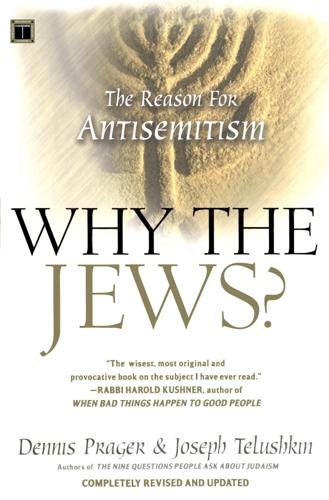
Why the Jews?: The Reason for Antisemitism
by
Dennis Prager
and
Joseph Telushkin
Published 1 Nov 2007
All the drivers were engaged in fervent study and religious discussions…. It was then that I found out … that all professions, the bakers, the butchers, the shoemakers, etc., have their own shtiebl in the Jewish district; and every free moment which can be taken off from work is given to the study of Torah.” 8 An old book saved from the millions of Jewish books burned by the Nazis, and now at the YIVO library in New York, bears the stamp THE SOCIETY OF WOODCHOPPERS FOR THE STUDY OF MISHNAH [the earliest part of the Talmud] IN BERDICHEV. That the men who chopped wood, an arduous job with low social status, met regularly to study Jewish law demonstrates the pervasiveness of study in the Jewish community.
…
Law for the Re-establishment of office, the Professional Civil Service, April 7, 1933. Jews not allowed to show themselves in the street during Passion Week, Third Synod of Orleans, 538. Decree authorizing local authorities to bar Jews from the street on certain Nazi holidays, Dec. 3, 1938. Burning of the Talmud and other Jewish books, 12th Synod of Toledo, 681. Book burnings in Nazi Germany. Christians not permitted to patronize Jewish doctors, Trulanic Synod, 692. Decree of July 25, 1938. Jews obliged to pay taxes for the support of the church to the same extent as Christians, Synod of Gerona, 1078. The “Sozialaugleichsabgabe,” which provided that Jews pay a special income tax in lieu of donation for party purposes imposed on Nazis, Dec. 24, 1940.
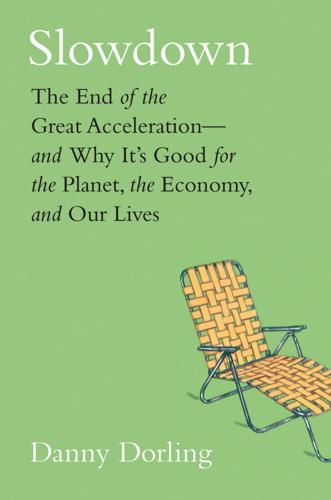
Slowdown: The End of the Great Acceleration―and Why It’s Good for the Planet, the Economy, and Our Lives
by
Danny Dorling
and
Kirsten McClure
Published 18 May 2020
Eltjo Buringh and Jan Luiten Van Zanden, “Charting the ‘Rise of the West’: Manuscripts and Printed Books in Europe; A Long-Term Perspective from the Sixth through Eighteenth Centuries,” Journal of Economic History 69, no. 2 (2009): 409–45 (and the statistical source used by Roser in note 6 above). 9. “List of Book-Burning Incidents (Catholic and Martin Luther): The World,” Wikipedia, accessed 24 April 2019, https://en.wikipedia.org/wiki/List_of_book-burning_incidents#Catholic_theological_works_(by_Martin_Luther). 10. Science Museum, “Thalidomide,” Exploring the History of Medicine, accessed 2 September 2019, http://broughttolife.sciencemuseum.org.uk/broughttolife/themes/controversies/thalidomide. 11.
…
But then, in 1520, a public burning of newly printed books was carried out in Leuven. This was followed by the burning of another four hundred books in Antwerp. These included the works of Martin Luther, which were being confiscated from bookshops and set alight before they could even be sold. In 1521 a mass book burning took place in Utrecht, and in 1526 Amsterdam’s first burning of printed books was recorded.9 These events started a tradition of burning that went on for decades, which (along with many other factors) held back the expansion of publishing in the Netherlands until the 1570s and 1580s. With the formation of the Dutch Republic in the very late 1570s, book production accelerated again, then slumped in the 1620s.

Jihad vs. McWorld: Terrorism's Challenge to Democracy
by
Benjamin Barber
Published 20 Apr 2010
In what was formerly East Germany, a Leipzig distributor responded to the arrival of the free market by burning 10 million inexpensive volumes printed under the old regime, including works by dissident literary figures such as Stefan Heym and Christa Wolf (who fled to Malibu thinking perhaps that it was better to embrace McWorld voluntarily than to be ravished by it against her will). By the lights of McWorld’s videology, commercial book-burnings to raise prices (like the shredding of unsold paperbacks in the West) have nothing in common with book burnings to repress literature (such as the Nazi bonfires of the thirties); but for authors and readers the difference may be hard to discern, and for literary culture, what happened in Leipzig in 1991 may be more fateful than what happened in Leipzig in 1934. In a typically ironic lyric in his poem “The Book Burning,” Bertolt Brecht, finding that he has been left out of the bonfire, implores the incendiaries, “Burn my books too!
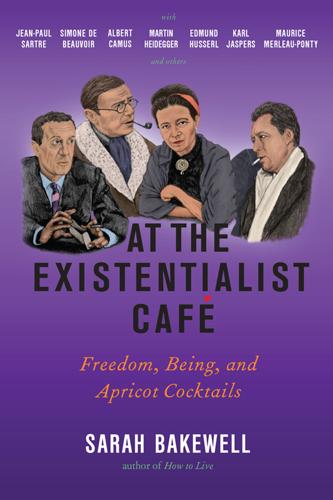
At the Existentialist Café: Freedom, Being, and Apricot Cocktails With Jean-Paul Sartre, Simone De Beauvoir, Albert Camus, Martin Heidegger, Maurice Merleau-Ponty and Others
by
Sarah Bakewell
Published 1 Mar 2016
They created laws that allowed phone tapping and mail surveillance — areas of privacy previously considered sacred. In April, they announced ‘boycotts’ of Jewish businesses, and removed all public employees deemed Jewish or having anti-Nazi affiliations from their jobs. Trade unions were banned on 2 May. The first spectacular book burning took place on 10 May. All political parties other than the National Socialists were officially banned on 14 July 1933. Many Germans, as well as other people around Europe, watched this rapid sequence of events in horror but felt unable to do much about it. Beauvoir later marvelled at how little she and Sartre worried in the early 1930s about the rise of Nazism in Germany — and this from two people who later became fiercely political.
…
In April 1933, all doubts about Heidegger were blown away when he accepted the post of rector of Freiburg University, a job that required him to enforce the new Nazi laws. It also required him to join the party. He did so, and then he delivered rousing pro-Nazi speeches to the students and faculty. He was reportedly seen attending the Freiburg book burning on 10 May, trooping through a drizzly evening by torchlight towards the bonfire in the square just outside the university library — almost on the steps of his own philosophy department. In private, meanwhile, he filled notebooks with philosophical thoughts alternating with Nazi-flavoured anti-Semitic remarks.
…
Alien or uncanny form: BT, 321/276–7. 22 Schickele: quoted in Ott, Heidegger, 136. 23 Anti-Semitic remarks: Kisiel & Sheehan, Becoming Heidegger, 413 (Husserl to Dietrich Mahnke, 4–5 May 1933). 24 Arendt: her questions are not preserved, but his answer is, in Arendt and Heidegger, Letters, 52–3 (Heidegger to Arendt, undated but winter 1932–3). 25 Book burning: Ott, Heidegger, 189, 194. 26 ‘Black Notebooks’: Heidegger, Überlegungen, ed. Peter Trawny, GA, 94–6 (2014), generally referred to as the Schwarze Hefte (Black Notebooks), and containing his notes from 1931 to 1941. Heidegger wished them to be published last in his collected edn, and their appearance has caused much debate.

The End of College: Creating the Future of Learning and the University of Everywhere
by
Kevin Carey
Published 3 Mar 2015
To stand in front of Humboldt University, you have to walk east along the wide boulevard of the Unter den Linden, a few hundred yards from the Brandenburg Gate, where the Berlin Wall used to be. Humboldt was split in half by the Cold War, with the historic campus on the wrong side of the line. By then it was already badly damaged. On May 10, 1933, students and professors from the university participated in a mass book burning. Many academics fled and Jewish students and professors were forcibly expelled, or worse. Then the campus was bombed into rubble by the merciless Allied air campaign during World War II. Today, Humboldt is a large, respectable public institution serving reunified Germany. But it has never recovered the stature it once held.
…
He began work in a doll factory, sweeping floors: Stephen Joel Trachtenberg, Big Man on Campus: A University President Speaks Out on Higher Education, New York: Touchstone, 2008. Details of Stephen Joel Trachtenberg’s life are from this book and personal interviews with the author. one popular world university ranking puts Humboldt at 126th worldwide: QS World University Rankings, 2013. students and professors from the university participated in a mass book burning: Humboldt-Universität zu Berlin, “Short History,” http://www.hu-berlin.de/ueberblick-en/history/huben_html/huben_html#nobel. “The most striking thing about the higher learning in America”: Robert Maynard Hutchins, The Higher Learning in America, New Haven, CT: Yale University Press, 1936. “My mistake was that I thought I was a successful evangelist”: As quoted by Harry S.

Work! Consume! Die!
by
Frankie Boyle
Published 12 Oct 2011
While he has six SAS gunman following him around to parties, they’re not in Afghanistan shooting shepherds. A church in the southern US caused chaos in Afghanistan by setting fire to a copy of the Koran to commemorate 9/11. Of course it’s their right to do it. As any student of pre-war Germany will tell you, book burning’s just a healthy part of building a democracy. The pastor said he’d stop the book burning if it caused too much offence. And made sure he had a full bladder just in case. It just seems so unnecessary to burn a copy of the Koran. Especially when every bookshop in the world still has copies of Michael McIntyre’s Life and Laughing. If this is all about honouring the victims of 9/11, is it not a bit tasteless to set fire to a book?
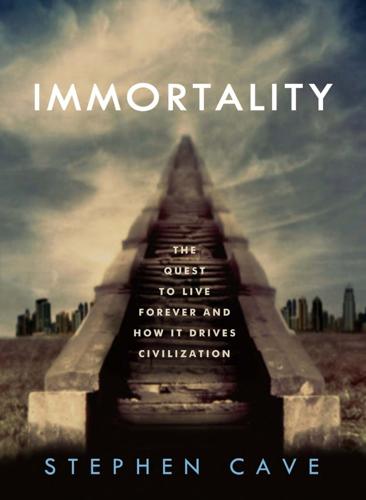
Immortality: The Quest to Live Forever and How It Drives Civilization
by
Stephen Cave
Published 2 Apr 2012
Chronicles of past times were destroyed; history was to begin afresh. Only documents thought to assist in prolonging life were spared—those on agriculture, divination and medicine. The rest were banned and their possession deemed a capital offense. The Argentinean writer Jorge Luis Borges recognized both the Great Wall and the book burning in the context of the emperor’s quest to live forever: “The data suggest that the wall in space and the fire in time were magic barriers intended to halt the advance of death,” he wrote. The First Emperor was attempting to establish a new order that could perpetuate life—his life—indefinitely.
…
Those parts of the records that concern the First Emperor have been collected and published in a fine Oxford Classics edition translated by Raymond Dawson and titled The First Emperor: Selections from the Historical Records (Oxford University Press, 2007). The beautiful 2002 film Hero, directed by Zhang Yimou, is a stylized retelling of the assassination attempts on the First Emperor. The Borges quote on the Great Wall and the book burning is from his short essay “The Wall and the Books,” first published in 1961 in the collection Antología Personal (this translation by Gaither Stewart and available online). The Arthur C. Clarke quote is from Profiles of the Future (Phoenix, 1961). The ancient Egyptian elixir recipe referred to is from the Edwin Smith Papyrus, held by the New York Academy of Medicine.
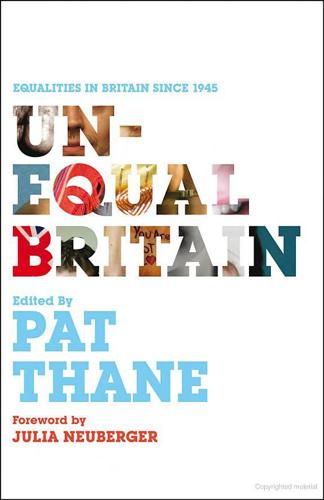
Unequal Britain: Equalities in Britain Since 1945
by
Pat Thane
Published 18 Apr 2010
Salman Rushdie’s book precipitated widespread rioting in Pakistan and India and was quickly banned in all Muslim countries, as well as in South Africa, Sri Lanka, China and India. Tensions were heightened when the Iranian leader, Ayatollah Khomeini, issued a fatwa sentencing Rushdie to death. In Britain, the controversy sparked widespread demonstrations and even book burnings, particularly in Bradford and Bolton. To alleviate the situation, Muslim groups, supported by some Christian leaders, advocated the banning of the publication and distribution of the book under the Blasphemy Act 1838. This had no effect. The demand for the extension of the Blasphemy Act to protect Islamic sensibilities was RELIGION AND BELIEF 61 rejected by the then-Conservative government.
…
The council opposed such labels as ‘ethnic minority’, describing itself as representing ‘British citizens with an Islamic heritage’.17 The establishment of a coordinating body for the British Muslim community coincided with the election of Mohammad Sarwar as the first Muslim MP (for the Labour Party in Glasgow Govan) in 1997. Another consequence of The Satanic Verses controversy was an increase in what became known as Islamophobia, with the scenes of book burnings in Bradford prompting heightened hostility towards Islam and the British Muslim community. Although it was no longer deemed acceptable to criticize or make derogatory statements about Irish, Afro-Caribbean or Jewish culture, attacks on Islam and Muslim assimilation in Britain increased. The following comment from columnist Peregrine Worsthorne, published in the Sunday Telegraph in 1991, suggests: Islam, once a great civilization worthy of being argued with . . . has degenerated into a primitive enemy fit only to be sensitively subjugated . . .
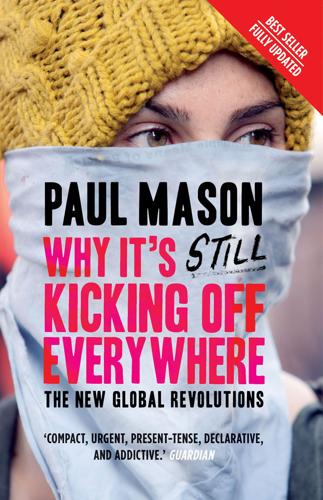
Why It's Still Kicking Off Everywhere: The New Global Revolutions
by
Paul Mason
Published 30 Sep 2013
Type into YouTube the words ‘Ernst Busch’ (German Communism’s star singer of agitprop anthems) to see just how hierarchical. The meaning of 2011 If the economic situation turns strategically bad, and if—as in the 1930s—globalization gets replaced by competing economic blocs, much of what I’ve described here could be reversed. It might seem inconceivable but so, to the Zweig and Delius generation, did book-burning ceremonies or the outlawing of scientific theories as politically unacceptable (as the USSR did with Einstein’s theory). Another caveat, of course, is that to the deprived half of humanity the ‘Internet way of life’ is out of reach. People struggling to live on $2 a day cannot get worked up about memes.
…
It was his first break from collaborating with Bertolt Brecht, and was scheduled to open simultaneously in three German cities on 18 February 1933. But on 30 January, Adolf Hitler was appointed Germany’s chancellor. The first performances of The Silver Lake were disrupted by Nazi activists in the audience, and on 4 March 1933 it was banned. The score was torched, together with the set designs, in an infamous book-burning ceremony outside the opera house in Berlin. It is easy to see why the Nazis didn’t like The Silver Lake. Weill being Jewish, their theatre critics found the music ‘ugly and sick’. Moreover the plot contains an allegory of the political situation on the eve of the Nazis’ rise to power. But there is something else about The Silver Lake that goes beyond politics.
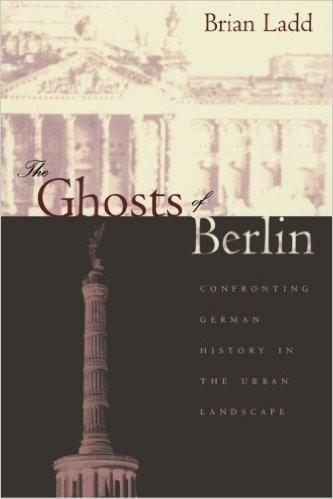
The Ghosts of Berlin: Confronting German History in the Urban Landscape
by
Brian Ladd
Published 1 Jan 1997
The only touchy subjects were two plaques put up by the GDR. One commemorated Lenin's visit to the library; it has vanished. The other commemorates what happened in the square on May 10, 1933, when a Nazi bonfire consumed "un-German" books. It will apparently remain, although reunified Germany has added its own gesture, a sunken memorial to the book-burning under glass in the center of the square. The immediate surroundings of the palace took their final < previous page page_53 file:///Volumes/My%20Book/arg/ladd-Ghosts_Berlin/files/page_53.html [24/03/2011 13:47:54] next page > page_54 < previous page page_54 next page > Page 54 form during the reign of Friedrich Wilhelm III (from 1797 to 1840), more particularly through the efforts of the royal architect, Karl Friedrich Schinkel (17811841).
…
See also Wall, Berlin applied art school, 155 Arc de Triomphe, 137 Arnim, Bettina von, 211 arsenal, 54, 57, 238 Artur-Becker-Strasse, 212 Asea Brown Boveri (ABB), 122 file:///Volumes/My%20Book/arg/ladd-Ghosts_Berlin/files/page_261.html (1 of 3) [24/03/2011 13:51:31] page_261 Athens, 68, 73 aviation ministry, 145-47, 164, 226 B Babeuf, François-Noel, 210 Baedecker, 110, 111, 113, 115 Baker, Josephine, 111 Bauakademie, 54, 57 Baudelaire, Charles, 230 Bauhaus, 183 Bayerischer Platz, 171 Bebel, August, 209 Beck, Ludwig, 140 Becker, Artur, 212 Beckmann, Max, 110 Behne, Adolf, 55 Behrens, Peter, 4, 98, 232 Beimler, Hans, 212 Bellevuestrasse, 119 Bendlerblock, 149-51, 162 Bendlerstrasse, 150 Benjamin, Walter, 230 Bergen-Belsen, 220 Berlin: center of, 42-43, 52-53, 57, 63-64, 226; districts of, 13, 14, 209-10, 241, 244; division of, 12, 20-21, 56, 178-79, 243; East, 13, 28, 43, 62, 69, 75, 98, 178-80; expan- file:///Volumes/My%20Book/arg/ladd-Ghosts_Berlin/files/page_261.html (2 of 3) [24/03/2011 13:51:31] page_261 < previous page page_261 file:///Volumes/My%20Book/arg/ladd-Ghosts_Berlin/files/page_261.html (3 of 3) [24/03/2011 13:51:31] next page > page_262 < previous page page_262 next page > Page 262 Berlin: (Continued) sion of, 48-49, 71, 83, 96, 98, 99, 238, 239, 241; as German capital, 3, 224-28; industrialization of, 96-98, 100-103; in Middle Ages, 43-44, 46, 48, 237; in 1950s, 12, 179-80; popular histories of, 206-7; population of, 52, 96, 240, 241; reunification of, 42-43, 179; in Third Reich, 119, 127, 134, 155-57; walls, 18, 44, 71-73, 74, 85, 238, 240 (see also Wall, Berlin); in Weimar Republic, 110-15, 118, 230; West, 12-13, 17, 28, 69, 75, 98, 178-81 Bernauer Strasse, 33-34, 36 Bersarin, Nikolai, 213 Bersarinplatz, 213 Beuys, Joseph, 27 Bismarck, Otto von, 46, 84, 85, 129, 199, 213, 240, 241 Bitburg, 160, 220 Boddien, Wilhelm von, 60, 70 Bohnstedt, Ludwig, 85 Bois, Curt, 120 bombs, unexploded, 175 Bonn, 12, 80, 224-25, 227-28, 243, 245. See also Germany, Federal Republic of book burning, memorial to, 53 Borsig, Albert, 128 file:///Volumes/My%20Book/arg/ladd-Ghosts_Berlin/files/page_262.html (1 of 3) [24/03/2011 13:51:32] page_262 Borsig firm, 97 Borsig palace, 128-29 Brandenburg, 37, 48, 50 Brandenburg Gate, 8, 22, 72-81, 239; vicinity of, 85, 136, 170 Brandt, Willy, 94, 243, 244 Braun, Otto, 212 Brecht, Bertolt, 110 Briefs, Ulrich, 94 Britz horseshoe estate, 104 Broniatowski, Karol, 152 Bubis, Ignaz, 220 Budapest, 193 Buddensieg, Tilmann, 64, 233 Bundesrat, 227 Bundestag, 90-91, 92-95, 224-25, 227, 245 bunkers, 148; at chancellery, 128, 130-33, 170; Führerbunker, 127-28, 130, 133-34, 227 C Cagney, James, 76 Calatrava, Santiago, 92 Canetti, Elias, 140 Carstens, Karl, 92 cathedral, Berlin, 54-55, 59, 86 Central Memorial to the Victims of War and Tyranny, 217 chancellery, federal, 227 chancellery, Reich, 38, 125, 129-30, 153, 168 Charlemagne, 43 file:///Volumes/My%20Book/arg/ladd-Ghosts_Berlin/files/page_262.html (2 of 3) [24/03/2011 13:51:32] page_262 Charlottenburg, 97, 138 Charlottenburger Chaussee.

Simple Matters: A Scandinavian’s Approach to Work, Home, and Style
by
Jenny Mustard
Published 3 Sep 2018
Those are the kind of things you always should make room for in your moving boxes and value as historic treasures. I’m not a big fan of should. I rather make decisions based on want and need. This is not propaganda to make readers start rummaging through their possessions to search and destroy their old journals and memorabilia—even if in the pursuit of happiness or only to make a minimalist point. Book burnings don’t usually achieve either of those things, do they? If this is propaganda for anything, it’s for being honest with ourselves. Some things elevate our lives, others hold us back. Value the first, let go of the second—without minding the shoulds, musts, and don’ts. I own things that I treasure, things that stay clear of the waste station no matter how many times I move.
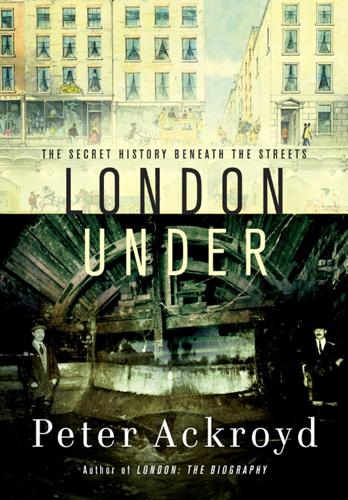
London Under
by
Peter Ackroyd
Published 1 Nov 2011
In the same conflagration the booksellers of St. Paul’s Churchyard put all their stock into the parish church of St. Faith’s, in the crypt of the cathedral, but the collapsed roof of the cathedral broke through. When the booksellers opened the vault the rush of air made the paper leap into flames and the books burned for a week. Charles Dickens exhibited a proper London fascination for underground places when he declared in an essay, “The City of the Absent” (1861), that “the deserted wine-merchants’ cellars are fine subjects for consideration; but the deserted money cellars of the bankers, and their plate cellars, and their jewel cellars, what subterranean regions of the Wonderful Lamp are these!”

Care to Make Love in That Gross Little Space Between Cars?: A Believer Book of Advice
by
The Believer
,
Judd Apatow
and
Patton Oswalt
Published 6 Mar 2012
Are they just afraid I might be successful and they’ll have to accept that they’re probably trapped forever in their unfulfilling, non-novel-writing jobs? A Frustrated Writer Austin, TX Dear Frustrated Writer: When it comes to writing, I’ll say this much. If it’s not written by Mike “The Situation” Sorrentino or Sarah Palin, I’m not reading it. And I think most of the country agrees with me. DOWN WITH BOOKS!!! BURN! BURN! BURN! Paul • • • Dear Paul: Is it okay to break up with someone on Twitter? What if I don’t have a Twitter account and I ask a friend to do it for me? What’s the protocol? Stacie Orlando, FL Dear Stacie: As my good friend Kathleen Turner once told me, “GET OUT OF MY HOUSE, YOU FREAKY STALKER!”

Lonely Planet Pocket Berlin
by
Lonely Planet
and
Andrea Schulte-Peevers
Published 31 Aug 2012
(Reichstagufer 17; admission free; 9am-7pm Tue-Fri, 10am-6pm Sat & Sun; U-/S-Bahn Friedrichstrasse) 4 Bebelplatz Square Offline map Google map On this treeless square, books by Bertolt Brecht, Thomas Mann, Karl Marx and other ‘subversives’ went up in flames during the first full-blown public book burning, staged by the Nazi German Student League in 1933. Michael Ullmann’s underground installation, Empty Library, beneath a glass pane at the square’s centre, poignantly commemorates the event. ( 100, 200, TXL) Understand The Reichstag in History Germany’s federal parliament building has witnessed many milestones in the country’s history.

Paper: A World History
by
Mark Kurlansky
Published 3 Apr 2016
At almost the same time, in 1526, the Ottomans took Budapest and, wishing to annihilate the conquered culture, burned down their science library. Zumárraga was eventually removed from office for excessive cruelty after he burned an Aztec leader at the stake, but his book-burning campaign was one of the most successful in history. Generally, cultures have recovered from book burning, but in the case of the Aztecs, much of their culture remains lost. Their language lives on in rural Mexico, as do some religious practices, passed on from generation to generation, but much of their learning is gone. A culture that had been literate at a time when Europe had neither writing nor books has become largely an oral culture dependent on memory.
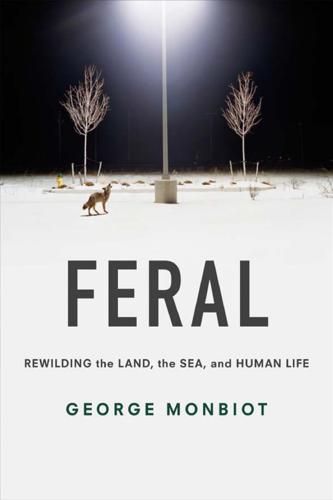
Feral: Rewilding the Land, the Sea, and Human Life
by
George Monbiot
Published 13 May 2013
The roots smashed up what remained. They destroyed all traces of the community. ‘I’m not against something new, not by any means, but it should be a progression from what you’ve got, not wiping the slate clean. With blanket rewilding you lose your unwritten history, your sense of self and your sense of place. It’s like book-burning. Books aren’t written about people like us. If you eradicate the evidence of our presence on the land, if you undermine the core economies that support the Welsh-speaking population in the language’s heartland, you write us out of the story. We’ve got nothing else. ‘Conservation should be about how we can live in nature.
…
One paper, for example, states that ‘employment and personal income levels in “wilderness” counties grew faster than in “resource-extraction” counties’.11 Another maintains that in regions where timber cutting had stopped in order to protect the forests, economic wellbeing ‘improved in some, deteriorated in some, and showed little change in other communities’.12 The results are likely to be different in other nations, and the potential impacts, both positive and negative, should be carefully assessed. But it is possible that rewilding could do more than sheep farming to keep the school open, support the local shop or reopen the pub, which the current economy has manifestly failed to sustain. As for book-burning, I see it whenever I walk in the hills close to where I live. I see oak woods, which in some cases had been preserved by farmers or mining communities for centuries, being destroyed by the sheep that now graze beneath the trees. I see hedgerows being grubbed up, drystone walls replaced with wire fences, ancient trees which once marked the boundaries between farms ripped out and burnt.
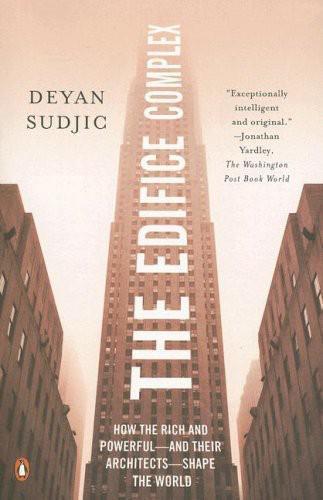
The Edifice Complex: How the Rich and Powerful--And Their Architects--Shape the World
by
Deyan Sudjic
Published 27 Nov 2006
Throughout its history Beijing, like so many capital cities, has been an urban landscape designed to reflect the authority of the regime that controlled the city: one imperial dynasty after another has made it its own. Mao Zedong did the same, and now his ideology-free successors are following in his footsteps. Chairman Mao’s war against the Four Olds – Old Thought, Old Culture, Old Customs and Old Habits – which drove the Red Guards in their brutal and bloody campaign of book burning and persecution of the intellectuals, has been applied to city planning. The rebuilding of Beijing is certainly a cultural revolution of a kind. At pavement level, the city’s most ubiquitous new building type is the residential marketing suite: stainless steel boxes and glass blobs, decked with balloons to tempt in customers, who are being sold a concept that reached China only at the very end of the twentieth century: the domestic mortgage.
…
Mao’s ideologues never took a consistent view as to whether the regime should seek to surpass the past, or else try to wipe it out entirely, as the most decisive statement of power possible. Mao was capable of collecting ancient Chinese calligraphy privately, while at the same time encouraging its destruction in open-air book burnings. Some saw the creation of Tiananmen Square as an onslaught on one of the greatest creations of Chinese civilization, but other leaders wanted to go much further than destroying just the city’s walls and its gates, which had been built not so much for defensive purposes but rather as a representation of the Chinese view of the universe.
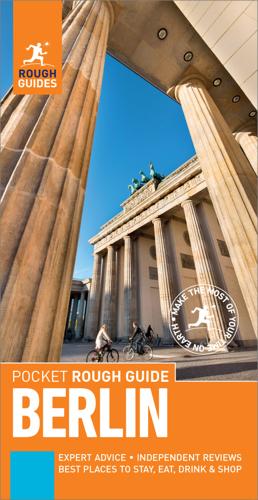
Pocket Rough Guide Berlin (Travel Guide eBook)
by
Rough Guides
Published 16 Oct 2019
Bebelplatz MAP Französische Str. This historical square on the south side of Unter den Linden was constructed between 1741 and 1743 and was originally known as Opernplatz. Though framed by the opulent Staatsoper, a library and the swanky Hotel de Rome, it remains best known for the 1933 Nazi book burning that took place here, as instigated by propaganda minister Joseph Goebbels. The Nazis burned some twenty thousand books, including works by Thomas Mann, Erich Maria Remarque, Heinrich Heine and Karl Marx. At the centre of the square is a memorial of the burning by Micha Ullman, which consists of a glass-covered view into an underground chamber of empty bookshelves.
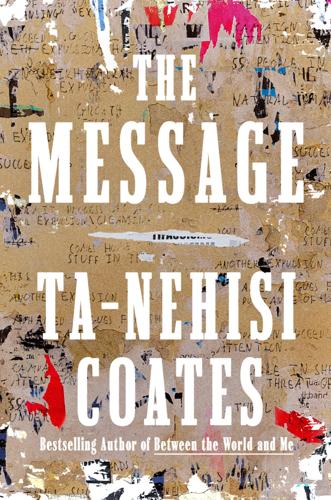
The Message
by
Ta-Nehisi Coates
Published 2 Oct 2024
Their power is so intimate, so insidious, that even its authors don’t always comprehend it. I see politicians in Colorado, in Tennessee, in South Carolina moving against my own work, tossing books I’ve authored out of libraries, banning them from classes, and I feel snatched out of the present and dropped into an age of pitchforks and book-burning bonfires. My first instinct is to laugh, but then I remember that American history is filled with men and women who were as lethal as they were ridiculous. And when I force myself to take a serious look, I see something familiar: an attempt by adults to break the young minds entrusted to them and remake them in a more orderly and pliable form.
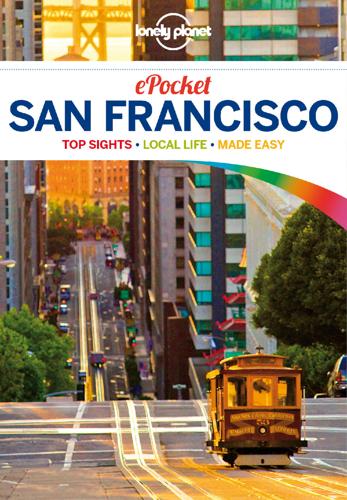
Lonely Planet Pocket San Francisco
by
Lonely Planet
and
Alison Bing
Published 31 Aug 2012
Art deco Rincon Annex Offline map ( 101 Spear St; admission free; Embarcadero) is lined with Works Project Administration murals of San Francisco history. Russian-born painter Anton Refregier began in 1941, only to be interrupted by WWII and political squabbles over differing versions of history. After 92 changes, his mural cycle was completed in 1948 with War and Peace , pointedly contrasting Nazi book-burning and postwar promises for ‘Freedom from fear/want/of worship/speech.’ Initially denounced as communist by McCarthyists, Refregier’s masterpiece is now a National Landmark. 9 Museum of the African Diaspora Museum Offline map Google map MoAD has assembled an international cast of characters to tell the epic story of the African diaspora: a regal couple by Nigerian British sensation Chris Ofili, Harlem jazz portraits by Romare Bearden, and Siddi family quilts by Indians descended from African slaves.
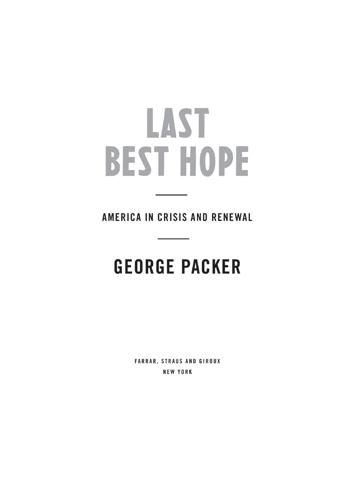
Last Best Hope: America in Crisis and Renewal
by
George Packer
Published 14 Jun 2021
The pandemic almost disappeared from mind as millions of white people experienced the kind of collective moral awakening that comes over Americans in different periods of our history. These awakenings can take on the contours of religious experience, a particularly American one—sin, denunciation, confession, atonement, redemption, heresy hunting, book burning, and the dream of paradise. Moral awakenings leap backward over the worldly philosophers of the eighteenth century, the secular and rationalist Founding Fathers, to our origins in the Puritan ancestors. The passion and scale of the George Floyd protests gave some Americans the fervent belief that we were finally going to face our four centuries of crime and injustice.
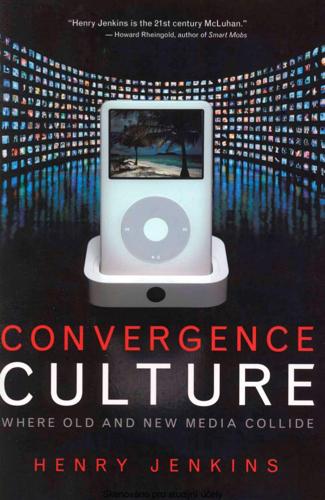
Convergence Culture: Where Old and New Media Collide
by
Henry Jenkins
Published 31 Jul 2006
But if this h a d been about banning the books, I w o u l d have taken this to the Supreme C o u r t . " In Alamogordo, N e w Mexico, the Christ C o m m u n i t y Church burned more than thirty H a r r y Potter books, along w i t h D V D s of Disney's Snow White and the Seven Dwarfs (1937), C D s b y Eminem, and novels by Stephen K i n g . Jack Brock, the pastor of the church, justified the book burning o n the grounds that Harry Potter, a book he admitted he had not read, was " a masterpiece of satanic deception" and an instruction manual into the dark arts. C N N quoted another minister, Reverend L o r i Jo Scheppers, w h o suggested that children exposed to Harry Potter w o u l d "have a very good chance of becoming another D y l a n Klebold and those guys i n C o l u m b i n e . " 32 33 34 35 So far, we have been focused o n participation as a positive force i n the lives of these kids—something that is motivating children to read, write, form communities, and master other kinds of content—not to mention, stand u p for their rights.
…
(www.kidspeakonline.org), created online forums where kids could share their views w i t h one another about the Potter wars and other censorship issues. For example, Jaclyn, a seventh-grader, wrote this response to news that a fundamentalist minister had cut up copies of Harry Potter w h e n the fire department refused to grant h i m a permit to have a book burning: 44 45 Reverend Taylor, the host of Jesus Party should look closer before judging. K i d s are reading these books and discovering there is more to life than going to school. What have they discovered exactly? Their imaginations. Does Reverend D o u g Taylor realize what he is doing? Kids are fighting for their First A m e n d m e n t rights but do they also have the fight for their imaginations—the one thing that keeps one person different than the others?
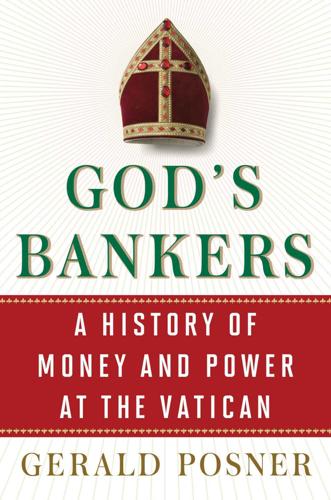
God's Bankers: A History of Money and Power at the Vatican
by
Gerald Posner
Published 3 Feb 2015
On April 11, for the first time the Nazis defined Jews by blood: one Jewish grandparent marked someone as “non-Aryan.”13 Thousands of instructional charts were distributed to help average Germans distinguish Jews from Aryans.14 In May, the Nazis celebrated the first in a series of public-spectacle book burnings. They were meant to expunge from public libraries the literary and scientific contributions of Jewish intellectuals and scholars, including books by Kafka, Hesse, Brecht, Einstein, and Freud.15 The violent national boycott, the exclusionary law, and the book burnings were all an early test for the church. Would it tolerate the Nazis’ unrelenting anti-Semitism? During those first seminal months—while negotiations with the Nazis were under way—no Vatican official or German bishop condemned what was happening to Germany’s Jews.16 Breslau’s Cardinal Adolf Bertram instead dismissed a plea for intervention by averring that the Nazi “measures [were] directed against an interest group which has no very close bond with the Church.”
…
Besier, The Holy See and Hitler’s Germany, 126–27. 15 The Nazis banned not only Jewish authors; many non-Jews were also put on the prohibited list. Thomas Mann was taboo because he had a Jewish wife. Helen Keller was deaf blind and her handicap got her listed. Ernest Hemingway was banned because A Farewell to Arms was judged as antiwar. Jack London’s socialist politics got him blacklisted. “Book Burnings in Germany, 1933,” PBS: American Experience, April 25, 2006. 16 Carroll, Constantine’s Sword, 508, n30, 684. 17 Bertram quoted in Ibid; see also Godman, Hitler and the Vatican, 32–34. 18 Faulhaber quoted in Guenter Lewy, The Catholic Church and Nazi Germany (New York: McGraw-Hill, 1964), 41.
…
Morgan Morgenthau, Henry, 117, 583n–84n Moro, Aldo, 173n, 175, 182–83, 248, 273n, 287, 627n Morpurgo, Giuseppe Lazzaro, 122–23, 578n–79n Mortara, Edgardo, 17–18, 537n–38n Mucci, Luca, 287, 300 Mudge, Rose, Guthrie & Alexander, 206, 231 Mundelein, George, 47, 549n, 610n Munich Re, 123, 124, 126, 580n Murphy, Paul, 554n, 559n Murphy, Peter, 191, 335n, 353, 355–56, 364, 370, 463, 655n, 660n Mussolini, Benito (Il Duce), 0, 44–45, 52–55, 56, 58–61, 62, 63, 65n, 70–71, 79, 82, 83, 85, 87, 93, 96, 109, 110, 111, 113, 575n, 577n, 578n, 583n, 590n, 603n, 616n anti-Catholicism of, 44–45 anticommunism of, 60 anti-Semitism of, 73, 74–75, 122, 556n arrest of, 99, 128 in Bank of Rome bailout, 45–46 Ethiopia invaded by, 68–69 as head of Nazi puppet government, 128–29 Lateran Pacts and, 48–49, 450 Nazi rescue of, 100 Pius XI and, 45–46, 47–49, 54–55, 73 Vatican Bank and, 119 Vatican’s partnership with, 60–61 Myth of the Twentieth Century (Rosenberg), 65n Napoleon I, Emperor of France, 11, 98n Napoleon III, Emperor of France, 14, 17, 18, 20 Nation, 546n–57n, 555n National Archives, 132, 135n, 385, 573n, 581n, 585n, 591n National Catholic Reporter, 76, 399, 401, 403n, 421, 442, 494, 537n, 634n, 666n, 674n National Fascist Party, Italian, 44, 49, 52, 99, 128, 560n National Socialism, see Nazi Germany, Nazis Navarro-Valls, Joaquín, 303n, 385, 388, 389, 391, 396, 427 Nazi fugitives: Catholic Church’s aid to, xi–xii, 143, 150–51, 384, 385 Pius XII’s silence about, 143 in South America, xi–xii, 384, 386 Vatican gold used in aid of, 145, 384, 386 Nazi Germany, Nazis, xi–xii, 69, 78–79, 84, 87, 89, 91–93, 95–97, 101–5, 112, 113, 116, 117, 119, 120, 125, 127, 131–37, 138, 141, 143–45, 147, 148–51, 153n, 154, 164, 176, 189, 195, 308, 339–41, 342, 383–88, 397, 421–23, 426, 445–46, 449n, 482, 493n, 544n, 552n, 553n, 556n, 560n, 561n, 562n, 563n, 564n, 565n, 566n, 567n, 568n, 569n, 570n, 571n, 572n, 579n, 582n, 584n, 586n, 587n, 588n, 589n, 594n, 603n, 656n anti-Catholic measures in, 72 anti-Semitism in, 63–64, 66, 67, 72–73, 74, 75, 76–77, 84, 278, 554n; see also Holocaust assisting insurers in avoiding paying victims claims, 127, 579n book burnings in, 63 Catholic Church in, 64, 65–66, 73–74 Czechoslovakia invaded by, 82 gold looted by, 130–31, 384, 388, 389, 391, 392, 393 northern Italy occupied by, 99–100, 128–29 Pius XI and, 67, 72, Pius XII and, see Holocaust, Pius XII and Poland invaded by, 85–86, 111 Reichskonkordat violated by, 72, 109 Russia invaded by, 88, 90, 96 in Soviet nonaggression pact, 85 Sudetenland claims of, 71 Vatican and, 62–68, 72, 75, 76–77, 80, 82, 88, 90–91, 110, 551n see also Gestapo; SS (Schutzstaffel) Nazi hunters, xi, xii, 143, 147, 339 Netherlands, 57, 112, 131, 564n Newsweek, 337, 640n New York, N.Y., 71, 115, 116n, 117, 165, 209, 215, 223, 224–25, 241, 292–94, 299–300, 315–16, 373, 383, 404, 641n New York Times, xii, 161n, 178, 183, 187, 204, 221, 228, 231, 232, 246, 257, 289, 342, 349, 354, 364, 367, 390n, 400, 434, 452–53, 464n, 488, 505, 546n, 558n, 598n, 602n, 610n, 650n, 674n, 689n Nicaragua, 288, 309–10, 319, 353, 626n Nichita Roncalli: Controvita di un papa (Bellegrandi), 173n Nicholas V Tower, 118, 199, 217, 343, 483, 612n, 664n Nicora, Cardinal Attilio, 431, 441, 452, 468, 473, 485, 489, 491, 510, 663n Niehans, Paul, 161–62, 596n Nikodim, Metropolitan, 261–62 Nixon, Richard, 193, 200, 205, 206, 221, 223, 240, 289, 618n, 623n Nogara (Abwehr spy), 133, 134–35, 586n Nogara, Bartolomeo, 51, 156 Nogara, Bernardino, 54, 90, 101, 115, 120–22, 124–29, 155–61, 166, 167, 168, 170, 176, 179–80, 182, 185, 202, 232, 300, 359, 362, 398, 512, 547n–48n, 554n, 560n, 569n, 573n, 575n, 577n–78n, 580n, 581n, 586n, 587n, 595n, 598n, 605n, 607n, 638n, 664n appointed head of ASSS, 52 arbitrage strategy of, 57 background of, 50–51 as BCI director, 52, 57, 59, 116, 121, 134 Black Nobles’ conflict with, 52 cardinals’ investigations of, 83–84, 111 death of, 166 fighting Allies over blacklisting of Sudameris, 156–157 foreign bank investments of, 57–58 gold as safehaven investment, 112, 130 Great Depression and, 53, 55–61 holding companies established by, 57, 110, 112, 116, 119, 124, 126, 550n, 551n IRI and, 58–59 and Italian invasion of Ethiopia, 69, 70 Italian investments of, 58–59, 157–58 Paul VI and, 159–60 Pius XI and, 52, 56 Pius XII and, 82–84, 549n as possible Nazi spy, 132–37 postwar economy and, 155 postwar investment strategy of, 157–58, 160, 179 real estate investments of, 57, 111, 112, 124 retirement of, 160 and role in raising gold for Rome’s Jews, 100–101 rumored Jewishness of, 51 stake in Fondiaria and, 125 U.S. investments of, 71 use of IOR for aggressive money transfers, 118–19 Vatican Bank created by, 117–18, 128 Vatican finances transformed by, 160 Vatican gold reserves moved to U.S. by, 57, 112, 113, 130 visit to United States, 71 Volpi and, 120–22, 124, 126, 129, 130 World War II and, 111–12 Nogara, Giovanni, 161, 185 Nogara, Paolo, 161, 596n Noriega, Manuel, 310n, 316n Normandy invasion, 105 North Vietnam, 181, 193, 220 Norway, 112, 113 Nostra Aetate (In Our Time), 180n Nuremberg Laws, 68, 88 Nuzzi, Gianluigi, 439–41, 465, 467–68, 469, 470, 473–74, 475, 478, 485, 492, 693n Office of Strategic Services (OSS), 118–19, 131, 132, 134–36, 138, 142, 584n, 585n, 587n, 588n Nazi fugitives and, 135, 147, 151, 592n Oligata Romana, 190, 199 Olivetti, 321–22, 328 Olympics (Rome, 1960), 167, 186 O’Malley, Cardinal Sean, 495, 501 Operation Fraulein, 210–19, 617n Operation Safehaven, 128, 141, 581n Opus Dei, 325, 339n, 365, 375, 443, 464n, 470, 482, 487, 511, 610n, 652n rumored secret deal with Calvi and, 325 Organisation for Economic Co-operation and Development (OECD), 444, 445, 447, 452, 456, 457, 472, 473, 482, 484, 487, 510 Orlandi, Emanuela, 345n, 474 Orsenigo, Cesare, 66–67, 82, 91 Ortolani, Umberto, 235, 238, 302, 532n, 644n, 658n Osborne, D’Arcy Godolphin, 73, 81, 90, 99, 104, 106, 107, 110, 149, 556n, 565n, 566n, 570n, 573n Osservatore Romano, L’,16–17, 49, 79, 354, 437, 443, 448, 537n, 540n, 607n, 612n Ottoman Empire, 51, 124, 134, 550n Ouellet, Marc, 495, 496 Owens, Jeffrey, 447, 452 Pacelli, Carlo, 104, 156, 570n, 574n, 594n, 595n Pacelli, Ernesto, 40, 50, 83, 125 as Bank of Rome president, 29, 36 economic and political reforms urged by, 30 Pius X’s break with, 37–38 Vatican finances overseen by, 35 as Vatican financial advisor, 29–30, 36–37, 546n Pacelli, Eugenio, see Pius XII, Pope Pacelli, Francesco, 48, 59, 79, 546n–47n Pacelli, Giulio, 158, 159, 160, 185, 595n Pacelli, Marcantonio, 158, 159, 160, 575n, 595n, 596n Padalino, Giulio, 286, 288, 638n Pagano, Bishop Sergio, 128, 589n Palace of the Chancellery, 14, 536n Palazzini, Cardinal Pietro, 321, 324–25 Palestine, 67–68, 106, 648n Palestinian Liberation Organization, 221, 313 Panama, 202, 236, 638n Panciroli, Romeo, 268, 269, 270, 654n Panorama, 202n, 231, 323, 440 Pantanella, 186, 239 Papacy: antipopes and, 10, 634n elections of, 32 infallibility of, 19 Papal Court, 10, 17, 28–29, 32, 44, 537n Papal States, 12, 13, 15, 17, 24, 25, 30, 33, 42, 45, 48, 153, 178 Italy’s annexation of, 18–19, 21, 47 taxation of, 8, 9, 15, 16 Papée, Kazimierz, 95, 567n Papen, Franz von, 63, 65, 164 Paraguay, xi–xii Paribas, see Banque de Paris et des Pays–Bas Parolin, Cardinal Pietro, 507–9 Partito Popolare Italiano (Italian People’s Party), 44, 46, 49 Pascalina Lehnert, Sister, 83, 143, 160, 161, 165, 554n, 558n, 559n, 564n, 566n, 589n, 594n, 596n–97n Pius XII’s relationship with, 80–81, 632n Paul II, Pope, 9 Paul IV, Pope, 110 Paul VI, Pope, 34, 90, 95, 99, 107, 108n, 140, 142–43, 148, 149–50, 153, 159–60, 165, 168, 169–70, 173–74, 175–77, 180–81, 183–84, 192, 208, 217, 221, 224, 233–34, 255–59, 260, 262, 263, 264, 266n, 267, 271–74, 279, 283, 290, 310, 350, 365n, 369, 534n, 540n, 567n, 589n, 592n, 596n, 599n, 602n, 610n, 611n, 627n–32n, 633n, 639n, 657n anticommunism of, 169 as archbishop of Milan, 160, 169–70 autopsy policy of, 635n birth control policy of, 606n Cody and, 250–52, 256, 263–64 death of, 253–54, 627n declining health of, 246–47 Draganović and, 140, 148, 149 election of, 174 fear of postwar Russian invasion, 142 Hudal and, 150 Humanae Vitae encyclical of, 185, 259 indecisiveness of, 174, 187, 249 Jesuits and, 264 knowledge of Holocaust, 90 leftward shift of, 180–81 Marcinkus and, 192–93, 197–201, 207, 219, 231, 249–50 Moro kidnapping and, 248 Nixon’s meeting with, 200 Nogara and, 159–60 Pauline Policy of, 187 personality of, 174, 175 physical ailments of, 246 Populorum Progressio encyclical of, 181 possible resignation of, 246–47, 249–50 rumored homosexuality of, 173n Second Vatican Council and, 175, 180–81 silence about ratline, 143–144.
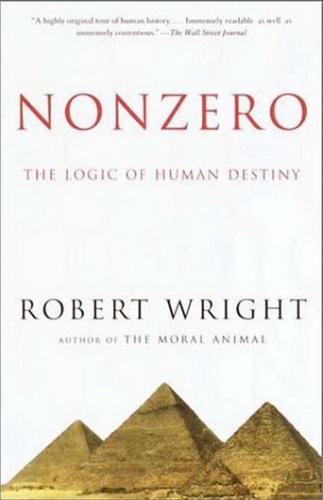
The Moral Animal: Evolutionary Psychology and Everyday Life
by
Robert Wright
Published 1 Jan 1994
It had gradually accumulated cultural capital and was now poised for a great leap forward. This cultural capital, this precious stock of memes, had little to do with Europe’s “classical heritage.” In How the Irish Saved Civilization,Cahill gasps at what might have been lost in the barbarian invasions. “Had the destruction been complete—had every library been disassembled and every book burned—we might have lost Homer and Virgil and all of classical poetry, Herodotus and Tacitus and all of classical history, Demosthenes and Cicero and all of classical oratory, Plato and Aristotle and all of Greek philosophy, and Plotinus and Porphyry and all the subsequent commentary.” Well, them’s the breaks.
…
royal Chinese graves: Keightley (1989b), Fagan (1995), p. 436. Shang China as fragmented: Robert Bagley, personal communication. Shang chiefdom or state?: See Keightley (1983). Ch’in law: Hsu (1989), p. 74. See also Fairbank (1992), pp. 54–56. Chinese infrastructure: Gernet (1996), p. 106; Fairbank (1992), p. 56. Shih Huang-ti book-burning: Gernet (1996), p. 109. terra-cotta warrior : Fairbank (1992), p. 56. Shih Huang-ti’s caprice, demise: Starr (1990), p. 637; Gernet (1996), p. 108. “king of this great earth”: Starr (1990), p. 277. “general governor and reconciler”: Hammond (1989), pp. 270–73. “savior of all mankind”: Starr (1990), p. 557.

The Rise of the Israeli Right: From Odessa to Hebron
by
Colin Shindler
Published 29 Jul 2015
Yeshivah students burned Be-shem ha-tevunah (In the name of reason: conversations with Rabbi Chaim Amsellem) by Ari Eitan.37 Amsellem had fallen out with the leaders of Shas and had voiced his criticism of Shas in this book. For example, he called its members ‘Sephardo-Lithuanians’ because of their tendency to adopt the stringency and culture of the Lithuanian Ashkenazim. The students seemed oblivious of the significance of book burning in the annals of Jewish history. Netanyahu has been under attack from both those within the Likud and others in Far Right parties. Even though it returned the Likud to government in 2013, the pact with Yisrael Beiteinu was unpopular in Likud circles. This growing criticism of Netanyahu was most prevalent amongst the Likud rank and file.
…
See also Bet Sefer le-madrikhim Betar Betar Conference (Danzig; 1931), 151, 176 Betar Conference (Warsaw; 1938), 165–69 Begin on approach of Jabotinsky, 165–66, 167–68, 207 Jabotinsky on approach of Begin, 166–67 Betar Conference (Warsaw; 1939), 154 Bethmann-Holweg, Theobald, 294 Bet-Tsouri, Eliahu, 204 Bevin, Ernest, 214, 218, 225, 321 Bialik, Haim Nahman, 18, 52 Bidault, Georges, 236 Bikerman, Iosif, 28–29, 39 BILU, 46n50 bi-nationalism, 129–30 The Birth of a Nation (film), 53 Bitker, Robert, 181, 182 ‘Black Hundreds,’ 45 ‘Black Sabbath,’ 215 ‘Black Sunday,’ 182 Blok, Alexander, 196 blood libel, 112 Blue-White faction, 268 Blut fuer Ware (Blood for Goods), 254–56 Bnei Akiva, 286–88 Bnei Akiva yeshivah, 282 Bodenheimer, Max, 117 Bolshevism, Jabotinsky on, 96 book burning, 361 Bose, Subhas Chandra, 200 Bosiaki (barefoot ones), 26n43 Index Boulangism, 21 Brand, Joel, 254–55, 256–57, 258, 259 Brandeis, Louis, 144 Brandt, Willy, 260–61 Berit Bar-Kokhba, 122 Berit El-Al, 178 Berit HaCana’aim, 122 Berit Hakana’im, 262 Berit Shalom, 92–93, 174 Berit Spartacus, 200 Britain.
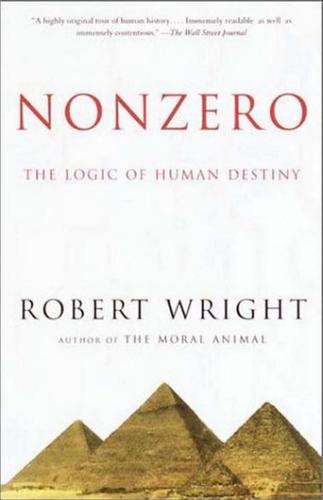
Nonzero: The Logic of Human Destiny
by
Robert Wright
Published 28 Dec 2010
It had gradually accumulated cultural capital and was now poised for a great leap forward. This cultural capital, this precious stock of memes, had little to do with Europe’s “classical heritage.” In How the Irish Saved Civilization,Cahill gasps at what might have been lost in the barbarian invasions. “Had the destruction been complete—had every library been disassembled and every book burned—we might have lost Homer and Virgil and all of classical poetry, Herodotus and Tacitus and all of classical history, Demosthenes and Cicero and all of classical oratory, Plato and Aristotle and all of Greek philosophy, and Plotinus and Porphyry and all the subsequent commentary.” Well, them’s the breaks.
…
royal Chinese graves: Keightley (1989b), Fagan (1995), p. 436. Shang China as fragmented: Robert Bagley, personal communication. Shang chiefdom or state?: See Keightley (1983). Ch’in law: Hsu (1989), p. 74. See also Fairbank (1992), pp. 54–56. Chinese infrastructure: Gernet (1996), p. 106; Fairbank (1992), p. 56. Shih Huang-ti book-burning: Gernet (1996), p. 109. terra-cotta warrior : Fairbank (1992), p. 56. Shih Huang-ti’s caprice, demise: Starr (1990), p. 637; Gernet (1996), p. 108. “king of this great earth”: Starr (1990), p. 277. “general governor and reconciler”: Hammond (1989), pp. 270–73. “savior of all mankind”: Starr (1990), p. 557.
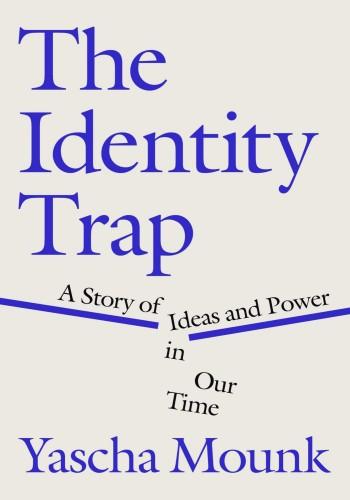
The Identity Trap: A Story of Ideas and Power in Our Time
by
Yascha Mounk
Published 26 Sep 2023
Suzy Kies, who was co-chair of the Indigenous peoples’ commission in the Liberal Party of Canada in 2019, advised a Catholic school board to burn, recycle, or bury more than forty-seven hundred books. After no record of Kies’s Indigenous ancestry could be found, the Liberal Party condemned her actions and she resigned shortly thereafter. Kevin J. Jones, “Indigenous ‘Expert’ Advised Book Burnings at Catholic Schools,” Catholic News Agency, Oct. 6, 2021, www.catholicnewsagency.com/news/249209/indigenous-expert-who-advised-book-burnings-at-catholic-schools-in-canada-draws-scrutiny. GO TO NOTE REFERENCE IN TEXT resign her teaching post: Richard Adams, “Sussex Professor Resigns After Transgender Rights Row,” Guardian, Oct. 28, 2021, www.theguardian.com/world/2021/oct/28/sussex-professor-kathleen-stock-resigns-after-transgender-rights-row.
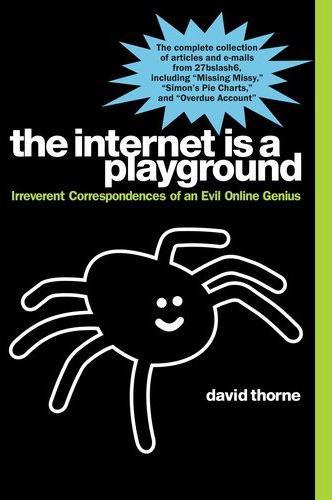
The Internet Is a Playground
by
David Thorne
Published 24 Mar 2010
Discipline is the key to conformity, and it is important that we learn not to question authority at an early age. Just this week I found a Sue Townsend novel in Seb’s bag that I do not believe is on the school-approved reading list. Do not concern yourself about it making its way to the schoolyard, though, because we attended a community book burning last night. Although one lady tried to ruin the atmosphere with comments regarding Mayan codices and the Alexandrian Libraries, I mentioned to the High Magus that I had overheard her discussing spells to turn the village cow’s milk sour, and the mob took care of the rest. Regards, David From: Margaret Bennett Date: Thursday 28 August 2009 11:56 a.m.

The Milky Way: An Autobiography of Our Galaxy
by
Moiya McTier
Published 14 Aug 2022
But there were a few who claimed to identify, thanks to the foresight of gifted prophets, not only how the world would end, but also what would cause it. Too many of these stories have been lost to time, either never written down or inscribed on a surface too fragile to survive your world’s caustic environment and violent acts (*cough* book burning *cough*). But some endured to be told—and even believed—today. One of the survivors comes to us from your old Norse folk in the tale of Ragnarok, meaning “fate of the gods.” Many of you are probably familiar with the story, thanks to one of those ridiculously charming Australian brothers, but the original tale had more battle cries and fewer rock anthems.
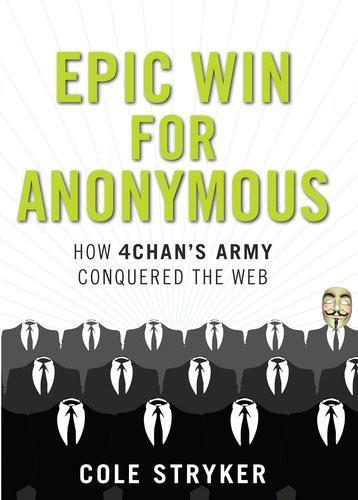
Epic Win for Anonymous: How 4chan's Army Conquered the Web
by
Cole Stryker
Published 14 Jun 2011
Any images which we have of a sexual nature are in a context which render them far from obscene, in any United States jurisdiction. Some of the images may be offensive, but that has never been a crime. Life is sometimes offensive. You have to expect that. The images we find most obscene are those of book burnings. In 2001 the Rotten staff launched The Gaping Maw, which offered biting cultural commentary and satire, like a bizarre, adults-only Mad magazine. Because The Gaping Maw was hosted on Rotten, a site that was routinely threatened with lawsuits, its writers could get away with just about anything, providing some of the freshest commentary on the web.
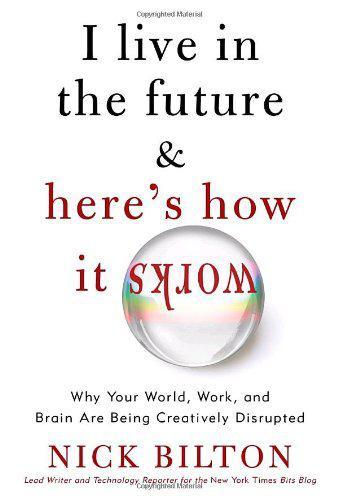
I Live in the Future & Here's How It Works: Why Your World, Work, and Brain Are Being Creatively Disrupted
by
Nick Bilton
Published 13 Sep 2010
On the first day of the hearings, Fredric Wertham, a famous psychiatrist known for his expertise on criminals and sex offenders, testified that he was certain, “without any reasonable doubt and without any reservation, that comic books are an important contributing factor in many cases of juvenile delinquency.” Wertham even called comics Superman and Tarzan sadistic and masochistic. Then he went further, saying quietly, “Hitler was a beginner compared to the comic book industry.” After the hearings, at least twelve states developed new anti–comic book laws and oversaw comic-book burnings. Congress urged the industry to police itself, and, feeling the pressure, a new comic-book industry oversight group was created called the Comics Magazines Association of America. This group came up with a set of strict rules, a “Code for Editorial Matter,” which make any video-game warnings we have today seem incredibly tame.

The Midnight Library
by
Matt Haig
Published 12 Aug 2020
The ceiling was falling down now, in pieces, as if the plaster was no more stable than the icing of a wedding cake. Nora noticed something even more distressing. A spark flew from one of the lights and landed on a book, which consequently ignited into a glowing burst of fire. Pretty soon the fire was spreading along the entire shelf, the books burning as rapidly as if they were doused in petrol. A whole stream of hot, raging, roaring amber. Then another spark arced towards a different shelf and that too set alight. At about the same time a large chunk of dusty ceiling landed by Nora’s feet. ‘Under the table!’ ordered Mrs Elm. ‘Now!’ Nora hunched down and followed Mrs Elm – who was now on all fours – under the table, where she sat on her knees and was forced, like Mrs Elm, to keep her head down.
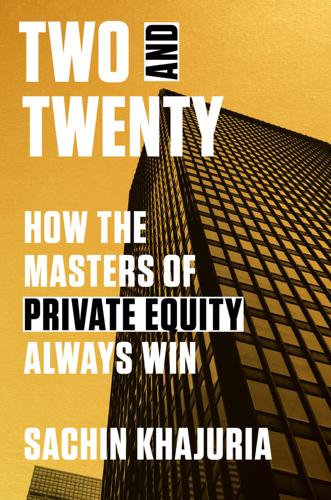
Two and Twenty: How the Masters of Private Equity Always Win
by
Sachin Khajuria
Published 13 Jun 2022
When private equity professionals look at where a target is at the start of a deal and compare this to how they expect the target to increase in value during private equity ownership, these are the factors they focus on. As they observe the increase in value of an investment and the risk of things going wrong, they ask themselves, week in and week out, Can I see this working out? In 2020 and 2021, the period in which I was writing this book, burning buildings were everywhere—and the masters of private equity were running inside. Private equity dealmakers analyzed the risks of businesses impacted by the Covid-19 pandemic, positively and negatively, uncovering concrete paths to compelling returns across the economy. Often, such deals involved structuring the money going in as loans, or a mix of loans and equity, or a hybrid instrument such as preferred equity that has attributes of both.
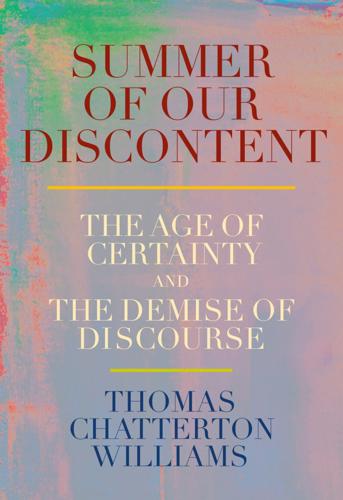
Summer of Our Discontent: The Age of Certainty and the Demise of Discourse
by
Thomas Chatterton Williams
Published 4 Aug 2025
Are we interested at all in the perspectives of those minorities within the minority: the Muslim with a critique of Islamism;[*12] the young white woman who is concerned about due process in the era of #MeToo; the black Ivy League professor who balks at the new “antiracist” doctrine that reifies racial difference? Are these not also authentic points of view? Skip Notes *1 This move was widely criticized at the time. Putin compared it to Nazi book burning in the 1930s. *2 Rowling immediately distanced herself from Putin’s comments. “Critiques of western cancel culture are possibly not best made by those currently slaughtering civilians for the crime of resistance, or who jail and poison their critics,” she tweeted to her more than fourteen million Twitter followers, adding the hashtag #IStandWithUkraine
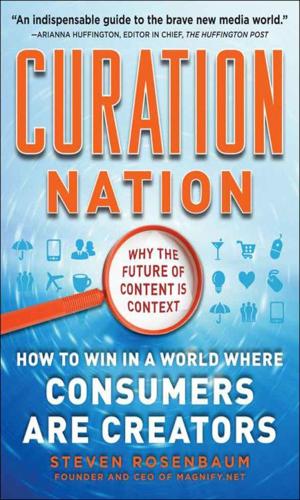
Curation Nation
by
Rosenbaum, Steven
Published 27 Jan 2011
Author and blogger Michael Wolff has made a career out of biting the hand that feeds him. As an early new-media mogul, Wolff’s early CD-ROM company Wolff New Media was a victim of the early dot-bomb bust. But rather than dust himself off and try again, Wolff instead penned a book that became a manual on what not to do when starting an Internet company. The book, Burn Rate, bought Wolff street cred as an outsider. So he went on to pen a column for New York Magazine that routinely savaged folks from the New York media scene, which made him an honored but feared guest at most of the trendy industry parties. When New York Magazine went up for sale, Wolff tried to buy it with a few partners; when that didn’t work, he was quickly out of a job.
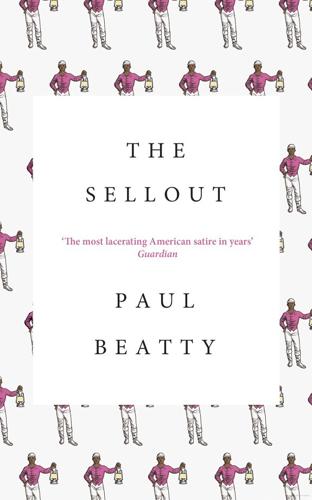
The Sellout: A Novel
by
Paul Beatty
Published 2 Mar 2016
When it reached the back, King Cuz handed it off to me without even looking at it, and as soon as I read the title, I didn’t want to let go. The Adventures of Tom Soarer. It dawned on me that Foy’s written works were Black Folk(s) Art and were going to be worth something one day. I was beginning to regret the book burning thing and that I hadn’t started a collection, because I’d spent the past ten years looking down my broad black nose at probably now-impossible-to-find first-and-only-edition titles like The Old Black Man and the Inflatable Winnie the Pooh Swimming Pool, Measured Expectations, Middlemarch Middle of April, I’ll Have Your Money—I Swear.
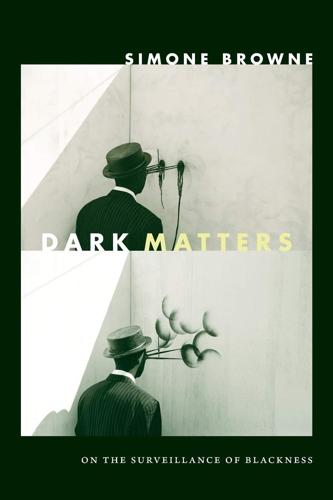
Dark Matters: On the Surveillance of Blackness
by
Simone Browne
Published 1 Oct 2015
For the novel’s release in the United States, Australia, and New Zealand, it is titled Somebody Knows My Name, as the publisher reasoned that “Negroes” in the book’s original title could cause offense with some audiences. The Dutch edition of the book is titled Het Negerboek. A burning of the novel’s cover was organized by a group of Afro-descended Dutch Surinamese to protest the book’s title in Amsterdam in 2011. For more on this book burning, see Hill, Dear Sir. 64. Hill, The Book of Negroes, 306. 65. Ibid., 307. 3. B®anding Blackness 1. “An Instrument of Torture among Slaveholders,” Harper’s Weekly 6, no. 268 (February 15, 1862): 108. 2. “White and Colored Slaves,” Harper’s Weekly 8, no. 370 (January 30, 1864): 71. 3.

Learning to Think: A Memoir
by
Tracy King
Published 12 Mar 2025
I don’t know whether it was Jackie or me who said it, although I think it was probably me. I was convinced Satan could manifest in the pages of my fantasy books and get to me. So we burned them. We made a wretched bonfire in the now overgrown back garden as it was getting dark. Jackie struck the match. The pages of Steve Jackson and Ian Livingstone’s books burned into ashes, which flew away across the garden and out into the world. I imagined the demons screaming in frustration and fleeing back to Hell. Jackie and I prayed. It felt good to be with her in the garden exorcizing demons from books and our lives. We were in control here. Bad things could enter our lives but we would recognize them and send them packing.
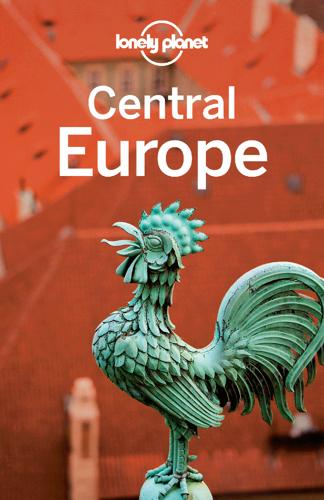
Central Europe Travel Guide
by
Lonely Planet
Alternatively, head to Lonely Planet (www.lonelyplanet.com/germany/berlin) for planning advice, author recommendations, traveller reviews and insider tips. Bebelplatz MEMORIAL (Bebl Square; Click here ; Französische Strasse) Set on the Unter den Linden opposite the Humboldt University, this book-burning memorial is a reminder of the first major Nazi book-burning, which occurred in May 1933. A transparent window tile in the stone pavement reveals empty bookshelves below. Museumsinsel MUSEUM (Museums Island; all museums 2090 5577; www.smb.museum; adult/concession per museum €10/5, combined ticket for all museums €14/7; 10am-6pm Tue-Sun, to 10pm Thu; S-Bahn Hackescher Markt) Lying along the Spree River, the Museumsinsel contains the Pergamonmuseum ( Am Kupfergraben 5) , which is to Berlin what the British Museum is to London: a feast of Mesopotamian, Greek and Roman antiquities looted by archaeologists.
…
But Wowereit remains undaunted and tries to look on the bright side, constantly reminding us of his now-famous proclamation, ‘Berlin is poor, but sexy’. BERLIN IN TWO DAYS Investigate the Brandenburg Gate area, including the Reichstag and the Holocaust Memorial . Walk east along Unter den Linden, stopping at the Bebelplatz book-burning memorial . Veer through the Museumsinsel for window-shopping and cafe-hopping through Hackescher Markt . In the evening, explore the bars of Prenzlauer Berg, along Kastanieanallee and Pappelallee, stopping for a drink in Fleischmöbel . Start the next day at the East Side Gallery remnant of the Berlin Wall, before heading to Checkpoint Charlie and the nearby Jewish Museum .
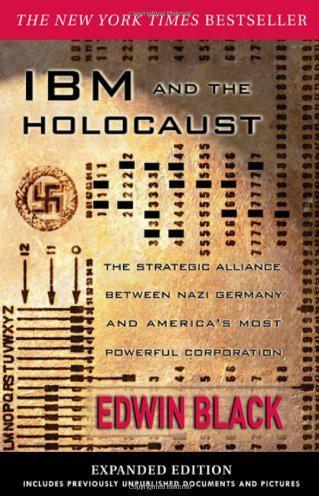
IBM and the Holocaust
by
Edwin Black
Published 30 Jun 2001
“Chief of Police Himmler of Munich today informed newspaper men here that the first of several concentration camps will be established near this city.”48 By April 20, about the time Watson decided IBM should solicit the census project, New York Times headlines reported more than 10,000 refugees had fled Germany in the face of daily home invasions, tortures, and kidnappings; 30,000 more were already imprisoned in camps or prisons; and another 100,000 were facing economic ruination and even starvation. On May 10, about the time IBM was at the height of its negotiations for the census, the world was further shocked when Nazis staged their first and most publicized mass book burning. By the end of May, when Dehomag’s contract with the Reich was finalized, the New York Times and the rest of America’s media had continuously published detailed accounts of Jews being brutally ousted from one profession after another: judges ceremoniously marched out of their courtrooms, lawyers pushed from their offices, doctors expelled from their clinics, professors drummed out of their classrooms, retailers evicted from their own stores, and scientists barred from their own labs.49 On June 11, the day before the door-to-door census taking began, the New York Times reported that the government was searching through the backgrounds of more than 350,000 government workers to identify which among them might be of “Jewish extraction who are liable to dismissal.”
…
“Nazis to Put Bavarian Foes in Concentration Camp,” NYT, March 21, 1933. 49. “3 More Americans Attacked in Berlin As Raiding Goes On,” NYT, March 10, 1933; “German Socialists Reported Tortured,” NYT, March 18, 1933; “Terror in Germany Amazes Novelist,” NYT, March 21, 1933; “Nazis Hunt Arms in Einstein Home,” NYT, March 21, 1933; “German Jailings Spreading Terror,” NYT, March 27, 1933; “Hitlerites Order Boycott Against Jews in Business, Professions and Schools,” NYT, March 29, 1933; “Boycott Spreads in Reich but Hitler Bans Violent Acts,” NYT, March 30, 1933; “Nazis Cut Boycott Today with Threat of Renewal if World Does Not Recant,” “Nazis Oust Jews From Law Courts,” NYT, April 1, 1933; “Boycott at End, Germany Believes,” “Germans Fearful Under Nazi Regime,” NYT, April 3, 1933; “Nazis to Control Lutheran Church,” NYT, April 6, 1933; “Nazis Seize Power to Rule Business,” “Nazis Demand Ban on Old Testament,” NYT, April 7, 1933; “Nazis Herd Enemies Behind Barbed Wire in Big Prison Camps,” “Nazis Hold Foes in Prison Camp,” “Reich Authors Oust Non-Nationalists,” “Nazis Demand Divorce of Jewish Wives by Officials if They Are to Retain Jobs,” NYT, April 8, 1933; “Schwarz Ousted As Reich Counsel,” NYT, April 12, 1933; “10,000 Jews Flee Nazi Persecution,” NYT, April 15, 1933; “Nazi Book-Burning Fails to Stir Berlin,” NYT, May 11, 1993; “League Will Hear Jews on Oppression by Nazis; Drummond Forces Issue,” NYT, May 21, 1933. 50. “Reich Post Ministry Is Sifting Out Jews,” “Nazi Jewish Policy Assailed in Senate As Peril to Peace,” NYT, June 11, 1933. 51. “Nazis Hold 80,000, Camp Study Shows,” NYT, August 29, 1933. 52.
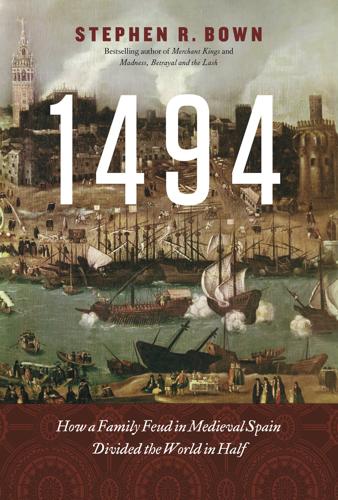
1494: How a Family Feud in Medieval Spain Divided the World in Half
by
Stephen R. Bown
Published 15 Feb 2011
Not many years later, this edict, similar in impact to what modern writers would call “ethnic cleansing,” would be applied to all Muslims as well. The spiritual purity of all Catholics, especially those newly converted to avoid expulsion from their homeland, was enforced by the tortures and horrors of the Inquisitors with their anonymous denunciations, book burnings, theatrical trials, violently extracted confessions, public burnings of heretics and apostates following the infamous autos-da-fé, and, of course, the confiscations of property for the use and support of the Inquisitors and their institution. AFTER SO long a delay, things now moved very quickly for Columbus.
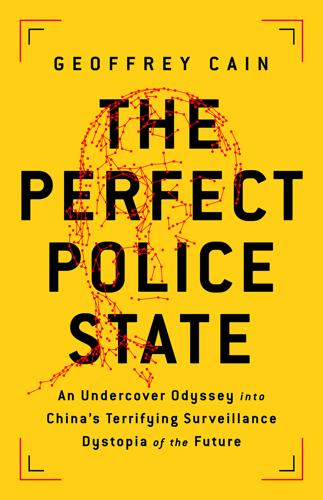
The Perfect Police State: An Undercover Odyssey Into China's Terrifying Surveillance Dystopia of the Future
by
Geoffrey Cain
Published 28 Jun 2021
The editors at state-run presses were supposed to act as censors. Tursun received death threats, and became a symbol of liberal thought in a newly thriving literary scene.17 “He challenged the taboos head-on,” his friend, the poet Tahir Hamut, told me. “The conservative writers and the Islamists were deeply upset.” One school in southern Xinjiang staged a book burning of The Art of Suicide. Turson’s wife left him, unwilling to put up with the mob that threatened their family.18 Hamut, Tursun, and others began forgoing traditional journals and magazines, which went through state censors, and started publishing their work on a thriving collection of indie Uyghur-language websites that somehow evaded official scrutiny.
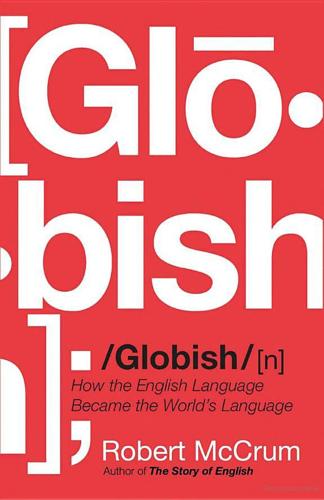
Globish: How the English Language Became the World's Language
by
Robert McCrum
Published 24 May 2010
At court, the new dynasty could impose a new discipline on the warring aristocratic families of England, but it could do little to curb the peoples’ appetite for access to education, power and influence. From the 1500s London was a city where ideas as much as goods were being traded at a pace that frightened the authorities, triggering waves of book-burning and repression. Now the vernacular Bible became the symbol of a liberated print culture, and then, intriguingly, of a liberated king. Once again, the breakthrough came across the Channel, in Europe. William Tyndale’s ruling passion was to render the defining texts of the culture in a version that even ‘the boy that driveth the plough’ could grasp.
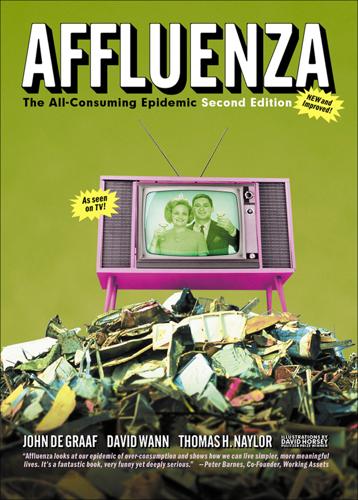
Affluenza: The All-Consuming Epidemic
by
John de Graaf
,
David Wann
,
Thomas H Naylor
and
David Horsey
Published 1 Jan 2001
This “absorb the enemy” tactic accomplishes several things at once. It gives the company a buffed-up, green-washed image, and it distracts the environmental opponent/partner. Said one corporate partner, “We keep them so busy they don’t have time to sue us.” “Another basic tactic is what I call book burning,” Stauber says. “PR firms are hired to cast dark shadows on certain books. They often obtain book tour itineraries from inside sources and use a variety of tactics to sabotage the tours.” For example, Jeremy Rifkin’s tour for Beyond Beef, a critique of the meat industry, was derailed by fake phone calls, allegedly from the author’s publicist, canceling each speaking appearance.

Only Humans Need Apply: Winners and Losers in the Age of Smart Machines
by
Thomas H. Davenport
and
Julia Kirby
Published 23 May 2016
If governments end up helping out—and we encourage them to do so, in the last chapter of this book—so much the better. The strategies we lay out in the coming chapters will work for those humans who are willing to work to add value to machines, and who are willing to have machines add value to them. Those humans—and it’s impossible to know just how many there are of them—will be the ones who read this book, burn the midnight oil to improve their own skills, and either make friends with smart machines or find a way to do things they can’t do. Complacency is not an option. But despondency isn’t required, either. The same attitude of optimistic concern is appropriate for how we think about the capabilities of technology.

Falter: Has the Human Game Begun to Play Itself Out?
by
Bill McKibben
Published 15 Apr 2019
Oh, and Roark’s also more or less a rapist—the “love story” that runs through the book involves him dominating the beautiful Dominique, a “brutal portrayal of a conquest, an episode that left Dominique bruised, battered, and wanting more.”23 Rand offered “conflicting explanations for the sadomasochistic scene” that is “one of the most popular and controversial parts of the book,” Burns notes. It isn’t real rape, Rand once explained to a fan; it is “rape by engraved invitation.”24 The book reaches its climax, however, not in the bedroom but in the courtroom, where Roark has to defend himself after he has blown up a housing project. Why? Because it wasn’t built exactly the way he’d designed it.
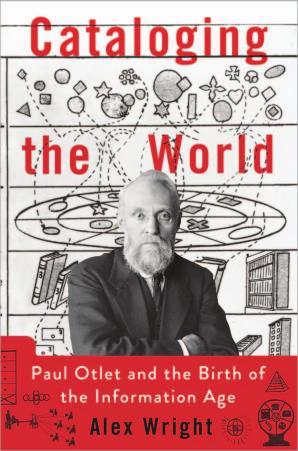
Cataloging the World: Paul Otlet and the Birth of the Information Age
by
Alex Wright
Published 6 Jun 2014
Drawing on this vast library of impounded books, Hitler hoped to build a new university worthy of the Third Reich, to be called the Hohe Schule. As the long-serving head of Germany’s greatest library, Krüss had risen to prominence in the Nazi political apparatus, earning the Führer’s trust when he emerged as a highly visible apologist for the infamous Nazi book-burnings of 1933. By 1940 he had attained the rank of director general, and now served on Hitler’s Privy Council. He had assumed a key role with the Rosenberg panel as one of its top three officials, and the leading authority on matters related to books, determining which titles to retain and which to discard from thousands of newly conquered libraries across Europe.3 The commission would ultimately confiscate millions of volumes— including prized first editions, rare illuminated manuscripts, and countless other, more prosaic works on every topic imaginable—as well as paintings, religious objects, and innumerable other cultural artifacts.
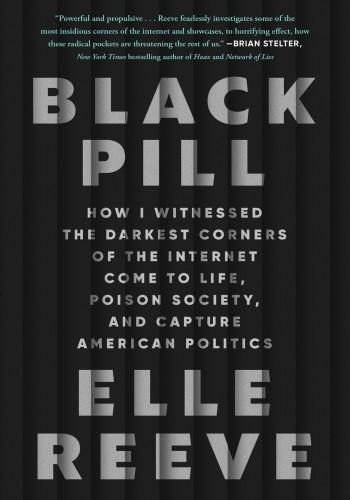
Black Pill: How I Witnessed the Darkest Corners of the Internet Come to Life, Poison Society, and Capture American Politics
by
Elle Reeve
Published 9 Jul 2024
Andrew Anglin described it as “a white form of hostile religiously driven law to be imposed on all who oppose it.” What it mostly meant was that women were ruining society and needed to be subjugated by force. No voting, no owning property, forced marriages at a young age, no birth control. Froelich went to a book burning where there were fliers that said, “WHITE SHARIA ZONE. THOTS MUST WEAR HIJAB AT ALL TIMES.” (“Thot,” or “that ho over there,” is a term the alt-right ripped off from hip-hop, and means, essentially, a slut.) She held a flier with manicured nails and took a picture. It was all ironic, of course.
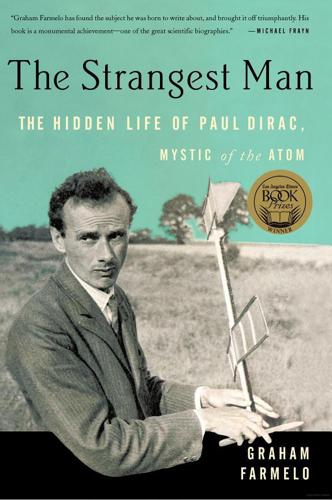
The Strangest Man: The Hidden Life of Paul Dirac, Mystic of the Atom
by
Graham Farmelo
Published 24 Aug 2009
The following night, Göttingen was ablaze with torchlight as a procession of uniformed Nazis wended its way through the streets of the old town, singing patriotic songs at the tops of their voices, waving their swastikas and making anti-Semitic jokes. Hitler dashed naive hopes that he would moderate his policies on coming to power, swiftly implementing a dictatorship. On 6 May, the Nazis announced a purge of non-Aryan academics from universities, and, four days later, book-burning ceremonies were held all over Germany, including Göttingen and Berlin. Even before Hitler rose to power, Einstein had left Germany, and he quickly announced that he would not return. Hundreds of other Jewish scientists were desperate to emigrate. Dozens were rescued by Frederick Lindemann, Rutherford’s counterpart at Oxford University, a prickly and sarcastic snob who had toured universities in Germany in his chauffeur-driven Rolls Royce offering threatened academics a safe haven in his laboratory.
…
Scott 1, 2, 3 Flexner, Abraham 1, 2, 3, 4, 5, 6 Florida State University 1 Physics Department 1, 2 n62 PD moves from Cambridge to 1, 2 treatment of PD 1 Keen Building 1 and PD’s funeral 1 Dirac Science Library 1 fluid mechanics 1 Fock, Vladimir 1, 2, 3n25 Folies Bergère 1, 2n5 Ford, Henry 1 Foreign Office 1, 2, 3 Fourier, Joseph 1 Fowler, Ralph 1, 2, 3, 4, 5, 6, 7, 8, 9 PD’s supervisor at Cambridge 1, 2, 3, 4, 5, 6, 7 and Rutherford 1 lectures on Bohr’s theory 1 works with Bohr 1 and PD’s paper ‘The Fundamental Equations of Quantum Mechanics’ 1 elected a Fellow of the Royal Society 1 PD’s visits to Copenhagen and Göttingen 1 co-edits the ‘International Series of Monographs on Physics’ 1 failing health 1 death 1 Franck, James 1 Franco, General 1, 2 Frank, Anne 1 Frank, Sir Charles 1n9 Fraser, Peter 1, 2 Frayn, Michael: Copenhagen 1 French Circle 1 French Riviera 1 Frenkel, Yakov 1, 2 Friedmann, Alexander 1 Frisch, Otto 1, 2, 3 Frisch, Otto and Peierls, Rudolf: ‘Memorandum on the Properties of a Radioactive “Super-Bomb”’ 1 Frith, Uta 1 Frost, Robert 1 Fuchs, Klaus 1, 2 fundamental interactions, unified theory of 1 fundamental particles 1, 2, 3 ‘Future of Nuclear Science’ conference (Graduate College, Princeton, 1946) 1 Gabor, Dennis 1n50 Galileo Galilei 1 Galsworthy, John: Forsyte Saga 1 Gamow, Barbara (née Perkins) 1, 2n2 Gamow, George 1, 2, 3, 4, 5, 6, 7, 8, 9, 10, 11, 12, 13, 14n13 Gamow, Lyubov Vokhminzeva (‘Rho’) 1, 2, 3, 4, 5 Gandhi, Mahatma M.K. 1, 2 Gardiner, Margaret 1 Gaspra, Crimea 1 gauge invariance 1 gauge theory 1, 2n25 Gautier, Théophile 1, 2n42 Gebhard’s Hotel, Göttingen 1 Geiger counters 1 Gell-Mann, Murray 1, 2, 3n29, 4n30 General Strike (1926) 1, 2, 3 genetics 1, 2 Geneva, Switzerland 1, 2, 3 geometry differential 1n56 Euclidean 1, 2, 3 non-Euclidean 1 PD immersed in at Cambridge 1 projective 1, 2, 3, 4, 5, 6, 7 Riemannian 1, 2, 3 George V, King 1, 2, 3 Gercke, Achim 1 Germany Youth Movement 1 the Depression in 1 new militarism in 1 Einstein flees to the US 1, 2 Hitler becomes Chancellor 1 book-burning ceremonies 1 annexes Austria 1 invades Czechoslovakia 1, 2 invades Poland 1 Britain declares war on 1 overwhelms Norway and Denmark 1 blitzkrieg on Belgium, Luxembourg and the Netherlands 1 U-boat fleet 1 Germer, Lester 1, 2 Gill, Eric 1 Glacier National Park 1 gluons 1 Go (a.k.a.
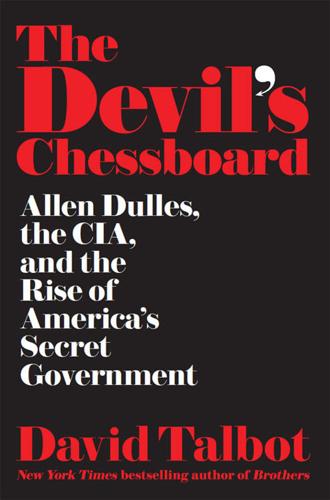
The Devil's Chessboard: Allen Dulles, the CIA, and the Rise of America's Secret Government
by
David Talbot
Published 5 Sep 2016
These embassy libraries were supposed to be a “balanced collection of American thought”—showcases for U.S. tolerance and diversity. But Cohn and Schine were determined to cleanse the libraries of all books they suspected of a leftward tilt. The pair’s investigative junket, which one subpoenaed author labeled “a book burning,” turned into a public relations disaster for the United States, provoking widespread revulsion and ridicule in the European press. While visiting Frankfurt, Cohn and Schine found other ways to embarrass their country, according to a local newspaper, engaging in flirtatious antics in a hotel lobby and leaving their hotel room in a shambles after a vigorous round of horseplay that the reporter left up to the reader’s imagination.
…
Ambrose, Nixon: The Education of a Politician, 1913–1962 (New York: Touchstone, 1988), 312. 216“one obsession: to remain secretary of state”: Hoopes, Devil and John Foster Dulles, 160. 216“My brother was never a witch hunter”: AWD OH, Mudd Library. 217“Schine was Cohn’s dumb blonde”: Morgan, Reds, 429. 218“a book burning”: Ibid., 441. 218found other ways to embarrass their country: Ibid., 443. 219suspected Dulles of “secret communist leanings”: Mark Riebling, Wedge: How the Secret War Between the FBI and CIA Has Endangered National Security (New York: Touchstone, 2002), 120. 219“Penetration begins at home”: Quoted in James DiEugenio and Lisa Pease, eds., The Assassinations (Port Townsend, WA: Feral House, 2003), 141. 219rumored to occasionally show off photographic evidence of Hoover’s intimate relationship: See Anthony Summers, Official and Confidential: The Secret Life of J.
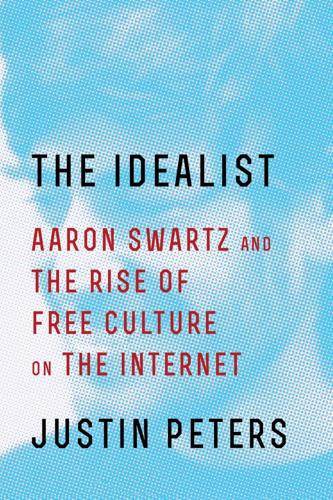
The Idealist: Aaron Swartz and the Rise of Free Culture on the Internet
by
Justin Peters
Published 11 Feb 2013
(Marryat’s true loyalties were most clearly revealed when, at a banquet, he offered a hearty toast to the brave crew of the British ship that had recently sunk an American vessel.)13 Marryat’s copyright application was denied and his claim to residency was rejected. The rest of Marryat’s trip to America was similarly discordant. In his amusing foreword to the 1960 edition of Marryat’s Diary in America, Jules Zanger observed that before the “tactless and blundering” novelist returned to Britain, he “had been threatened by a lynch mob, had watched his books burned in public bonfires, and on at least two occasions had seen himself hung in effigy by angry crowds.”14 Much as the country’s legislators did not want to hear Marryat proclaim their copyright laws unjust, the country’s citizens did not care to hear that their cities were ugly, their table manners were crude, and that they spat too much.
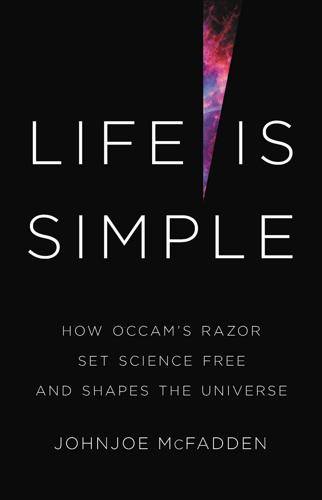
Life Is Simple: How Occam's Razor Set Science Free and Shapes the Universe
by
Johnjoe McFadden
Published 27 Sep 2021
To make matters worse, his claim for priority in the discovery of the principle of least action came to be disputed by several scientists, most famously the German mathematician Johann Samuel König (1712–57). König’s case was championed by Voltaire. When, through Maupertuis’s influence, the younger König was forced to leave the Berlin Academy, Voltaire was provoked to pen his Diatribe du Docteur Akakia. Frederick the Great rallied to the support of the director of his academy by ordering the book-burning. Nevertheless, Maupertuis felt humiliated. He resigned from the Berlin Academy and returned to Paris; finding little support there, he moved on to Basel in Switzerland, where in died in 1759. History has been kinder to Maupertuis and he is generally credited with the discovery of one of the deepest principles in science, the principle of least action.
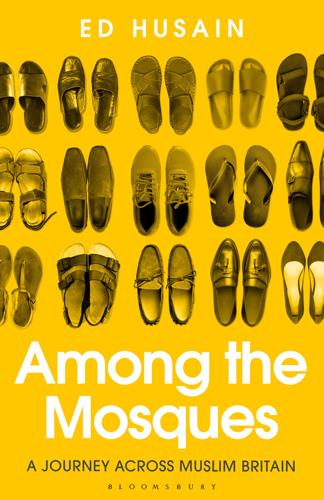
Among the Mosques: A Journey Across Muslim Britain
by
Ed Husain
Published 9 Jun 2021
Was it right for Muslims here in Bradford to call for his killing because he wrote The Satanic Verses, in which he insulted the Prophet Mohamed?’ The imam falls silent. ‘I tried to read the book. It doesn’t make sense. Pir Maruf’s main student, Haji Liaquat, organised the protests.’ ‘You mean the book burnings?’ I ask. ‘Look, it’s not like that. Yes, books were burned, but it was a matter of love. You have to understand that when you play with emotions anything can happen.’ I inadvertently frown. Imam Hasnain notices my growing unease and adds, ‘Even in the West, in matters of love we see death. Look at Romeo and Juliet.’
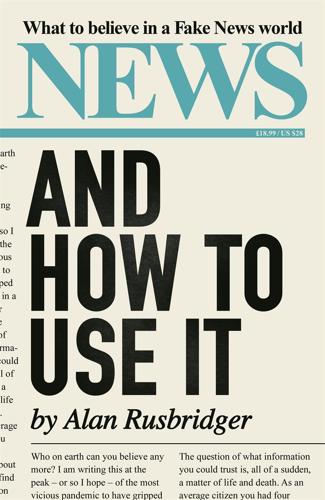
News and How to Use It: What to Believe in a Fake News World
by
Alan Rusbridger
Published 26 Nov 2020
This debate bled into the mainstream with the publication of his best-selling and salacious 2018 book Fire and Fury: Inside the Trump White House, but has dogged him throughout his reporting career. After working as a journalist for two decades, Wolff founded a company eponymously named Wolff New Media, which Wired described as a ‘Web information-packaging company’. After financial difficulties at the company, Wolff wrote about the experience in his 1998 best-selling book Burn Rate: How I Survived the Gold Rush Years on the Internet, which also led to his first brush with media criticism. In a review in the (also-defunct) publication Brill’s Content, lawyer and journalist Steven Brill questioned the factuality of the book, citing thirteen characters featured in it who said that Wolff ‘invented or changed quotes’.
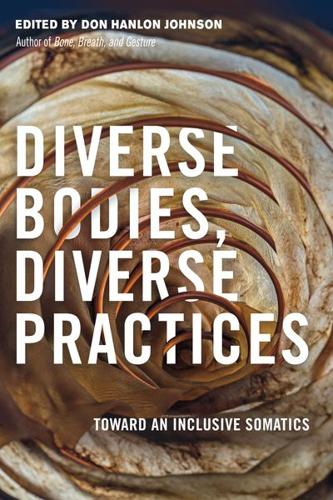
Diverse Bodies, Diverse Practices: Toward an Inclusive Somatics
by
Don Hanlon Johnson
Published 10 Sep 2018
Reich was ousted by every community he tried to join. In 1956, he was imprisoned in Lewisburg, Pennsylvania, on spurious charges of transporting so-called medical equipment across a state border. Shortly before he died there in 1957, the United States Food and Drug Administration held a medieval-style book-burning of everything he had published. Although their great hopes are dashed in the ruins of fragmented India and Pakistan and in the depredations of the West, Reich’s analysis of fascism and Gandhi’s of colonialism are crucial in getting beyond the tragic patterns of revolutions in which the formerly oppressed, when they succeed in getting power, regularly become the new oppressors.
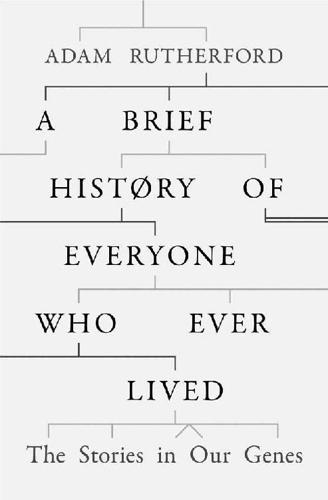
A Brief History of Everyone Who Ever Lived
by
Adam Rutherford
Published 7 Sep 2016
In Exodus 20:14, a single word was omitted, whether by accident or satanic diktat is unknown, and that word was ‘not’. The book became known as the ‘Wicked Bible’, as Commandment number seven in this verse decrees that ‘Thou shalt commit adultery’. That mutation didn’t survive very long, after some hasty embarrassed book burning. These mutations in DNA are called polymorphisms, and over the years, the HGP and HapMap were designed to find as many of the typos and spelling variations in the human genome as possible. All of the dozens of versions of the Bible currently available are still Bibles, and they all remain the tales and lessons of God and Jesus and that sort of thing.
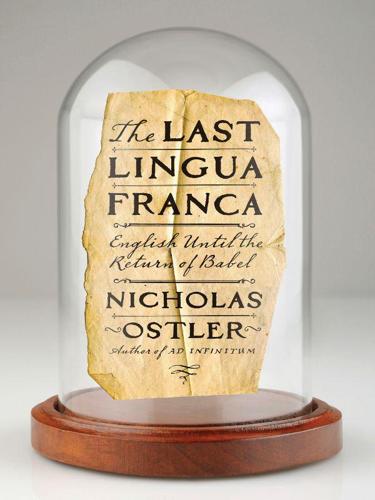
The Last Lingua Franca: English Until the Return of Babel
by
Nicholas Ostler
Published 23 Nov 2010
First, over the 1990s, as Russians steadily emigrated (their numbers decreasing from 6.1 to 2.6 percent), and a transition from Cyrillic to Roman script was attempted for Uzbek,* the number of schools with instruction in Russian fell by a third. Russian’s status as an official language was withdrawn in 1995 and, around the turn of the millennium, book-burning of Russian-language titles was quite frequent. Essentially, the rising generation in the 1990s stopped being taught Russian. But around 2003, Uzbek’s policy stance toward the Western powers changed, then went into full reversal after the repressive measure taken at Andijan in May 2005, followed by the closing of the U.S. air base at Karshi-Khanabad in November of the same year.
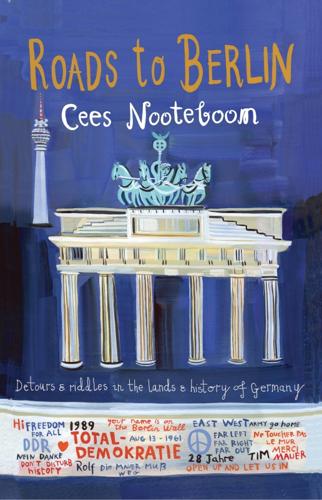
Roads to Berlin
by
Cees Nooteboom
and
Laura Watkinson
Published 2 Jan 1990
Frederick the Great never left; he rides his horse, frozen in his heroic pose. Figures on the Neoclassical buildings dance their stone dance in the last of the sunlight. Two soldiers stand, so motionlessly, in front of Schinkel’s Neue Wache, while opposite, on Bebelplatz, a memorial plaque serves as a reminder of a book-burning: “Auf diesem Platz vernichtete nazistischer Ungeist die besten Werke der deutschen und der Weltliteratur.”2 And only a short distance away: “LENIN arbeitete im Jahre 1898 in diesem Gebaüde.”3 Can I tell that things have changed just by looking at these people? No, I can see no difference. They are walking and shopping with no indication that half of their city is flowing into the other half at this very moment.
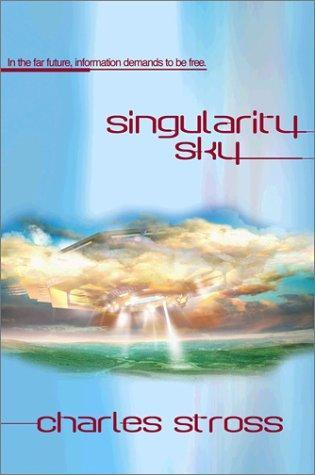
Singularity Sky
by
Stross, Charles
Published 28 Oct 2003
The New Republic filled her with a bitter, hopeless anger—one which she recognized, understood to be a poor reflection on her professionalism, but nevertheless couldn't set aside. The sheer waste of human potential that was the New Republic's raison d'etre offended her sensibilities as badly as a public book-burning, or a massacre of innocents. The New Republic was 250 years old, 250 light-years from Earth. When the Eschaton had relocated nine-tenths of Earth's population via wormhole—for reasons it hadn't deigned to explain—it had sorted some of them on the basis of ethnic or social or psychological affinity.
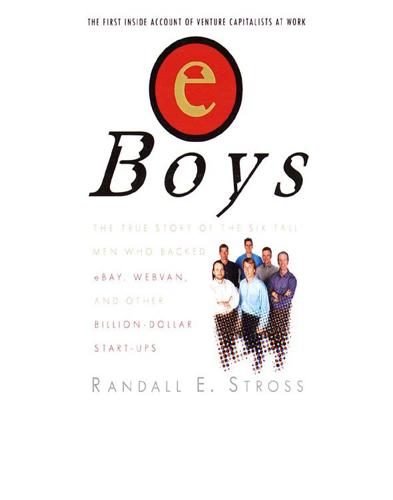
eBoys
by
Randall E. Stross
Published 30 Oct 2008
Benchmark Capital’s “fundamentally better architecture”—equal partnership, equal decision-making power, equal compensation—was a heretical arrangement, judging by the testimony of panelists. Pat Cloherty, of New York–based Patricof & Company (whose Mephistophelean partners were dished up in Michael Wolff’s 1998 book, Burn Rate), spoke of her firm’s highly evolved hierarchy: analysts, associates, senior associates, principals, and at the apex, partners. Sonja Hoel, a young venture capitalist at California-based Menlo Ventures, described how her firm’s year-end bonuses were based on a point system that would do a Pentagon-sized bureaucracy proud, carefully documenting “deals out the door,” replete with negative points, too, assigned for undesirable “performance metrics.”

A Mind at Play: How Claude Shannon Invented the Information Age
by
Jimmy Soni
and
Rob Goodman
Published 17 Jul 2017
It was one of the early hints that a mathematics of messaging might have something more to say than the most efficient design of a telephone network: that it might offer something more fundamental about “the plan” that the greatest physicists believed they had glimpsed. It was still only a guess, maybe a useful analogy and nothing more; but with Weyl’s approval, Shannon brought his full-time attention to bear on the questions of “intelligence” that he had first raised in his letter to Bush. * * * And, of course, there was Einstein. He had seen his books burned by the Nazis and had read his own name on a list of assassination targets; like Weyl, he had escaped Germany early, and had made his home in Princeton since 1933. There are a few Einstein-and-Shannon stories, and though they surely cannot all be true at the same time, we offer them all in the interest of completeness.

Chasing the Moon: The People, the Politics, and the Promise That Launched America Into the Space Age
by
Robert Stone
and
Alan Andres
Published 3 Jun 2019
A strong believer in furthering intellectual inquiry through the free exchange of ideas, Ley was deeply bothered by what was happening in Germany. He watched as scientists and researchers in many disciplines were purged from German academic institutions—primarily for racial reasons—and learned that selected scientific publications were being removed from library shelves. On university campuses, the Nazis conducted public book burnings. Besides scientific works by Albert Einstein and Sigmund Freud and literature by Bertolt Brecht and Thomas Mann, the Nazis had also consigned many classic works of science fiction to the bonfires. As he read the news and talked with acquaintances, Ley was alarmed as things he had long opposed were gradually accepted as part of everyday life: a cult of loyalty and blind patriotism, militarism, anti-globalism, superstition, and pseudoscience.

After the Fall: Being American in the World We've Made
by
Ben Rhodes
Published 1 Jun 2021
We talked in an empty room of what was once the headquarters of the German Democratic Republic (GDR), a Soviet-backed nation that doesn’t exist anymore. The building was built in the drab style of 1960s Communist architecture. The exterior was gray and imposing, the interior filled with mosaics depicting idealized scenes of Germans in factories, farms, and mines contrasted with images of book burning and the persecution of workers under the Nazis. For more than three decades, the men who ruled the GDR with access to the Stasi’s files on the private lives of other East German citizens came to work in this building. It has since become one of Germany’s leading business schools, the European School of Management and Technology (ESMT), a name that encapsulates the technocratic ethos of globalization that shaped the beginning of the twenty-first century.

The Equality Machine: Harnessing Digital Technology for a Brighter, More Inclusive Future
by
Orly Lobel
Published 17 Oct 2022
I would have encountered a humanlike robot named Sweetheart, with large breasts and a narrow torso. That year, the university removed the robot from display after an outcry that it was insulting to women. Sweetheart’s creator, Clayton Bailey, an art professor at Cal State, warned that the removal was censorship akin to “book burning.” Yet as we just saw in Chapter 9, the sexualized female form for robots is nowhere near being censored today. Moreover, actively balancing out the images that are publicly displayed—selecting more equal and non-objectifying depictions to showcase at a university innovation exposition—should not be compared to a 1950s burning of Catcher in the Rye.
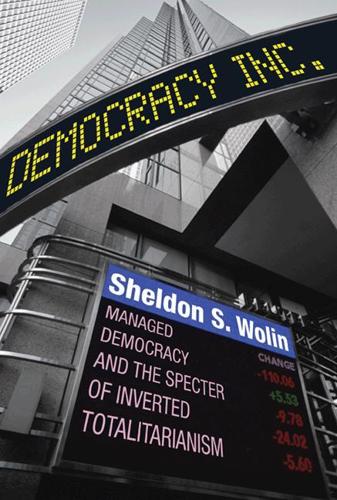
Democracy Incorporated
by
Sheldon S. Wolin
Published 7 Apr 2008
Through a combination of governmental contracts, corporate and foundation funds, joint projects involving university and corporate researchers, and wealthy individual donors, universities (especially socalled research universities), intellectuals, scholars, and researchers have been seamlessly integrated into the system. No books burned, no refugee Einsteins. For the first time in the history of American higher education top professors are made wealthy by the system, commanding salaries and perks that a budding CEO might envy. During the months leading up to and following the invasion of Iraq, university and college campuses, which had been such notorious centers of opposition to the Vietnam War that politicians and publicists spoke seriously of the need to “pacify the campuses,” hardly stirred.
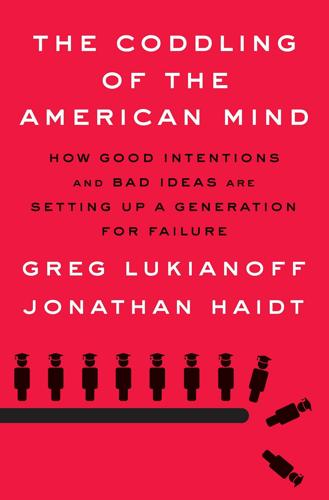
The Coddling of the American Mind: How Good Intentions and Bad Ideas Are Setting Up a Generation for Failure
by
Greg Lukianoff
and
Jonathan Haidt
Published 14 Jun 2018
Annual Review of Clinical Psychology, 7, 511–535. Buddelmeyer, H., & Powdthavee, N. (2015). Can having internal locus of control insure against negative shocks? Psychological evidence from panel data. Journal of Economic Behavior and Organization, 122, 88–109. Burns, D. D. (1980). Feeling good: The new mood therapy. New York, NY: Avon Books. Burns, D. D. (1999). The feeling good handbook. New York, NY: Plume. Butler, A. C., Chapman, J. E., Forman, E. M., & Beck, A. T. (2006). The empirical status of cognitive-behavioral therapy: A review of meta-analyses. Clinical Psychology Review, 26(1), 17–31. Byrom, T. (Ed. and Trans.). (1993).
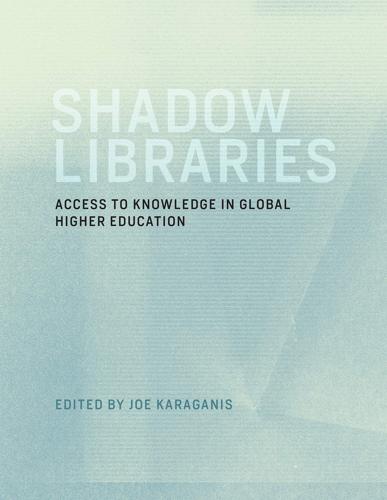
Shadow Libraries: Access to Knowledge in Global Higher Education
by
Joe Karaganis
Published 3 May 2018
Under the “Bureaucratic Authoritarian State” organized by Onganía (1966–1973) and later the “Process of National Reorganization” (1976–1983), Eudeba’s leadership positions were given to faculty close to the dictatorship. The directorship created lists of censured titles8 and pulled numerous previously published works out of circulation. In 1976, the new dictatorship took this practice to its logical end by organizing book burnings of censored titles. The return of democracy in 1983 allowed Eudeba to resume some of its former activities, but the crisis had greatly damaged its finances and the press never regained its former stature. From Public to Private: El Centro Editor de América Latina After the attacks on the university, Spivacow left Eudeba with the entire directorship and staff to start a new project: el Centro Editor de América Latina (CEAL).
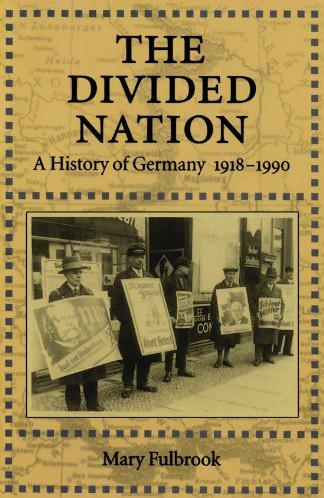
The Divided Nation: A History of Germany, 1918-1990
by
Mary Fulbrook
Published 14 Oct 1991
Goebbels' Ministry of Propaganda and Enlightenment, created in March 1933, sought increasing control of all media of communication and culture. A symbolic early event was the burning of books written by Jews, socialists and other 'undesirable intellectuals' on 10 May 1933. Although instigated by radical students, the book-burning was given official blessing by Goebbels' presence at the bonfires on Berlin's central street, Unter den Linden. The event did not in practice succeed entirely in eradicating books by banned authors from libraries across Germany, but it certainly contributed to the 'inner emigration' self-censorship and public silence as well as the literal emigration of many authors, among them Thomas and Heinrich Mann and Bertolt Brecht.

The Contrarian: Peter Thiel and Silicon Valley's Pursuit of Power
by
Max Chafkin
Published 14 Sep 2021
The exception that proves the rule: Ryan Bounds, a federal prosecutor who was nominated to be a federal judge in 2018. The Trump administration withdrew his name from consideration after a 1995 Review column surfaced in which Bounds complained that campus diversity initiatives “contribute more to restricting consciousness, aggravating intolerance, and pigeonholing cultural identities than many a Nazi book burning.” It was objectionable by the standards of the Trump White House but hardly any more extreme than what Rabois had been up to. Did Thiel condone this? Sort of. He seemed embarrassed by some of Rabois’s antics—and would never have been able to act them out himself—but he also found them useful.

The Fire and the Darkness: The Bombing of Dresden, 1945
by
Sinclair McKay
Martin Chalmers (Weidenfeld and Nicolson, 2003). 14 There is some information on Nieland’s surprising post-war life and rehabilitation to be seen at Sächsische Biografie, saebi.isgv.de/biografie/Hans_Nieland_(1900-1976). 25. Recoil 1 A very interesting – and frightening – piece about Kästner and his relationship with the Nazis (and the burning of his books) can be seen at Spiegel Online: www.spiegel.de/international/zeitgeist/nazi-book-burning-anniversary-erich-kaestner-and-the-nazis-a-894845.html. 2 Erich Kästner, When I Was a Little Boy, trans. Isabel and Florence McHugh (Jonathan Cape, 1959). 3 DCA, file 802. 4 DCA, file 477. 5 Harris Papers, folder 40, document dated 10 May 1945. 6 Harris, Bomber Offensive. 7 Ibid. 8 Harris Papers, folder 3A, letter dated 18 June 1945. 9 Letter from Taylor to The New York Times, published 18 January 1992. 10 This is part of an epic oral interview conducted by Hugh A.

The Controlled Demolition of the American Empire
by
Jeff Berwick
and
Charlie Robinson
Published 14 Apr 2020
This is a very dangerous form of government because too much power is concentrated at the top and the paranoia that the public will finally catch on to what is actually going on leads to authoritarian responses in almost every country that has become infected with this form of control. Corporatism leads to a police state, the rounding up of dissenters, detention facilities, book burnings, and self-censorship. It may sound extreme, but history shows that this is where society ends up. A report produced by Northwestern University and Princeton University concluded that the American government does not represent most citizens, but rather they are ruled by the rich and powerful “economic elite”, and that policies enacted by the United States governmental elite almost always favor lobbying organizations and special interests groups.
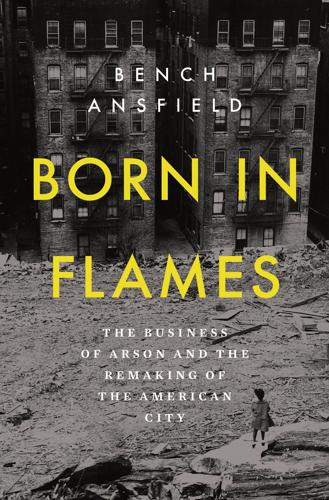
Born in Flames
by
Bench Ansfield
Published 15 Aug 2025
When New York psychologist Herbert Freudenberger went searching for an evocative metaphor for the syndrome he was beginning to diagnose, he found it in the fire-ravaged building. “If you have ever seen a building that has been burned out,” he wrote at the start of his internationally best-selling 1980 book, Burn Out: How to Beat the High Cost of Success, “you know it’s a devastating sight.” He continued: “As a practicing psychoanalyst, I have come to realize that people, as well as buildings, sometimes burn out.” Freudenberger’s epiphany came at the St. Mark’s Free Clinic, where, in the early 1970s, he served as a volunteer counselor to the throngs of hippie youth who congregated in the East Village.
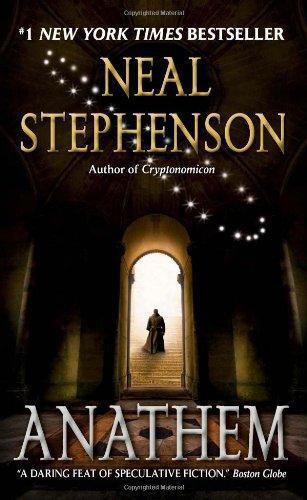
Anathem
by
Neal Stephenson
Published 25 Aug 2009
She started playing random selections from it, beginning with a lament for the Third Sack. To Cord, this was just Selection Number 37. To me it was just about the most powerful piece of music we had. We sang it only once a year, at the end of a week spent fasting and reciting the names of the dead and the titles of the books burned. Somehow, the feeling was right: if the Cousins turned out to be hostile, they might Sack the world. We came around a turn and were confronted by a wall of purple stone that went up until it disappeared in a cloud layer a mile above our heads. It must have stood there for a million years. Seeing it while I heard the lament, I felt what I can only describe as patriotism for my planet.
…
Gan Odru waited for a few moments, then said, “I suppose we’ve already established that, haven’t we? You apparently got inside Prag Eshwar’s head somehow.” “What signal did the third Gan receive nine centuries ago?” I asked. “A prophecy of terrible devastation. Robed priests massacred, churches torn down, books burning.” “What gave him the idea it was from the past?” “The churches were enormous. The books, written in unfamiliar script. On some of their burning leaves were geometrical proofs unknown to us—but later verified by our theors. On Urnud we had legends of a lost, mythic Golden Age. He assumed that he was being given a window into it.”

The Food Revolution: How Your Diet Can Help Save Your Life and Our World
by
John Robbins
Published 14 Sep 2010
Personally, I'd like to arrange for hundreds of [meat] industry people to order thousands of copies ... then light a huge bonfire with the reports somewhere in Washington, invite the media, and roast hot dogs over the flames.."" After Diet for a New America came out, another prominent meat executive wrote, "It's a pity book-burning isn't allowed in this country anymore, because Diet For A New America would be my first choice for such a fate" Sometimes people reveal a lot about themselves by how they respond to criticism. Food Irradiation The U.S. meat industry is extremely aware of the problems, and deaths, that can be caused by E. cola 0157:H7 and other pathogens in animal products.
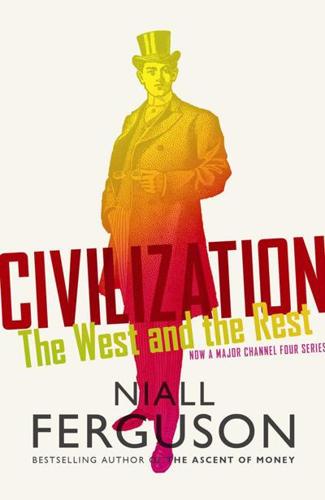
Civilization: The West and the Rest
by
Niall Ferguson
Published 28 Feb 2011
In the words of Abu Hamid al-Ghazali, author of The Incoherence of the Philosophers, ‘It is rare that someone becomes absorbed in this [foreign] science without renouncing religion and letting go the reins of piety within him.’33 Under clerical influence, the study of ancient philosophy was curtailed, books burned and so-called freethinkers persecuted; increasingly, the madrasas became focused exclusively on theology at a time when European universities were broadening the scope of their scholarship.34 Printing, too, was resisted in the Muslim world. For the Ottomans, script was sacred: there was a religious reverence for the pen, a preference for the art of calligraphy over the business of printing.
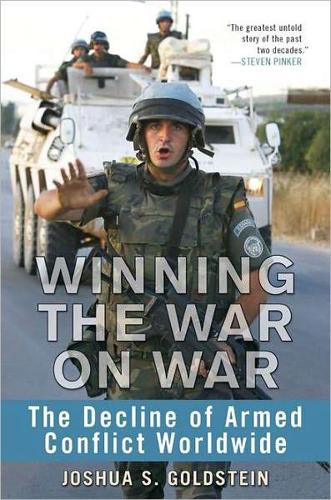
Winning the War on War: The Decline of Armed Conflict Worldwide
by
Joshua S. Goldstein
Published 15 Sep 2011
The Mongols killed another 700,000 to 1.3 million in Merv, where it took four days to evacuate the inhabitants and thirteen days to count the bodies after they were massacred. Merv had been “the pearl of Central Asia,” with mosques, mansions, and ten libraries containing 150,000 books, “all sustained by cool water flowing through tunnels from a dam across the River. . . .” After its capture, “the place was ransacked, the buildings mined, the books burned. . . .” Genghis Khan’s biographer, John Man, writes that the 1.3 million reported killed at Merv, on top of the 1.2 million in Urgench, “sounds simply incredible” but “is a more than possible death toll for Merv. . . .” Indeed, he concludes that genocides such as the Nazi Holocaust or the Rwandan genocide cannot match what the Mongols did to Merv.
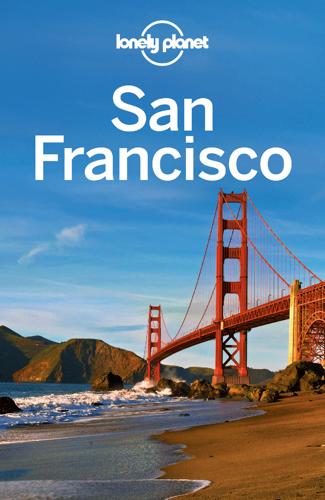
San Francisco
by
Lonely Planet
San Francisco as a Cultural Center is a cultural collage with a wink: opera flyers, men of letters and burlesque dancers all gather under a glowing moon. The Waterfront/1934 Strike shows the history-changing dock-workers’ strike organized just outside Rincon Center, and War and Peace concludes the cycle with very pointed (and given the artist’s experience, quite personal) anticensorship imagery, moving from Nazi book burning to postwar promises for ‘Freedom from fear/want/of worship/speech.’ Museum of the African Diaspora Museum Offline map Google map ( 415-358-7200; www.moadsf.org; 685 Mission St; adult/student $10/5; 11am-6pm Wed-Sat, noon-5pm Sun; & Montgomery St) A three-faced divinity by Ethiopian icon painter Qes Adamu Tesfaw, a stereotype in silhouette by American Kara Walker, a regal couple by British sensation Chris Ofili: this museum has assembled a standout international cast of characters to tell the epic story of diaspora.
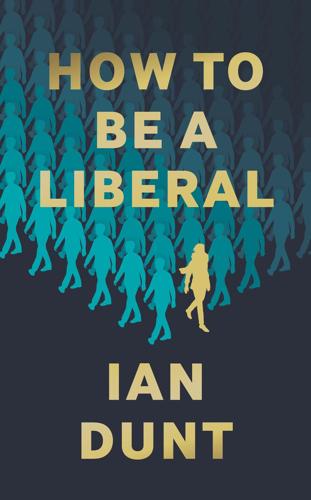
How to Be a Liberal: The Story of Liberalism and the Fight for Its Life
by
Ian Dunt
Published 15 Oct 2020
In the summer of 1637, three anti-Catholic writers – William Prynne, Henry Burton and John Bastwick – were hauled before the Star Chamber and convicted of seditious writing. They were fined £5,000 each – an inordinate sum of money – and sentenced to life imprisonment. They were also put in the pillories, had their books burned in front of them, and had their ears cut off. In the case of Prynne, who had already been before the Star Chamber four years earlier, the stumps of his ears left over from his previous mutilation were removed. He was branded with the initials SL, for ‘seditious libeller.’ One young man in his twenties was inspired by the plight of three men and the way they stood by their convictions despite their torture.
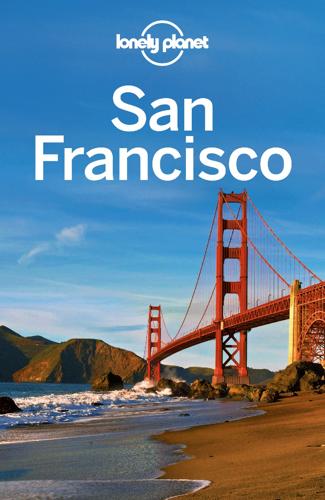
San Francisco
by
Lonely Planet
San Francisco as a Cultural Center is a cultural collage with a wink: opera flyers, men of letters and burlesque dancers all gather under a glowing moon. The Waterfront/1934 Strike shows the history-changing dock-workers’ strike organized just outside Rincon Center, and War and Peace concludes the cycle with very pointed (and given the artist’s experience, quite personal) anticensorship imagery, moving from Nazi book burning to postwar promises for ‘Freedom from fear/want/of worship/speech.’ Museum of the African Diaspora Museum Offline map Google map ( 415-358-7200; www.moadsf.org; 685 Mission St; adult/student $10/5; 11am-6pm Wed-Sat, noon-5pm Sun; & Montgomery St) A three-faced divinity by Ethiopian icon painter Qes Adamu Tesfaw, a stereotype in silhouette by American Kara Walker, a regal couple by British sensation Chris Ofili: this museum has assembled a standout international cast of characters to tell the epic story of diaspora.
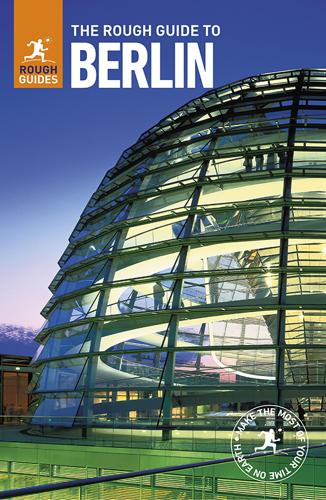
The Rough Guide to Berlin
by
Rough Guides
Some ruined foundations remain, but the flawlessly sleek and silvery piece of memorial-chic architecture in the middle houses the Topographie des Terrors (Topography of Terror), Germany’s most significant museum on the perpetrators of Nazi terror. Inside, this dreadful history is retold on numerous information panels (in both English and German) which include many reproduced black-and-white photos of Nazis and their forlorn victims at a range of miserable events – book burnings, public humiliations, the destruction of Jewish property and synagogues, the rounding-up of Jews and others to be murdered in concentration camps. It’s all sadly familiar, but what many don’t realize, and the exhibition goes out of its way to show, is that many of the perpetrators were never brought to justice.

Berlin
by
Andrea Schulte-Peevers
Published 20 Oct 2010
Buried beneath the austere floor are the remains of an unknown soldier and a resistance fighter as well as soil from nine European battlefields and concentration camps. BEBELPLATZ Map Hausvogteiplatz, Französische Strasse, 100, 200, TXL Named for August Bebel, the cofounder of the Social Democratic Party (SPD), Bebelplatz is sadly famous for being the square where the Nazis held their first full-blown official book burning on 10 May 1933. Books by Bertolt Brecht, Thomas Mann, Karl Marx and other ‘subversives’ went up in smoke and with it the cultural greatness Germany had achieved in previous centuries. Micha Ullmann’s Empty Library, beneath a glass pane at the square’s centre, commemorates the barbaric event. The buildings framing Bebelplatz were part of the Forum Fridericianum, a cultural extension of the city palace envisioned by Frederick the Great.
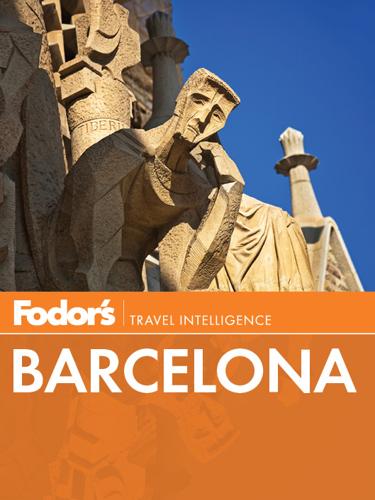
Fodor's Barcelona
by
Fodor's
Published 5 Apr 2011
After the abdication of Alfonso XIII and the establishment of the Second Spanish Republic in 1931, Catalonia enjoyed a high degree of autonomy and cultural freedom. Once again backing a losing cause, Barcelona was a Republican stronghold during the Spanish civil war. When the war ended, Catalan language and identity were once again brutally suppressed by such means as book burning, the renaming of streets and towns, and the banning of the Catalan language in schools and in the media. This repression, or “internal exile,” lasted until Franco’s death in 1975, when it became evident that the Catalans had once again, more stubbornly than ever, managed to keep their language and culture alive.

Going Clear: Scientology, Hollywood, and the Prison of Belief
by
Lawrence Wright
Published 17 Jan 2013
In response to such statements, in January 1997 a group of Hollywood celebrities, agents, lawyers, and movie executives published a full-page open letter to Chancellor Helmut Kohl in the International Herald Tribune. “Hitler made religious intolerance official government policy,” the letter stated. “In the 1930s it was the Jews. Today it is the Scientologists.” The letter compared the boycotts of Cruise, Travolta, and Corea to Nazi book-burnings. The letter was written and paid for by Bertram Fields, then the most powerful lawyer in Hollywood, whose clients included Travolta and Cruise. None of the thirty-four signatories of the document were Scientologists, but many were Jews. Most of them—such as Oliver Stone, Dustin Hoffman, and Goldie Hawn—had worked with the two stars or were friends or clients of Fields.
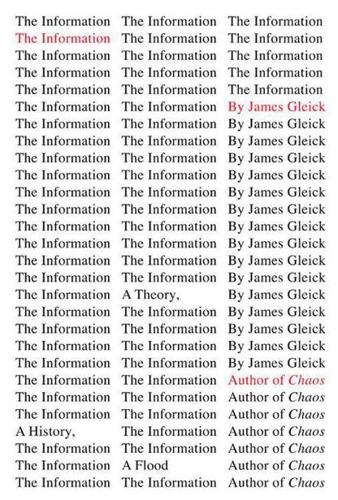
The Information: A History, a Theory, a Flood
by
James Gleick
Published 1 Mar 2011
G., 6.1, 6.2 Berry’s paradox, 6.1, 6.2, 12.1, 12.2, 12.3 Bible Bierce, Ambrose Bigelow, Julian binary operations coding systems for, 5.1, 5.2 representation of relay circuits as in telegraphy, 7.1, 8.1 in use of alphabetical ordering systems see also bit(s) biology entropy and, 9.1, 9.2, 9.3, 9.4 evolutionary, 10.1, 11.1 fundamental particles of of human ecosystem, 10.1, 10.2 information processing in, prl.1, prl.2, 10.1, 10.2, 10.3, 10.4 molecular, 9.1, 10.1, 10.2, 10.3 purposeful action in processes of, 9.1, 9.2 see also genetics; neurophysiology biosphere, 11.1, 11.2, 11.3 bit(s) as basis of physics, prl.1, prl.2, 13.1, 13.2 biological measurements cost of information processing data compression strategies, 12.1, 12.2 decision-making requirements definition of, prl.1, 7.1 first usage growth of measuring units, 14.1, 14.2 meaning and measurement of cosmos in, prl.1, 14.1 purpose transmission by fire beacon, 1.1, 1.2 black holes, prl.1, 13.1, 13.2, 13.3, 13.4 Blair, Ann Blair, Earl Bletchley Park, 7.1, 7.2, 8.1 Blount, Thomas, 3.1, 3.2 Bodleian Library, 3.1, 3.2, 6.1 Bohr, Niels, prl.1, 6.1, 13.1 Boltzmann, Ludwig, 9.1, 9.2 Bombe machine book burning Boole, George, prl.1, 5.1, 5.2, 5.3, 5.4, 5.5, 6.1, 6.2, 8.1, 8.2, 12.1 Borges, Jorge Luis, 14.1, 14.2, epl.1, epl.2 botanical dictionaries, 14.1, 14.2, 15.1 Bradley, Henry, 3.1, 3.2 Brahe, Tycho, 4.1, 15.1 brain; see neurophysiology Brassard, Gilles, 13.1, 13.2 “Breakdown of Physics in Gravitational Collapse, The” (Hawking) Brecht, Bertolt Breguet, Abraham-Louis, 5.1, 5.2 Brenner, Sydney, 10.1, 10.2, 10.3 Brewster, David, 4.1, 8.1 Bridenbaugh, Carl, 15.1, 15.2, 15.3 Briggs, Henry, 4.1, 4.2, 4.3, 4.4, 4.5 Brillouin, Léon, 9.1, 9.2, 9.3 Brin, Sergey, 14.1, epl.1 Broadbent, Donald, 8.1, 8.2 Brosin, Henry Brown, Robert Browne, Thomas, 1.1, 1.2, 5.1 Brownian motion, 6.1, 6.2, 8.1 Brunel, Isambard Kingdom Buchanan, James Bullokar, John Burgess, Anthony Burney, Venetia Burton, Robert, 15.1, 15.2, 15.3 Bush, Vannevar, prl.1, prl.2, 5.1n, 6.1, 6.2, 6.3, 6.4, 7.1 Butler, Samuel, 2.1, 10.1, 10.2 butterfly effect Byron, Augusta Ada; see Lovelace, Ada Byron, George Gordon, Lord, 4.1, 4.2 bytes Cage, John, 12.1, 12.2 Cairns-Smith, Alexander, 10.1, 10.2 calculators, calculating machines analog and digital Babbage’s Analytical Engine, 4.1, 4.2, 4.3, 4.4, 4.5, 4.6, 4.7, 4.8, 4.9, 4.10, 4.11, 4.12, 6.1, 7.1, 8.1 Babbage’s Difference Engine, 4.1, 4.2, 4.3, 4.4, 4.5, 4.6, 4.7, 4.8, 4.9, 4.10, 4.11, 4.12, 4.13, 4.14, 4.15, 4.16, 4.17, 4.18, 6.1 definition of “calculation,” 7.1 Differential Analyzer, 6.1, 6.2, 6.3, 6.4 in evolution of information technology, prl.1, 4.1 use of relay circuits in see also computation; computer(s); machines calculus, 4.1, 4.2, 4.3, 4.4, epl.1 Campbell, George, prl.1, prl.2 “Can Quantum-Mechanical Description of Physical Reality Be Considered Complete?”
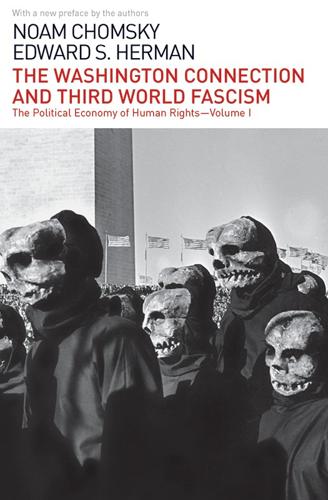
The Washington Connection and Third World Fascism
by
Noam Chomsky
Published 24 Oct 2014
CIA financing and organizational support to these terrorist organizations is widely alleged.98 The CIA presence in Thailand had been substantial, with 100 operatives reported there in 1974. But as Flood has noted: Yet, to understand the Octoher 6 rightwing military coup, and the subsequent repression, book burning, and the like, it is not necessary to posit the overt presence of CIA officers directly manipulating events in Bangkok with walkie-talkies. It is only necessary to look at the cumulative effects of almost a quarter century of careful cultivation by the U.S. of an essentially fascist-minded, repressive, reactionary, privileged military elite, faced with a majority of farmers and laborers who have been deprived of the dignity of political, social or economic recognition.
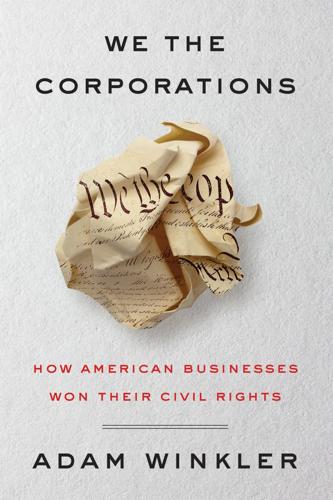
We the Corporations: How American Businesses Won Their Civil Rights
by
Adam Winkler
Published 27 Feb 2018
Even though Olson, not Bopp, stood at the podium on behalf of Citizens United, Bopp’s voice still resonated in the courtroom. It was in fact Bopp who had first called the justices’ attention to banning books. In his original filing asking the justices to hear the case, Bopp had colorfully warned that the government’s argument would allow “high-tech ‘book burnings’ without restriction.”48 * * * WHEN THE JUSTICES MET in conference later that week to decide the case, the four liberal justices were prepared to rule against Citizens United and the five conservative justices, including Roberts and Alito, voted in Citizens United’s favor. As chief justice, Roberts had the authority to determine who would write the court’s opinion, and he kept it for himself.
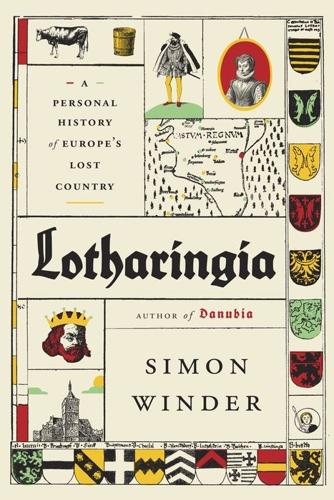
Lotharingia: A Personal History of Europe's Lost Country
by
Simon Winder
Published 22 Apr 2019
There was great anxiety that the Catholic Council of Trent (1545–63) had, through agreement on doctrine and discipline, successfully re-launched Catholicism. Newspapers and sermons were full of horror stories about, for example, the successful sweeping away of Protestants from much of Austria by the resurgent Habsburgs: churches blown up, books burned and the corpses of those buried as heretics dug up and thrown into the streets. The Dordrecht church remains as a sort of enormous bell jar preserving the atmosphere of that synod. Its whitewashed walls and mostly clear glass express a sober aesthetic which would have been matched by the relentlessly black-and-white clothing of the delegates (in contrast to the Fellini-esque Council of Trent, where it must have been sometimes hard to hear yourself speak over the sound of swishing silks).
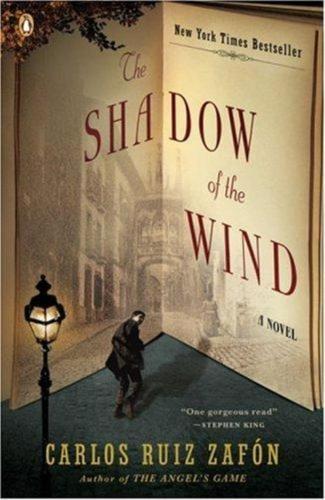
The Shadow of the Wind
by
Carlos Ruiz Zafón
Published 15 Nov 2004
That very night Cabestany's warehouse in Pueblo Nuevo went up in flames, and Julian's books went with it.' 'Except for the ones you rescued and hid in the Cemetery of Forgotten Books.' 'That's right.' 'Have you any idea why anyone would have wanted to burn all of Julian Carax's books?' 'Why are books burned? Through stupidity, ignorance, hatred . . . goodness only knows.' 'Why do you think?' I insisted. 'Julian lived in his books. The body that ended up in the morgue was only a part of him. His soul is in his stories. I once asked him who inspired him to create his characters, and his answer was no one.
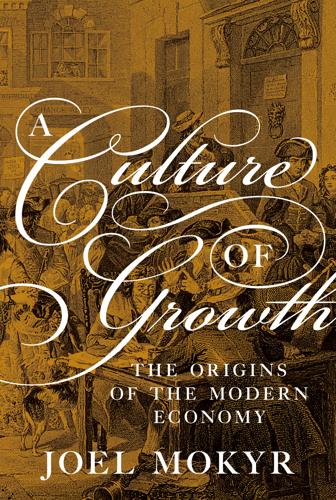
A Culture of Growth: The Origins of the Modern Economy
by
Joel Mokyr
Published 8 Jan 2016
Whiston wrote a highly successful book popularizing Newton’s work and went on to obtain patronage from the nobility, while Clarke retained his rectorship at St James’s in London. 23 Jean-Jacques Rousseau still found himself persona non grata at Montmorency after the 1762 publication of Émile, and ended up traveling throughout Europe, especially in Switzerland and Britain, but soon all was forgiven, and he was able to live out his last decade in France. Claude-Adrien Helvétius’s De l’Esprit, published in 1758, was condemned by the Sorbonne and the books burned in public; Helvétius had to formally retract his ideas and found himself in England, later on in Potsdam. Yet the entire reaction did not last, and in 1765 he was allowed to return to France and back in favor again. Even more striking is the history of the radical atheist gadfly Julien La Mettrie (1709–1751), whose heretical works first forced him to take refuge in Leyden, but even there his hedonism so annoyed his hosts that he was forced to leave for Berlin, where Frederick the Great delighted in his often outrageous opinions.

The Splendid and the Vile: A Saga of Churchill, Family, and Defiance During the Blitz
by
Erik Larson
Published 14 Jun 2020
Colville learned German and burnished his skills during two stays in Germany, first in 1933, shortly after Hitler became chancellor of Germany, and a second time in 1937, when Hitler was asserting full control. At first Colville found the enthusiasm of the German populace infectious, but over time he grew uneasy. He witnessed a book burning in Baden-Baden and later attended one of Hitler’s speeches. “I had never before, and have never since, seen an exhibition of mass-hysteria so universal in its scope,” he wrote. That same year he joined the Foreign Office in its diplomatic service division, which supplied 10 Downing with its private secretaries.

Germany
by
Andrea Schulte-Peevers
Published 17 Oct 2010
Next up is the Humboldt Universität (Map), Berlin’s oldest university where Marx and Engels studied and the Brothers Grimm and Albert Einstein taught. It occupies the palace of Prince Heinrich, brother of King Frederick the Great, whose pompous equestrian statue stands on Unter den Linden outside the university. It was Frederick who created the ensemble of stately structures framing Bebelplatz (Map), the site of the first big official Nazi book-burning in May 1933. Beneath a glass pane at the square’s centre Micha Ullmann’s Empty Library commemorates the barbaric event. Surrounding the square are the baroque Alte Königliche Bibliothek (Old Royal Library; Map; 1780), now part of the university; the Staatsoper Unter den Linden (State Opera; 1743, Click here); and the copper-domed St Hedwigskirche (Map; 1783).
…
Otherwise proceed from Quartier 205 by turning left on Mohrenstrasse to get to Gendarmenmarkt, Berlin’s most beautiful square. It’s anchored by Schinkel’s Konzerthaus Berlin (23; Click here) and the sumptuous towers of the Deutscher Dom (24; Click here) and the Französischer Dom (25; Click here). Walk north on Markgrafenstrasse, then east on Behrenstrasse to Bebelplatz, site of the infamous Nazi book burnings in 1933. A trio of imposing 18th-century buildings stand on this austere square: the Alte Königliche Bibliothek (26; Old Royal Library), the St-Hedwigskirche (27) and the Staatsoper Unter den Linden (28; Click here). Nearby is the epic Reiterdenkmal Friedrich des Grossen (29), an equestrian statue of the king who financed this lovely ensemble
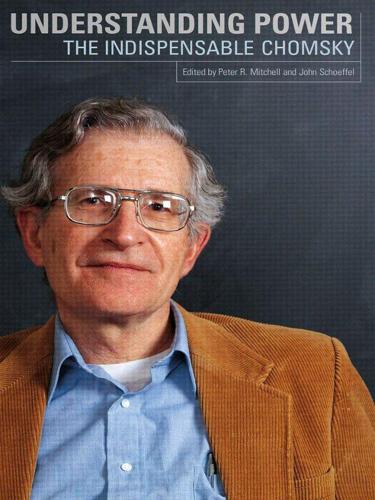
Understanding Power
by
Noam Chomsky
Published 26 Jul 2010
That was in Toronto. Yeah, I was there. I mean, I think people have a right to burn books if they want. I was in fact interviewed about it, I said the obvious thing—I’d rather they read them than burn them, but if they want to burn them, I don’t care. Actually, you don’t really have to worry about burning books—burning books is virtually impossible. Books are like bricks: they’re very hard to burn. MAN: Was that a popular rabble or something? How did it happen? It was actually Vietnamese refugees. There’s a Vietnamese refugee community that heard, or decided, or whatever, that I was … I don’t know what. It was impossible to find out what they’d heard.
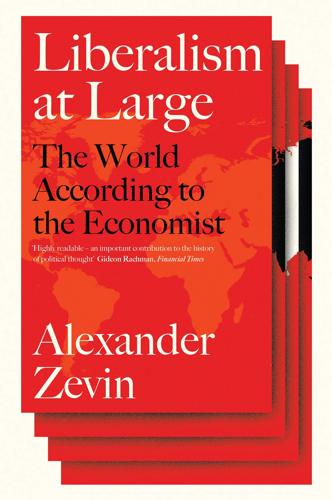
Liberalism at Large: The World According to the Economist
by
Alex Zevin
Published 12 Nov 2019
When Schacht put an end to debt payments that June, however, the paper shrugged this off as inevitable, while it all but cheered the Anglo-German Payments Union sealed the next year.148 It was a Layton family vacation to Cornwall in late August that allowed Douglas Jay to slip in one of the Economist’s few open attacks on the regime – a review of The Brown Book of the Hitler Terror, which claimed that Nazis had started the Reichstag blaze to solidify their grip on power and purge their Communist opponents. With only Graham Hutton and Geoffrey Crowther in the office, the unfiltered leader ran, accusing the Third Reich of an ‘orgy of barbarism and brutality’, whose concentration camps, anti-Semitic killings and book burnings were ‘the direct consequence of incitement by Nazi leaders’ and ‘bound to produce a shock of revulsion and horror throughout the civilized world’.149 An indignant letter immediately arrived from the German finance minister, Count Schwerin von Krosigk. ‘As you know, for many years I have had the highest admiration for you and your journal’, he wrote, addressing Layton.
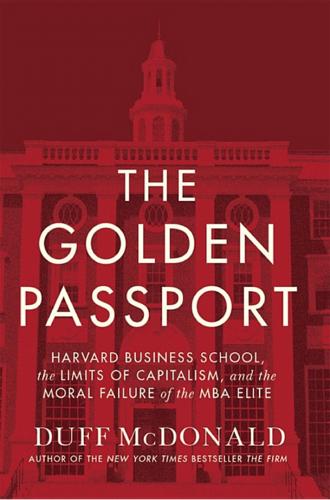
The Golden Passport: Harvard Business School, the Limits of Capitalism, and the Moral Failure of the MBA Elite
by
Duff McDonald
Published 24 Apr 2017
And he was a scientific advisor to McGeorge Bundy, the national security assistant to Presidents Kennedy and Johnson.16 Schlaifer stayed closer to Soldiers Field, where, among other things, he designed a new course for first-year students, based on Bayesian methods, titled “Managerial Economics Reporting and Control,” or MERC for short. In 1970, students were outraged at the $17.50 price of the accompanying textbook, Analysis of Decisions Under Uncertainty, and held a book burning on the steps of Baker Library. (Again, it was 1970.) “This is the most unclearly written book in the English language on the subject,”17 said one student, somewhat unclearly himself. Asked by a reporter from the Harvard Crimson to comment, Schlaifer replied, “Well for Heaven’s sake! I guess they burned it because they find the book difficult.
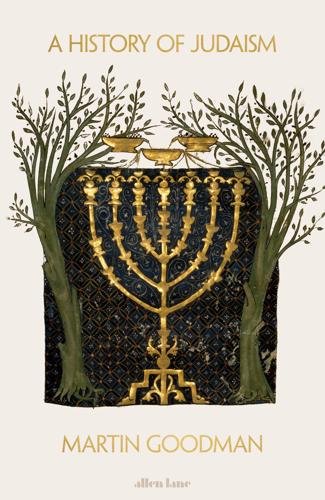
A History of Judaism
by
Martin Goodman
Published 25 Oct 2017
What is clear, however, is that neither extreme was standard, so that many halakhists indulged in kabbalistic speculation and no medieval kabbalists believed their mystical insights to absolve themselves and other Jews from the need to follow the halakhah scrupulously. The kabbalists of Provence had led the opposition to the philosophy of Maimonides which ended in the disastrous book burning of 1232, but we have seen that Maimonides’ Aristotelianism had not prevented Avraham Abulafia seeing his own prophetic kabbalah as founded on Maimonides’ teaching. More positively, the Neoplatonic tradition in Jewish philosophy, which can be traced back to Isaac b. Solomon Israeli in Kairouan in the first half of the tenth century and the citations of Plato by ibn Gabirol in Andalusia in his Fons Vitae, had a direct influence on the author of Sefer haBahir through the twelfth-century Spanish philosopher Avraham bar Hiyya.
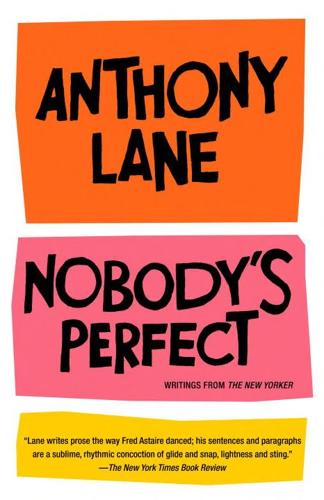
Nobody's Perfect: Writings From the New Yorker
by
Anthony Lane
Published 26 Aug 2002
Looking back on it, you think of a family saga, of dull days peppered with minor squabbles; but in its demure way the film has the reach, if not the extravagance, of epic. The action runs from 1953 to 1967, a stretch of history plastered with the slogans of Maoist ambition—the Rectification Movement, the Great Leap Forward, the book-burning bonanza of the Cultural Revolution. I particularly relished the scene where someone rushes in and cries “The Neighborhood Committee wants to talk to you about collectivization!” with all the excitement of a scalper waving a handful of Streisand tickets. It brings back the old, unanswerable question: With five hundred million people to choose from, how come Mao couldn’t find a decent copywriter?
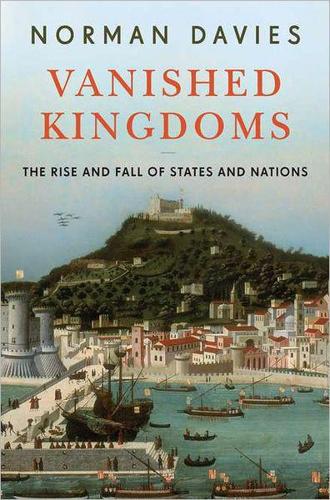
Vanished Kingdoms: The Rise and Fall of States and Nations
by
Norman Davies
Published 30 Sep 2009
In the eyes of those who admire the Ordensstaat and regret its misfortunes, the Treaty of Thorn has been described as the start of the ‘partitions of Prussia’.44 The history of Royal Prussia, which fell into the Polish orbit, is little known to those who approach the Prussian story from an exclusively German perspective. (The subject was actively suppressed by bans and book-burnings when the Hohenzollerns eventually took over.) Yet for 300 years this ‘Other Prussia’ flourished, not only as a separate institutional entity, but as the source of a separate political ideology and culture, based on concepts of freedom and liberty. Though the population was ethically mixed, Polish and German – with a strong German predominance in the cities – the corporate identity and fierce local patriotism of Royal Prussia digressed markedly from the values with which the name of ‘Prussia’ is usually associated.45 Royal Prussia’s territory consisted of the valley of the lower Vistula from the river’s ‘elbow’ near Thorn to the Baltic coast, plus the protruding province of Varmia.

Vanished Kingdoms: The History of Half-Forgotten Europe
by
Norman Davies
Published 27 Sep 2011
In the eyes of those who admire the Ordensstaat and regret its misfortunes, the Treaty of Thorn has been described as the start of the ‘partitions of Prussia’.44 The history of Royal Prussia, which fell into the Polish orbit, is little known to those who approach the Prussian story from an exclusively German perspective. (The subject was actively suppressed by bans and book-burnings when the Hohenzollerns eventually took over.) Yet for 300 years this ‘Other Prussia’ flourished, not only as a separate institutional entity, but as the source of a separate political ideology and culture, based on concepts of freedom and liberty. Though the population was ethically mixed, Polish and German – with a strong German predominance in the cities – the corporate identity and fierce local patriotism of Royal Prussia digressed markedly from the values with which the name of ‘Prussia’ is usually associated.45 Royal Prussia’s territory consisted of the valley of the lower Vistula from the river’s ‘elbow’ near Thorn to the Baltic coast, plus the protruding province of Varmia.
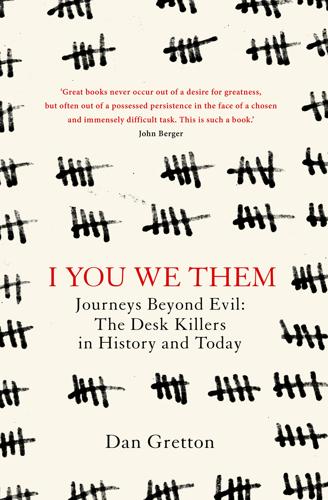
I You We Them
by
Dan Gretton
In South-West Africa, Heinrich Heine’s famous reflection that ‘where they have burned books, they will end in burning human beings too’ was reversed – most of the Herero and Nama had long been exterminated by the time they got round to burning the evidence.1 On 10 May 1933, the Nazis began their notorious book-burning campaign at Opernplatz in Berlin. As Goebbels addressed the students on that night, telling them, ‘You do well in this midnight hour to commit to the flames the evil spirit of the past,’2 I wonder whether anybody in that crowd knew that six years earlier, the Germans and South Africans had started burning books in Windhoek, destroying the history they didn’t want to live with, imposing a Silence of the Fathers that wouldn’t be broken for almost fifty years.

Germany Travel Guide
by
Lonely Planet
The entrance is on the eastern side of the memorial, near Cora-Berliner-Strasse. Bebelplatz MEMORIAL Offline map Google map (Bebel Square; 100, 200, Französische Strasse, Hausvogteiplatz) On this treeless square, books by Brecht, Mann, Marx and other ‘subversives’ went up in flames during the first full-blown public book burning, staged by the Nazi German Student League in 1933. Michael Ullmann’s underground installation, Empty Library, beneath a glass pane at the square’s centre, poignantly commemorates the event. Surrounding the square is a trio of handsome 18th-century buildings constructed under King Frederick the Great: the Alte Königliche Bibliothek (Old Royal Library; 1780); the Staatsoper Unter den Linden (State Opera; 1743); and the copper-domed St Hedwigskirche (1783).

The Secret World: A History of Intelligence
by
Christopher Andrew
Published 27 Jun 2018
The creation in 1571 of a new Congregation for the Index of Prohibited Books did little to clear up the confusion. Good scholars such as the Jesuit theologian Robert Bellarmine (later canonized) worked alongside those whom Bellarmine’s biographer calls ‘the incompetents, boneheads and bunglers of the Index’. Among the books burned in Rome’s Campo de’ Fiori were unauthorized translations of the Bible into the vernacular.38† In all authoritarian regimes, the machinery of censorship is doomed to become ridiculous. The combination of creative writing and counter-subversion leads inevitably to absurdity. The Holy Office led the way.
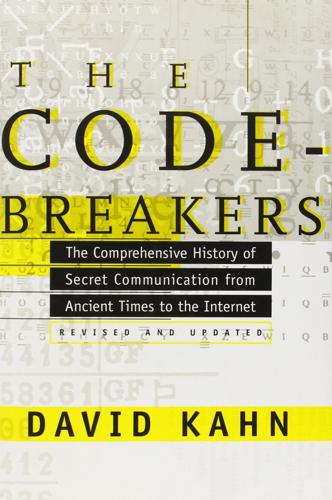
The Codebreakers: The Comprehensive History of Secret Communication From Ancient Times to the Internet
by
David Kahn
Published 1 Feb 1963
Harding was elected President, McLean explained, he himself was made a special agent of the Department of Justice and was given a little card, a badge, and the Justice Department code. The sender of the January 9 message, William O. Duckstein, McLean’s private secretary, was a former Justice agent who seems simply to have kept the book. Burns later took the stand to explain to the committee that when he came into the Justice Department he found that the old code was so widely held that he had a new one made up, only two copies of which were given to each branch. He instructed the agents in charge “that whenever an agent went out on a more important case, where it would require the use of an absolutely secret code in order to communicate with either me or the local office, they were to use this new secret code.

Lonely Planet China (Travel Guide)
by
Lonely Planet
and
Shawn Low
Published 1 Apr 2015
Above him are the characters for ‘wanshi shibiao’, meaning ‘model teacher for all ages’. South of Chongsheng Hall (Chongsheng Ci), which was once the site of the original family temple, the Lu Wall (Lu Bi) stands where Confucius’ ninth generation descendant hid Confucius’ writings in the walls of his house during Emperor Qin Shi Huang’s book-burning campaign around 213 BC. The texts were uncovered during an attempt to raze the grounds in 154 BC, spurring new schools of Confucian scholarship and long debates over what Confucius really said. Confucius MansionMUSEUM (Kong Fu MAP GOOGLE MAP ; admission included in combination ticket or ¥60; h8am-5.15pm) Next to Confucius Temple is this maze of living quarters, halls, studies and more studies.